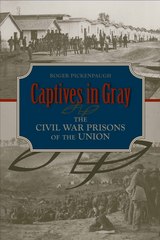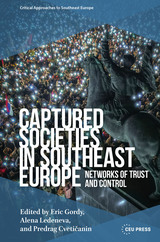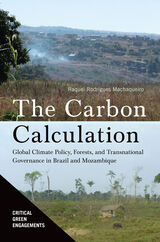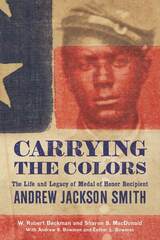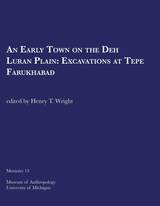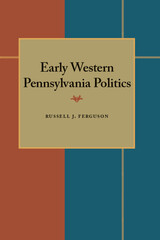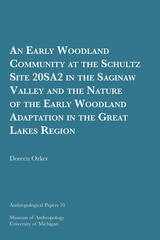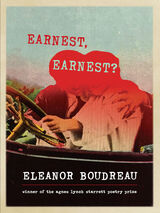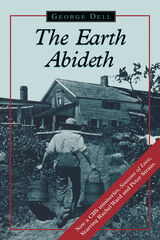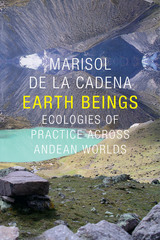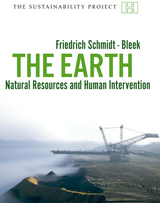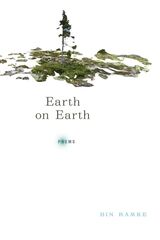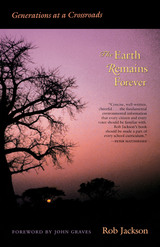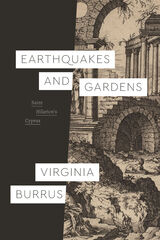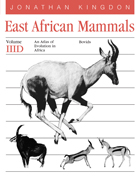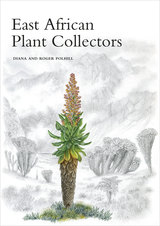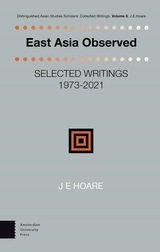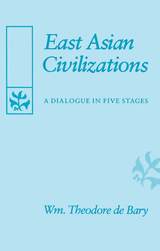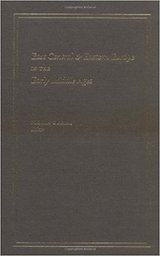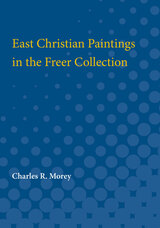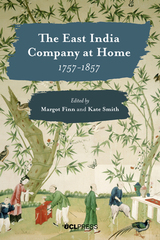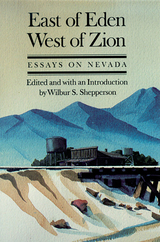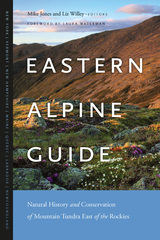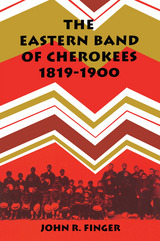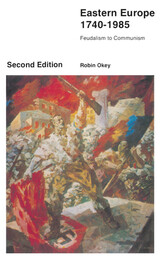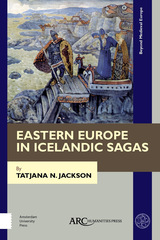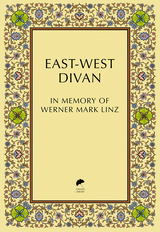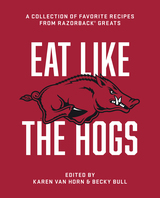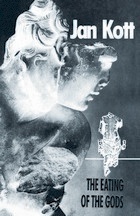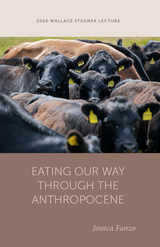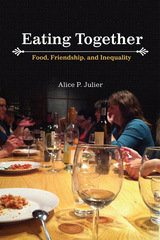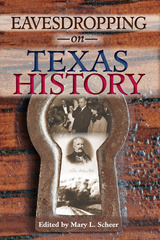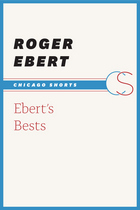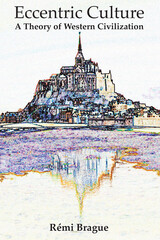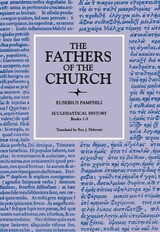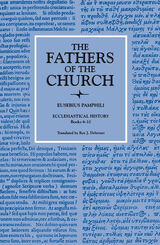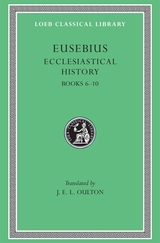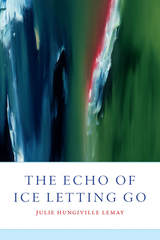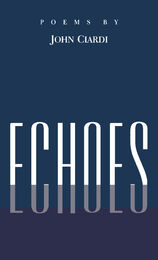 An Early Text on the History of Rwa sgreng Monastery: The Rgyal ba’i dben gnas rwa sgreng gi bshad pa nyi ma’i ’od zer of ’Brom Shes rab me lce
Maho Iuchi
Harvard University Press This monograph is a study of the Rgyal ba'i dben gnas rwa sgreng gi bshad pa nyi ma'i 'od zer (Rays of the Sun: A Statement about Rwa sgreng Monastery, Hermitage of the Victor), which is a newly discovered hand-written manuscript from the Fifth Dalai Lama’s private library at 'Bras spungs monastery, Lhasa. It is the first known work devoted solely to Rwa sgreng monastery, the mother monastery of the Bka' gdams school founded by 'Brom ston Rgyal ba'i 'byung gnas (1005–1064) in 1057 after the death of his master Atiśa (982–1054).
The Bka' gdams school no longer exists, but it has greatly influenced major schools of Tibetan Buddhism, such as Dge lugs, Bka' brgyud, and Sa skya school. Rwa sgreng monastery itself has shifted to the Dge lugs school, but it still has a strong presence as a monastery related to Bka' gdams school. Since this work was written at approximately the end of the thirteenth century, it is a relatively early text in the history of the Bka' gdams school, and it provides valuable historical, political, and sociological data on Rwa sgreng monastery.
This study aids understanding of the history of Rwa sgreng monastery and the early Bka' gdams school—and more broadly illuminates important aspects of Tibetan history.
 An Early Tibetan Survey of Buddhist Literature: The Bstan pa rgyas pa rgyan gyi nyi ‘od of Bcom Idan ral gri
Kurtis R. Schaeffer
Harvard University Press This volume is a study and edition of Bcom Idan ral gri's (1227-1305) Bstan pa rgyas pa rgyan gyi nyi 'od. Likely composed in the last decades of the thirteenth century, this systematic list of Buddhist Sutras, Tantras, Shastras, and related genres translated primarily from Sanskrit and other Indic languages holds an important place in the history of Buddhist literature in Tibet. It affords a glimpse of one Tibetan scholar's efforts to classify more than two thousand titles of Buddhist literature in the decades before the canonical collections known as the Bka' 'gyur and the Bstan 'gyur achieved a relatively stable form. Tibetan historiography traces the origin of the Bka' 'gyur and Bstan 'gyur to Bcom ldan ral gri's efforts, though the unique structure of the Bstan pa rgyas pa rgyan gyi nyi 'od, which differs greatly from available Bka' 'gyur and Bstan 'gyur catalogs, shows that the situation is more complex.
Known to contemporary scholars of Tibetan literature for some time through mention in other works, Bcom ldan ral gri's survey has recently become available for the first time in two manuscripts. The present work contains a detailed historical introduction, an annotated edition of the two manuscripts, as well as concordances and appendices intended to aid the comparative study of early Tibetan collections of Indic Buddhist literature.
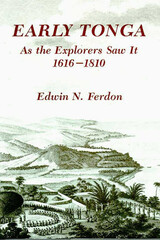 Early Tonga As the Explorers Saw It, 1616–1810
Edwin N. Ferdon
University of Arizona Press, 1987 Ethnographic observations and experiences on the Tongan Islands up to 1810—just prior to intensive Christian missionary activities—provide an early historic baseline of culture for those interested in alter culture change in Tonga, the only Polynesian island group that has never been ruled by outsiders. Ferdon has drawn on a variety of records to provide a well-documented and highly readable account of major aspects of Tongan life—material culture, government, food and drink, recreation, customs, trade, and warfare—at the time when European influences were only beginning to modify traditional island patterns.
The ethnohistorical approach to early Tongan culture offers not only a fascinating glimpse into a world long past but also a basis for the comparative study of European acculturation throughout Polynesia.
Edwin N. Ferdon first became interested in early Polynesia while serving as an archaeologist with Thor Heyerdahl’s 1955 expedition to Easter Island. He is also the author of Early Tahiti As the Explorers Saw It, 1767–1797.
An Early Town on the Deh Luran Plain: Excavations at Tepe Farukhabad
Edited by Henry T. Wright
University of Michigan Press, 1981 The site of Tepe Farukhabad, in southwestern Iran, dates to the fourth millenium BC. In this monograph, editor Henry T. Wright presents archaeological data from the Tepe Farukhabad excavations. For each phase of the site, the authors give detailed descriptions of the structures and artifacts, including ceramics, stone, bone, metal, textile, and faunal remains. With his interpretation of this data, Wright advances our understanding of early exchange in southwest Asia and of development of early states.
 Early Village Life at Beidha, Jordan: Neolithic spatial organization and vernacular architecture
Brian Byrd
Council for British Research in the Levant, 2005 This book explores the spatial organization and vernacular architecture of the Early Neolithic village of Beidha in southern Jordan. This is a case study rigorously investigating changes in community organization associated with early sedentism and food production in Southwest Asia. Diana Kirkbride-Helbæk's extensive fieldwork at Beidha yielded a considerable occupation span, extensive horizontal exposure, numerous excavated buildings with well preserved architecture and features, and a relative abundance of in situ artefacts. These broad horizontal excavations revealed a moderately sized early farming community dating to the middle of the Pre-Pottery Neolithic B period, primarily after 7000 BC. The first three chapters of the book place the early village of Beidha within the context of the origins of sedentism and food production; provide an overview of the site and the excavations; and present the analytical approach and the methods used in this study, as well as the final phasing model for the history of the settlement. The subsequent two chapters detail the stratigraphy and chronology of the early Neolithic village, and examine the built environment and architecture, focusing on the construction, remodeling, and use life of individual buildings. The next two chapters explore, by phase, architectural patterning, continuity and change, and then community organization and the utilization of space. The book concludes with a broader consideration of emerging organizational trends expressed in the remarkable built environment of early Neolithic settlements in Southwest Asia. The results reveal that the successful establishment of sedentary food-producing villages was marked by novel social and economic developments, and the autonomization of households and formalization of corporate bodies represented important trends during this transition. These two organizational trends then formed the foundation upon which later, more complex social constructions were built.
Early Western Pennsylvania Politics
Russell J. Ferguson
University of Pittsburgh Press, 1938 The conflict between the Jeffersonian and Hamiltonian concepts of democracy was nowhere more vigorous or bitter than in Western Pennsylvania during the period when the region evolved from an agrarian to an industrial economy. This book traces the political aspects of this transformation step by step. The region's long allegiance to Jeffersonianism, was in part due to a group of plodding but shrewd politicians who remained in power until well after the War of 1812, before they were succeded by Hamiltonians. Ferguson profiles the major politicians and political events in the region from Revolutionary War times until the 1820s.
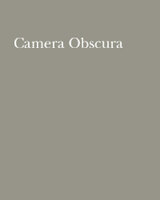 Early Women Stars, Volume 16
Jennifer M. Bean and Diane Negra, eds.
Duke University Press This special issue of Camera Obscura, which gathers work from leading feminists in film studies, takes a fresh look at early film and the creative ventures of women performers. While much of the existing scholarship of the silent era focuses on film form and industrial organization, the essays collected here aim to recover women’s roles in the early decades of cinema. They do so in part by considering the ways in which social and ideological economies of the industry contributed to the complex semiotics of film stardom of the period. Essays focus on figures across the wide international lexicon of stardom, including stunt star Pearl White, iconic French performer Musidora, imported European vamp Pola Negri, pixie heroine Colleen Moore, and Chinese star Xuan Jinglin. Other articles revisit figures, such as Mary Pickford and Greta Garbo, whose stardom appears to be self-evident but proves more complex than previous accounts have suggested. In this collection, early female stars function as a medium through which authors reconceptualize feminist film history and historiography. Contributors. Jennifer M. Bean, Vicki Callahan, Lucy Fischer, Amelie Hastie, Diane Negra, Gaylyn Studlar, Zhen Zhang
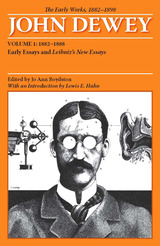 The Early Works of John Dewey, Volume 1, 1882 - 1898: Early Essays and Leibniz's New Essays, 1882-1888
John Dewey. Edited by Jo Ann Boydston
Southern Illinois University Press, 2008 Volume 1 of “The Early Works of John Dewey, 1882–1898” is entitled “Early Essays and Leibniz’s New Essays Concerning the Human Understanding, 1882–1888.” Included here are all Dewey’s earliest writings, from his first published article through his book on Leibniz. The materials in this volume provide a chronological record of Dewey’s early development—beginning with the article he sent to the Journal of Speculative Philosophy in 1881 while he was a high-school teacher in Oil City, Pennsylvania, and closing with his widely-acclaimed work on Leibniz in the Grigg’s Series of German Philosophical Classics, written when he was an Assistant Professor at the University of Michigan. During these years between 1882 and 1888, Dewey’s life course was established: he decided to follow a career in philosophy, completed doctoral studies at Johns Hopkins University, became an Instructor at the University of Michigan, was promoted to Assistant Professor, and accepted a position as Chairman of the Department of Philosophy at the University of Minnesota. With the publication of Psychology, he became well known among scholars in this country; a series of articles in the British journal Mind brought him prominence in British philosophical circles. His articles were abstracted in the Revue philosophique. None of the articles collected in this volume was reprinted during the author’s lifetime. For the first time, it is now possible for Dewey scholars to study consecutively in one publication all the essays which originally appeared in many periodicals.
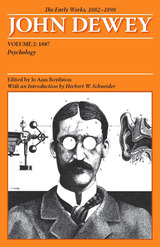 The Early Works of John Dewey, Volume 2, 1882 - 1898: Psychology, 1887
John Dewey. Edited by Jo Ann Boydston
Southern Illinois University Press, 2008 Psychology, John Dewey's first book, is an appropriate choice for volume one in the Southern Illinois University Press series "The Early Works of John Dewey, 1882-1898." This definitive edition of all Dewey's early writings stems from the complete and comprehensive collection of Dewey materials amassed since 1961 by the Co-operative Research on Dewey Publications Project at Southern Illinois University. The years covered by these volumes are commonly considered Dewey's formative period, beginning with the philosopher-educator's first published article when he was twenty-two years old and including the longer works written while he was chairman of two departments, Philosophy (which included psychology) and Pedagogy, at the University of Chicago. In these early years, as throughout his life, Dewey's interests were wide-ranging, but because many of his writings appeared in out-of-the-way journals and have not previously been reprinted, it has been difficult for students of his work to grasp and understand that range. In addition to illuminating the scope of his interests, the present edition, that offers all his works in approximately chronological order, serves to emphasize the organic quality of Dewey's thought.
With an original publication date of 1887, Psychology us Volume 2 of "The Early Works." It appears first in the series to introduce scholars and general readers to the use of modern textual criticism in a work outside the literary field. Designed as a "scholar's reading edition," the volumes presents the text of Dewey's work as the author intended, clear of editorial footnotes. All apparatus is conveniently arranged in appendix form. As evidence of its wide adoption and use as a college textbook, Psychology had a publishing history of twenty-six printings. For two of the reprintings, Dewey made extensive revisions in content to incorporate developments in the field of psychology as well as in his own thinking. The textual appendices include a thorough tabulation of these changes and detailed evidence for editorial decisions.
In recognition of the high quality and scholarly standards of the textual editing, this edition of Psychology is the first nonliterary work awarded the Seal of the Modern Language Association Center for Editions of American Authors. By applying to the work of a philosopher the procedures used in modern textual editions of American writers such as Hawthorne, the Southern Illinois University Dewey edition is establishing a pattern for future collected editions of the writings of American philosophers.
At the time Dewey wrote Psychology, the relation between psychology and philosophy was in dispute, and he attempted to incorporate the new physiological psychology represented by G. Stanley Hall into the philosophical system and ethics of George Sylvester Morris. He wrote in May, 1886, that he wanted his textbook in psychology to be one "with the greatest possible unity of principle, so that without ceasing to be a psychology, it shall be an introduction to philosophy in general." His goal, expressed in these terms, foreshadowed the direction of his work in the years that followed, with its continuing emphasis on the interrelations among the various disciplines rather than on separate specializations. In his long and fruitful professional career, this was to be his only attempt to treat the whole field of psychology systematically. Although he maintained a lively interest in psychology, that interest was expressed in connection with his writing in other areas such as ethics, education, logic, social philosophy and aesthetics.
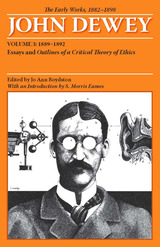 The Early Works of John Dewey, Volume 3, 1882 - 1898: Essays and Outlines of a Critical Theory of Ethics, 1889-1892
John Dewey. Edited by Jo Ann Boydston
Southern Illinois University Press, 2008 This third volume in the definitive edition of Dewey’s early work opens with his tribute to George Sylvester Morris, the former teacher who had brought Dewey to the University of Michigan. Morris’s death in 1889 left vacant the Department of Philosophy chairmanship and led to Dewey’s returning to fill that post after a year’s stay at Minnesota. Appearing here, among all his writings from 1889 through 1892, are Dewey’s earliest comprehensive statements on logic and his first book on ethics. Dewey’s marked copy of the galley-proof for his important article “The Present Position of Logical Theory,” recently discovered among the papers of the Open Court Publishing Company, is used as the basis for the text, making available for the first time his final changes and corrections. The textual studies that make The Early Works unique among American philosophical editions are reported in detail. One of these, “A Note on Applied Psychology,” documents the fact that Dewey did not co-author this book frequently attributed to him. Six brief unsigned articles written in 1891 for a University of Michigan student publication, the Inlander, have been identified as Dewey’s and are also included in this volume. In both style and content, these articles reflect Dewey’s conviction that philosophy should be used as a means of illuminating the contemporary scene; thus they add a new dimension to present knowledge of his early writing.
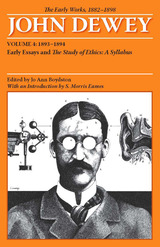 The Early Works of John Dewey, Volume 4, 1882 - 1898: Early Essays and The Study of Ethics, A Syllabus, 1893-1894
John Dewey. Edited by Jo Ann Boydston
Southern Illinois University Press, 2008 Volume 4 of’ “The Early Works” series covers the period of Dewey’s last year and one-half at the University of Michigan and his first half-year at the University of Chicago. In addition to sixteen articles the present volume contains Dewey’s reviews of six books and three articles, verbatim reports of three oral statements made by Dewey, and a full-length book, The Study of Ethics. Like its predecessors in this series, this volume presents a “clear text,” free of interpretive or reference material. Apparatus, including references, corrections, and emendations, is confined to appendix material. Fredson Bowers, the Consulting Textual Editor, has provided an essay on the textual principles and procedures, and Wayne A. R. Leys, Professor of Philosophy at Southern Illinois University, has written an Introduction discussing the relationship between Dewey’s writings of this period and his later work. That Dewey’s scholarship and writing was at an especially high level during 1893 and 1894 may be considered an index to the significance of this two-year period.
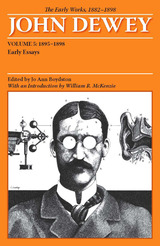 The Early Works of John Dewey, Volume 5, 1882 - 1898: Early Essays, 1895-1898
John Dewey. Edited by Jo Ann Boydston
Southern Illinois University Press, 2008 This fifth and concluding volume of “The Early Works of John Dewey” is the only one of the series made up entirely of essays. The appearance during the four-year period, 1895–98, of thirty-eight items amply indicates that Dewey continued to maintain a high level of published output. These were the years of Dewey’s most extensive work and involvement at the University of Chicago. Like its predecessors in this series, this volume presents a “clear text,” free of interpretive or reference material. Apparatus, including references, corrections, and emendations, is confined to appendix material. Fredson Bowers, the Consulting Textual Editor, has provided an essay on the textual principles and procedures, and William P. McKenzie, Professor of Philosophy and Education at Southern Illinois University, has written an introduction identifying the thread connecting the apparently diffuse material in the many articles of this volume—Dewey’s attempt to unite philosophy with psychology and sociology and with education.
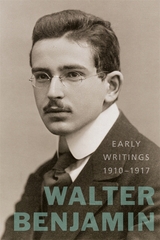 Early Writings (1910–1917)
Walter Benjamin
Harvard University Press, 2011 Walter Benjamin became a published writer at the age of seventeen. Yet the first stirrings of this most original of critical minds—penned during the years in which he transformed himself from the comfortable son of a haute-bourgeois German Jewish family into the nomadic, uncompromising philosopher-critic we have since come to appreciate—have until now remained largely unavailable in English. Early Writings, 1910-1917 rectifies this situation, documenting the formative intellectual experiences of one of the twentieth century's most resolutely independent thinkers.
Here we see the young Benjamin in his various roles as moralist, cultural critic, school reformer, and poet-philosopher. The diversity of interest and profundity of thought characteristic of his better-known work from the 1920s and 30s are already in evidence, as we witness the emergence of critical projects that would occupy Benjamin throughout his intellectual career: the role of the present in historical remembrance, the relationship of the intellectual to political action, the idea of truth in works of art, and the investigation of language as the veiled medium of experience.
Even at this early stage, a recognizably Benjaminian way of thinking comes into view—a daring, boundary-crossing enterprise that does away with classical antitheses in favor of the relentlessly-seeking critical consciousness that produced the groundbreaking works of his later years. With the publication of these early writings, our portrait of one of the most significant intellects of the twentieth century edges closer to completion.
Earnest, Earnest?: Poems
Eleanor Boudreau
University of Pittsburgh Press, 2020 Winner, Agnes Lynch Starrett Poetry Prize
Finalist, 2021 Eric Hoffer Award
Silver Medal, 2020 Florida Book Award
In Earnest, Earnest?, the speaker, Eleanor, writes postcards to her on-again-off-again lover, Earnest. The fact that her lover’s name is Earnest and that their relationship is fraught, raises questions of sincerity and irony, and whether both can be present at the same time. While Earnest can be read literally as Eleanor’s lover, he is best understood as another side of the poet’s self. The ambiguity at play in Earnest, Earnest? is embodied in the form of the “Earnest Postcards” that structure the book—these postcards are experimental in their use of images and formal in their dialogue with the sonnet. Thus, Earnest, Earnest? is a question of tone, address, and form.
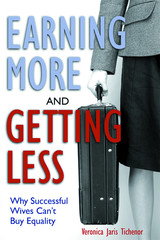 Earning More and Getting Less: Why Successful Wives Can't Buy Equality
Veronica Jaris Tichenor
Rutgers University Press, 2005 For nearly two decades the wage gap between men and women has remained virtually unchanged. Women continue to earn, on average, 80 cents for every dollar that men earn. Yet despite persistent discrimination in wages, studies are also beginning to show that a growing number of women are out-earning their husbands. Nationwide, nearly one-third of working women are the chief breadwinners in their families. The trend is particularly pronounced among the demographic of highly educated women. Does this increase in earnings, however, equate to a shift in power dynamics between husbands and wives?
In Earning More and Getting Less, sociologist Veronica Jaris Tichenor shows how, historically, men have derived a great deal of power over financial and household decisions by bringing home all (or most) of the family's income. Yet, financial superiority has not been a similar source of power for women. Tichenor demonstrates how wives, instead of using their substantial incomes to negotiate more egalitarian relationships, enable their husbands to perpetuate male dominance within the family.
Weaving personal accounts, in-depth interviews, and compelling narrative, this important study reveals disturbing evidence that the conventional power relations defined by gender are powerful enough to undermine hierarchies defined by money. Earning More and Getting Less is essential reading in sociology, psychology, and family and gender studies.
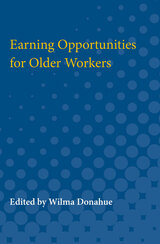 Earning Opportunities for Older Workers
Edited by Wilma Donahue
University of Michigan Press, 1955 Earning Opportunities for Older Workers considers the present-day barriers to continued employment of middle-aged and older men and women. Management, unions, and government officials discuss solutions to the problems of employment security, workmen's compensation, pension and insurance costs, and effective utilization of older workers. The aging worker is assessed with regard to changing capacities and skills, health, motivation, the need for counseling and retraining, and the feasibility of continued employment and flexible retirement practices. The problem of older women in the labor force is given special attention. The second half of the book is concerned with practical considerations and illustrations of methods for adapting jobs to fit the abilities of aging workers and for creating earning opportunities for older people who want and need employment but are no longer able to find it. Emphasis is placed upon what the individual can do for himself, and what the community, business, and government can do to meet the needs of people for continuing employment.
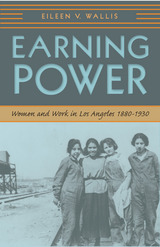 Earning Power: Women and Work in Los Angeles, 1880-1930
Eileen Wallis
University of Nevada Press, 2010 The half-century between 1880 and 1930 saw rampant growth in many American cities and an equally rapid movement of women into the work force. In Los Angeles, the city not only grew from a dusty cow town to a major American metropolis but also offered its residents myriad new opportunities and challenges.Earning Power examines the role that women played in this growth as they attempted to make their financial way in a rapidly changing world. Los Angeles during these years was one of the most ethnically diverse and gender-balanced American cities. Moreover, its accelerated urban growth generated a great deal of economic, social, and political instability. In Earning Power, author Eileen V. Wallis examines how women negotiated issues of gender, race, ethnicity, and class to gain access to professions and skilled work in Los Angeles. She also discusses the contributions they made to the region’s history as political and social players, employers and employees, and as members of families. Wallis reveals how the lives of women in the urban West differed in many ways from those of their sisters in more established eastern cities. She finds that the experiences of women workers force us to reconsider many assumptions about the nature of Los Angeles’s economy, as well as about the ways women participated in it. The book also considers how Angelenos responded to the larger national social debate about women’s work and the ways that American society would have to change in order to accommodate working women. Earning Power is a major contribution to our understanding of labor in the urban West during this transformative period and of the crucial role that women played in shaping western cities, economies, society, and politics.
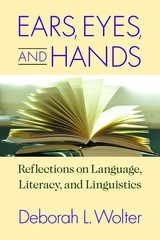 Ears, Eyes, and Hands: Reflections on Language, Literacy, and Linguistics
Deborah L. Wolter
Gallaudet University Press, 2018 Ears, Eyes, and Hands presents the author’s reflections on language, literacy, and linguistics that have been shaped by her deafness and by her work as an educator. In short, engaging narratives, Deborah L. Wolter exposes deeply entrenched attitudes and stereotypes regarding language, bringing to bear her own experiences as a deaf person as well as her interactions with children from varying backgrounds.
Wolter reveals and rectifies the impact of deficit mindsets in the educational system regarding race, ethnicity, economic status, gender, and disability. As a literacy specialist, she works with students who fall through the cracks in a system that strives to embrace the diverse backgrounds and abilities found in the classroom. Her passion for engaging students and cultivating literacy shines in the stories she tells, which serve as parables that allow readers to evaluate their own attitudes and assumptions. Educators, parents, and community members will benefit from Wolter’s examination of sociolinguistics and language privilege as she identifies how ethnocentrism and ableism are contributing to negative educational outcomes for some students. With humor and warmth, she offers a path toward approaching language and listening as a gateway to connection and understanding, both inside the classroom and beyond.
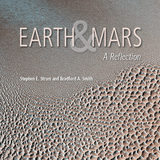 Earth and Mars: A Reflection
Stephen E. Strom and Bradford A. Smith
University of Arizona Press, 2015 Nearly five billion years ago, Earth and Mars were born together as planetary siblings orbiting a young, emerging Sun. Yet today, one planet is water rich and life bearing, while the other is seemingly cold, dry, and forbidding.
Earth and Mars is a fusion of art and science, a blend of images and essays celebrating the successful creation of our life-sustaining planet and the beauty and mystery of Mars. Through images of terrestrial landscapes and photographs selected from recent NASA and European Space Agency missions to Mars, Earth and Mars reveals the profound beauty resulting from the action of volcanism, wind, and water. The accompanying text provides a context for appreciating the role of these elemental forces in shaping the surfaces of each planet, as well as the divergent evolutionary paths that led to an Earth that is teeming with life, and Mars that is seemingly lifeless.
Earth and Mars inspires reflection on the extraordinarily delicate balance of forces that has resulted in our good fortune: to be alive and sentient on a bountiful blue world.
Earth Beings: Ecologies of Practice across Andean Worlds
Marisol de la Cadena
Duke University Press, 2015 Earth Beings is the fruit of Marisol de la Cadena's decade-long conversations with Mariano and Nazario Turpo, father and son, runakuna or Quechua people. Concerned with the mutual entanglements of indigenous and nonindigenous worlds, and the partial connections between them, de la Cadena presents how the Turpos' indigenous ways of knowing and being include and exceed modern and nonmodern practices. Her discussion of indigenous political strategies—a realm that need not abide by binary logics—reconfigures how to think about and question modern politics, while pushing her readers to think beyond "hybridity" and toward translation, communication that accepts incommensurability, and mutual difference as conditions for ethnography to work.
 Earth Diplomacy: Indigenous American Art, Ecological Crisis, and the Cold War
Jessica L. Horton
Duke University Press, 2024 In Earth Diplomacy, Jessica L. Horton reveals how Native American art in the mid-twentieth century mobilized Indigenous cultures of diplomacy to place the earth itself at the center of international relations. She focuses on a group of artists, including Pablita Velarde, Darryl Blackman, and Oscar Howe, who participated in exhibitions and lectures abroad as part of the United States’s Cold War cultural propaganda. Horton emphasizes how their art modeled a radical alternative to dominant forms of statecraft, a practice she calls “earth diplomacy”: a response to extractive colonial capitalism grounded in Native ideas of deep reciprocal relationships between humans and other beings that govern the world. Horton draws on extensive archival research and oral histories as well as analyses of Indigenous creative work, including paintings, textiles, tipis, adornment, and artistic demonstrations. By interweaving diplomacy, ecology, and art history, Horton advances Indigenous frameworks of reciprocity with all beings in the cosmos as a path to transforming our broken system of global politics.
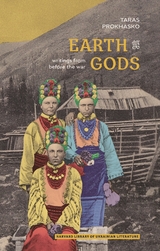 Earth Gods: Writings from before the War
Taras Prokhasko
Harvard University Press, 2024 Earth Gods presents the early writings of Taras Prokhasko, one of Ukraine’s most prominent contemporary writers. Collected here for the first time in one book, these works span various genres yet form a single chronicle. Anna’s Other Days, Prokhasko’s first publication, testifies to the desire to free Ukrainian culture of overt influences of voices, styles, and genres that have dominated it for centuries. FM Galicia collects reflections delivered by the author at a Ukrainian radio show over a five-month period. Emphasizing the relevance of the oral genre as the origin of the text, Prokhasko has created a unique diary that strives to exist outside of literature and invites the reader to meditate on the human condition. The UnSimple—a novel whose action unfolds between the two world wars near Ialivets, in the Ukrainian Carpathian Mountains—documents the collapse of the grand narratives of the past, embodied here by the Carpathian earth gods who, despite their magical powers, are unable to save the patriarchal community they’ve been entrusted with from being overrun by the forces of modernization.
A master of reflexive, finely nuanced prose, Prokhasko weaves together narrative strands testifying to the sophistication and integration of Ukrainian culture with the world.
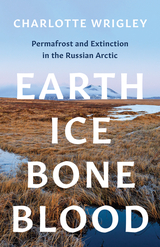 Earth, Ice, Bone, Blood: Permafrost and Extinction in the Russian Arctic
Charlotte Wrigley
University of Minnesota Press, 2023 Exploring one of the greatest potential contributors to climate change—thawing permafrost—and the anxiety of extinction on an increasingly hostile planet
Climate scientists point to permafrost as a “ticking time bomb” for the planet, and from the Arctic, apocalyptic narratives proliferate on the devastating effects permafrost thaw poses to human survival. In Earth, Ice, Bone, Blood, Charlotte Wrigley considers how permafrost—and its disappearance—redefines extinction to be a lack of continuity, both material and social, and something that affects not only life on earth but nonlife, too. Earth, Ice, Bone, Blood approaches the topic of thawing permafrost and the wild new economies and mitigation strategies forming in the far north through a study of the Sakha Republic, Russia’s largest region, and its capital city Yakutsk, which is the coldest city in the world and built on permafrost. Wrigley examines people who are creating commerce out of thawing permafrost, including scientists wishing to recreate the prehistoric “Mammoth steppe” ecosystem by eventually rewilding resurrected woolly mammoths, Indigenous people who forage the tundra for exposed mammoth bodies to sell their tusks, and government officials hoping to keep their city standing as the ground collapses under it. Warming begets thawing begets economic activity— and as a result, permafrost becomes discontinuous, both as land and as a social category, in ways that have implications for the entire planet. Discontinuity, Wrigley shows, eventually evolves into extinction. Offering a new way of defining extinction through the concept of “discontinuity,” Earth, Ice, Bone, Blood presents a meditative and story-focused engagement with permafrost as more than just frozen ground.
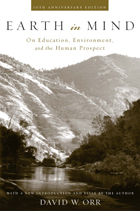 Earth in Mind: On Education, Environment, and the Human Prospect
David W. Orr
Island Press, 2004 In Earth in Mind, noted environmental educator David W. Orr focuses not on problems in education, but on the problem of education. Much of what has gone wrong with the world, he argues, is the result of inadequate and misdirected education that: - alienates us from life in the name of human domination
- causes students to worry about how to make a living before they know who they are
- overemphasizes success and careers
- separates feeling from intellect and the practical from the theoretical
- deadens the sense of wonder for the created world
The crisis we face, Orr explains, is one of mind, perception, and values. It is, first and foremost, an educational challenge. The author begins by establishing the grounds for a debate about education and knowledge. He describes the problems of education from an ecological perspective, and challenges the "terrible simplifiers" who wish to substitute numbers for values. He follows with a presentation of principles for re-creating education in the broadest way possible, discussing topics such as biophilia, the disciplinary structure of knowledge, the architecture of educational buildings, and the idea of ecological intelligence. Orr concludes by presenting concrete proposals for reorganizing the curriculum to draw out our affinity for life.
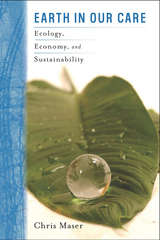 Earth in Our Care: Ecology, Economy, and Sustainability
Maser, Chris
Rutgers University Press, 2009 "What about the twenty-first century? Will we finally accept our responsibilities as guardians of planet Earth, the biological living trust, for the beneficiaries, the children of today, tomorrow, and beyond? Or, will it too be a century of lethal, economic struggle among the polarized positions of the supremely dysfunctional among us? Are they—once again—to be allowed to determine the legacy we, as a society, as a nation, bequeath those who follow us? The choice is ours, the adults of the world. How shall we choose?" So writes Chris Maser in this compelling study of three interactive spheres of the ecosystem: atmosphere (air), litho-hydrosphere (rock that comprises the restless continents and the water that surrounds them), and biosphere (all life sandwiched in between). Rich in detail and insightful analogies, Earth in Our Care addresses key issues including land-use policies, ecological restoration, forest management, local living, and sustainability thinking. Exploring our interconnectedness with the Earth, Maser examines today's problems and, more importantly, provides solutions for the future.
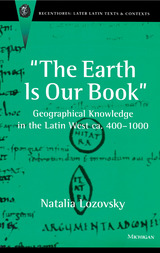 The Earth Is Our Book: Geographical Knowledge in the Latin West ca. 400-1000
Natalia Lozovsky
University of Michigan Press, 2000 "Early medieval geographical tradition resembles Andersen's ugly duckling. It often gets scolded and cannot find a place of its own, all because people almost invariably misunderstand its true nature." Thus begins Natalia Lozovsky's new book, The Earth Is Our Book: Geographical Knowledge in the Latin West ca. 400-1000. Filling a gap in the field of medieval studies, which has traditionally marginalized or ignored medieval geography altogether, Lozovsky explores medieval scholars' perceptions and representations of geographical space, how geographical knowledge fit into medieval society, and how this knowledge was taught and transmitted.
Tackling an impressive array of primary and secondary sources--including a variety of late antique and early medieval texts--Lozovsky examines early medieval geography as it existed in other fields of learning: theology, history, and natural science. She expounds on the use of published resources by examining the nature of geographical knowledge in the Middle Ages. She draws on unpublished sources--such as school commentaries--for the rich information they provide about geographical education during that period. For many scholars of medieval studies, early medieval geographical texts have more philological than geographical value. Lozovsky's work provides an insightful, alternative interpretation.
Those interested in history, medieval studies, ethnography, science, education, religion, Latin studies, and, of course, geography, will find this book a most fascinating read.
Natalia Lozovsky is an instructor in the Department of History, University of Colorado, Boulder.
 Earth, Moon, and Planets: 3rd Edition
Fred L. Whipple
Harvard University Press The increase in our knowledge of the solar system during the five years since the author last revised this book (1963) greatly exceeds that in the previous two decades. The program of the U.S. National Aeronautics and Space Administration and the space program of the U.S.S.R. have been prime contributors to this rapid progress, but the impetus has carried over to groundbased studies of the Moon and planets as well. The advances in radio and radar astronomy alone are striking, and are continuing at an accelerating pace.
This third edition of Mr. Whipple's popular and authoritative book is thoroughly revised in light of this new knowledge. The most extensive revisions are in the chapters on the Moon, Mars, and Venus--the members of the solar system on which the various space programs have concentrated. The author has included many new and dramatic illustrations in this third edition, among them photographs taken from U.S. and Russian space craft. There are striking photographs of the Moon, with close-up views of its surface texture, pictures of Mars taken from Mariner IV, and radar pictures of Venus that "see through" that planet's obscuring cloud layer.
The book is written in nontechnical language and with a lucid, witty style that is readily understandable to the interested layman. Mathematics has been avoided, and scientific methods and processes are described in simple terms. In presenting the latest information about the planets and their moons, Mr. Whipple discusses their origin and evolution, motions, atmospheres, temperatures, surface conditions, the environment essential for life as we know it, and the possibilities of life outside the Earth. He concludes with a discussion of current theories about the origin of the solar system.
The Earth: Natural Resources and Human Intervention
Friedrich Schmidt-Bleek
Haus Publishing, 2009 Population growth mainly occurs in fast-developing, and developing nations. Can earth sustain this growth? How will the power shift? This book offers prospects on causes and effects of population growth and the age-ing population in industrialised countries.
Earth on Earth
Bin Ramke
Omnidawn, 2021 Poems that personally engage with the materiality and danger of earth.
A kind of translation of the thousand-year-old poem “Earth Took of Earth,” this book is an attempt to restate in personal, emotional terms a sense of both the danger of and the consolation given by earth itself. Many of these poems arose during a collaboration with the ecologist-ceramicist Mia Mulvey: her work with earth, clay often extruded through digitally guided machinery, echoes Ramke’s attempts to understand damages done to and celebrate the facts of earth—for instance, that geosmin, the scent of wet soil, is so powerfully recognizable even in trace amounts. The title of this book is also a play on the phrase “heaven on earth,” turning this idea around and encouraging us to instead turn our hopes toward earth on earth.
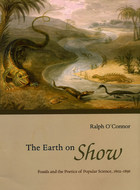 The Earth on Show: Fossils and the Poetics of Popular Science, 1802-1856
Ralph O'Connor
University of Chicago Press, 2007 At the turn of the nineteenth century, geology—and its claims that the earth had a long and colorful prehuman history—was widely dismissedasdangerous nonsense. But just fifty years later, it was the most celebrated of Victorian sciences. Ralph O’Connor tracks the astonishing growth of geology’s prestige in Britain, exploring how a new geohistory far more alluring than the standard six days of Creation was assembled and sold to the wider Bible-reading public.
Shrewd science-writers, O’Connor shows, marketed spectacular visions of past worlds, piquing the public imagination with glimpses of man-eating mammoths, talking dinosaurs, and sea-dragons spawned by Satan himself. These authors—including men of science, women, clergymen, biblical literalists, hack writers, blackmailers, and prophets—borrowed freely from the Bible, modern poetry, and the urban entertainment industry, creating new forms of literature in order to transport their readers into a vanished and alien past.
In exploring the use of poetry and spectacle in the promotion of popular science, O’Connor proves that geology’s success owed much to the literary techniques of its authors. An innovative blend of the history of science, literary criticism, book history, and visual culture, The Earth on Show rethinks the relationship between science and literature in the nineteenth century.
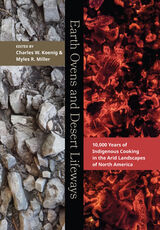 Earth Ovens and Desert Lifeways: 10,000 Years of Indigenous Cooking in the Arid Landscapes of North America
Edited by Charles W. Koenig and Myles R. Miller
University of Utah Press, 2023 For over 10,000 years, earth ovens (semi-subterranean, layered arrangements of heated rocks, packing material, and food stuffs capped by earth) have played important economic and social roles for Indigenous peoples living across the arid landscapes of western North America. From hunter-gatherers to formative horticulturalists, sedentary farmers, and contemporary Indigenous groups, earth ovens have been used to convert inedible plants into digestible food, fiber, and beverages.
The remains of earth ovens range from tight, circular clusters of burned rocks, generally labeled “hearths” by archaeologists, to the massive accumulations of fire-cracked rock referred to as earth oven facilities, roasting pits, or burned rock middens. Remnants of these oven forms are common across the arid and semi-arid landscapes that stretch from Texas to California and south into Mexico. Despite the ubiquity of earth ovens from late Paleoindian times until today, and their broad spatial and cultural distribution, these features remain an under-studied aspect of Indigenous lifeways.
This edited volume explores the longevity and diversity of earth oven baking and examines the subsistence strategies, technological paradigms, and social contexts within which earth ovens functioned. It is the first study to cover such a broad geographic area, reflecting an array of promising research that highlights ongoing efforts to understand the archaeological record of earth ovens.
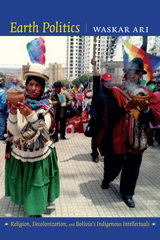 Earth Politics: Religion, Decolonization, and Bolivia's Indigenous Intellectuals
Waskar Ari
Duke University Press, 2014 Earth Politics focuses on the lives of four indigenous activist-intellectuals in Bolivia, key leaders in the Alcaldes Mayores Particulares (AMP), a movement established to claim rights for indigenous education and reclaim indigenous lands from hacienda owners. The AMP leaders invented a discourse of decolonization, rooted in part in native religion, and used it to counter structures of internal colonialism, including the existing racial systems. Waskar Ari calls their social movement, practices, and discourse earth politics, both because the AMP emphasized the idea of the earth and the place of Indians on it, and because of the political meaning that the AMP gave to the worship of the Aymara gods. Depicting the social worlds and life work of the activists, Ari traverses Bolivia's political and social landscape from the 1920s into the early 1970s. He reveals the AMP 's extensive geographic reach, genuine grassroots quality, and vibrant regional diversity. Ari had access to the private archives of indigenous families, and he collected oral histories, speaking with men and women who knew the AMP leaders. The resulting examination of Bolivian indigenous activism is one of unparalleled nuance and depth.
The Earth Remains Forever: Generations at a Crossroads
By Rob Jackson
University of Texas Press, 2002 Writing especially for people who've tuned out the environmental debate, Rob Jackson persuasively argues that we're at a crucial turning point in environmental history, where choices we make now will determine the quality of life into the unforeseeable future. Laying out the scientific facts in plain language and with flashes of humor, he shows how the escalation of population growth and resource consumption in the twentieth century caused problems from ozone depletion to global warming, habitat destruction, and biodiversity loss. At the same time, however, he highlights ongoing solutions to these problems and ways in which we can create a sustainable future for subsequent generations and all life on earth. His urgent message is not that we've already failed, but that we can succeed.
Earth Rising
David Oates
Oregon State University Press, 1989
 Earth Rising: American Environmentalism In The 21St Century
Philip Shabecoff
Island Press, 2001 "The mission of environmentalism is to mobilize society at all levels to confront the danger and disorder into which human activity has propelled us and guide us to a safer, saner way of living on the planet.... Environmentalism has never been about catastrophe. It is about alternatives, about changing course, about transforming the future." --Philip Shabecoff, from Earth Rising Philip Shabecoff, America's preeminent environmental journalist, has spent more than two decades thinking and writing about the environment and related subjects, as a reporter for The New York Times, as publisher of Greenwire, and as the author of two books, including the critically acclaimed A Fierce Green Fire. In Earth Rising, he draws on that experience to offer a pointed and thought-provoking critique of the current state and future prospects of the American environmental movement.Based on extensive interviews with a wide range of individuals both within and outside of the movement, Shabecoff elucidates the issues and problems confronting today's environmentalists and analyzes the movement's strengths and weaknesses. Viewing environmental threats as symptoms of flaws in our society and its systems, he considers the urgent need for a broader, more inclusive environmentalism, and examines the role environmentalists can -- and must -- play in: reforming the education system taming the global economy and making it an instrument of human needs working for political reform, including reducing the influence of corporate spending on the electoral process directing the course of the scientific enterprise as well as making use of its results helping develop a new moral center for people throughout the nation and the world Throughout, Shabecoff emphasizes the need for national organizations to link together with grassroots groups and to become more responsive to local concerns, and argues that the environmental movement has not yet adequately prepared itself to meet current and coming challenges. He makes a compelling case that another wave of environmentalism is needed -- more powerful, diverse and sophisticated, visionary and flexible. Earth Rising offers a detailed road map that can guide environmentalists toward that new and reenergized place in society.
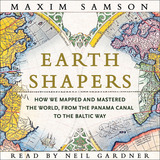 Earth Shapers: How We Mapped and Mastered the World, from the Panama Canal to the Baltic Way
Maxim Samson
University of Chicago Press, 2025 This is an audiobook version of this book.
The globetrotting story of how humans have harnessed the geographical landscape and written ourselves onto our surroundings.
Mountains, meridians, rivers, and borders—these are some of the features that divide the world on our maps and in our minds. But geography is far less set in stone than we might believe, and, as Maxim Samson’s Earth Shapers contends, in our relatively short time on this planet, humans have become experts at fundamentally reshaping our surroundings.
From the Qhapaq Ñan, the Inca’s “great road,” and Mozambique’s colonial railways to a Saudi Arabian smart city, and from Korea’s sacred Baekdu-daegan mountain range and the Great Green Wall in Africa to the streets of Chicago, Samson explores how we mold the world around us. And how, as we etch our needs onto the natural landscape, we alter the course of history. These fascinating stories of connectivity show that in our desire to make geographical connections, humans have broken through boundaries of all kinds, conquered treacherous terrain, and carved up landscapes. We crave linkages, and though we do not always pay attention to the in-between, these pathways—these ways of “earth shaping,” in Samson’s words—are key to understanding our relationship with the planet we call home.
An immense work of cultural geography touching on ecology, sociology, history, and politics, Earth Shapers argues that, far from being constrained by geography, we are instead its creators.
 Earth Shapers: How We Mapped and Mastered the World, from the Panama Canal to the Baltic Way
Maxim Samson
University of Chicago Press, 2025 The globetrotting story of how humans have harnessed the geographical landscape and written ourselves onto our surroundings.
Mountains, meridians, rivers, and borders—these are some of the features that divide the world on our maps and in our minds. But geography is far less set in stone than we might believe, and, as Maxim Samson’s Earth Shapers contends, in our relatively short time on this planet, humans have become experts at fundamentally reshaping our surroundings.
From the Qhapaq Ñan, the Inca’s “great road,” and Mozambique’s colonial railways to a Saudi Arabian smart city, and from Korea’s sacred Baekdu-daegan mountain range and the Great Green Wall in Africa to the streets of Chicago, Samson explores how we mold the world around us. And how, as we etch our needs onto the natural landscape, we alter the course of history. These fascinating stories of connectivity show that in our desire to make geographical connections, humans have broken through boundaries of all kinds, conquered treacherous terrain, and carved up landscapes. We crave linkages, and though we do not always pay attention to the in-between, these pathways—these ways of “earth shaping,” in Samson’s words—are key to understanding our relationship with the planet we call home.
An immense work of cultural geography touching on ecology, sociology, history, and politics, Earth Shapers argues that, far from being constrained by geography, we are instead its creators.
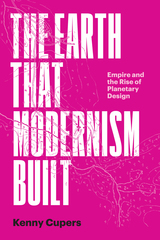 The Earth That Modernism Built: Empire and the Rise of Planetary Design
Kenny Cupers
University of Texas Press, 2024 An intellectual history of architectural modernism for an age of rising global inequality and environmental crisis. The Earth That Modernism Built traces the rise of planetary design to an imperialist discourse about the influence of the earthly environment on humanity. Kenny Cupers argues that to understand how the earth became an object of design, we need to radically shift the terms of analysis. Rather than describing how new design ideas and practices traveled and transformed people and places across the globe, this book interrogates the politics of life and earth underpinning this process. It demonstrates how approaches to modern housing, landscape design, and infrastructure planning are indebted to an understanding of planetary and human ecology fueled by settler colonialism and imperial ambition. Cupers draws from both canonical and unknown sources and archives in Germany, Namibia, and Poland to situate Wilhelmine and Weimar design projects in an expansive discourse about the relationship between soil, settlement, and race. This reframing reveals connections between colonial officials planning agricultural hinterlands, garden designers proselytizing geopolitical theory, soil researchers turning to folklore, and Bauhaus architects designing modern communities according to functionalist principles. Ultimately, The Earth That Modernism Built shows how the conviction that we can design our way out of environmental crisis is bound to exploitative and divisive ways of inhabiting the earth.
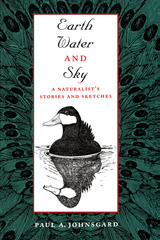 Earth, Water, and Sky: A Naturalist's Stories and Sketches
By Paul A. Johnsgard
University of Texas Press, 1999 "As I write this, I am sitting in a cabin at Cedar Point Biological Station in southwestern Nebraska.... The glorious elemental mixture of earth, water, and sky around me is the home of nearly three hundred species of birds, and comprises one of my favorite places in the world. Here no radio stations blare out the most recent results of meaningless sports events ... no traffic noises confound the senses. Instead the wind is the unquestioned dominating summer influence. The prairie grasses bend willingly and gracefully before it, and the leaves of the cottonwood trees convert its breezes into soft music." Paul Johnsgard is one of America's most prominent ornithologists and a world authority on waterfowl behavior. In these popularly written, often lyrical essays, he describes some of his most fascinating encounters with birds, from watching the annual mating displays of prairie-chickens on a hilltop in Pawnee County, Nebraska, to attempting to solve some of the mysteries surrounding Australia's nearly flightless musk duck. Reflecting his worldwide interests and travels, the birds Johnsgard describes inhabit many parts of the globe. Grouping the birds by the element they frequent most—earth, water, or sky—he weaves a wealth of accurate natural history into personal stories drawn from a lifetime of avian observation. And, as a bonus, Johnsgard's lovely pen-and-ink drawings illustrate each species he describes.
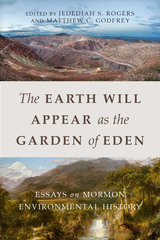 The Earth Will Appear as the Garden of Eden: Essays on Mormon Environmental History
Jedediah S. Rogers and Matthew C. Godfrey
University of Utah Press, 2018 Although scholars have increasingly investigated the impact of religion and religious movements on nature, studies of the interactions between Mormons and the natural environment are few. This volume applies the perspectives of environmental history to Mormonism, providing both a scholarly introduction to Mormon environmental history and a spur for historians to consider the role of nature in the Mormon past.
Since Joseph Smith’s revelations, Mormons have interacted with nature in significant ways—whether perceiving it as a place to find God, uncorrupted spaces in which to build communities to usher in the Second Coming, wildness needing domestication and control, or a world brimming with natural resources to ensure economic well-being. The essays in this volume—written by leading scholars in both environmental history and Mormon history—explore how nature has influenced Mormon beliefs and how these beliefs inform Mormons’ encounters with nature. Introducing overarching environmental ideas, contributors examine specific aspects of nature and Mormon theology to glean new insights into the Mormon experience.
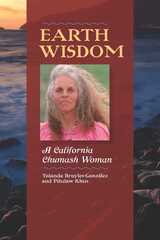 Earth Wisdom: A California Chumash Woman
Yolanda Broyles-González and Pilulaw Khus
University of Arizona Press, 2011 Pilulaw Khus has devoted her life to tribal, environmental, and human rights issues. With impressive candor and detail, she recounts those struggles here, offering a Native woman’s perspective on California history and the production of knowledge about indigenous peoples. Readers interested in tribal history will find in her story a spiritual counterpoint to prevailing academic views on the complicated reemergence of a Chumash identity. Readers interested in environmental studies will find vital eyewitness accounts of movements to safeguard important sites like Painted Rock and San Simeon Point from developers. Readers interested in indigenous storytelling will find Chumash origin tales and oral history as recounted by a gifted storyteller.
The 1978 Point Conception Occupation was a turning point in Pilulaw Khus’s life. In that year excavation began for a new natural gas facility at Point Conception, near Santa Barbara, California. To the Chumash tribal people of the central California coast, this was desecration of sacred land. In the Chumash cosmology, it was the site of the Western Gate, a passageway for spirits to enter the next world. Frustrated by unfavorable court hearings, the Chumash and their allies mobilized a year-long occupation of the disputed site, eventually forcing the energy company to abandon its plan. The Point Conception Occupation was a landmark event in the cultural revitalization of the Chumash people and a turning point in the life of Pilulaw Khus, the Chumash activist and medicine woman whose firsthand narrations comprise this volume.
Scholar Yolanda Broyles-González provides an extensive introductory analysis of Khus’s narrative. Her analysis explores “re-Indianization” and highlights the newly emergent Chumash research of the last decade.
In the world of book publishing, this volume from a traditional Chumash woman elder is a first. It puts a 20th (and 21st) century face, name, identity, humanity, personality, and living voice on the term Chumash.
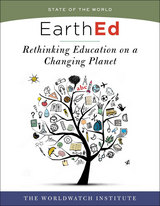 EarthEd (State of the World): Rethinking Education on a Changing Planet
The Worldwatch Institute
Island Press, 2017 Earth education is traditionally confined to specific topics: ecoliteracy, outdoor education, environmental science. But in the coming century, on track to be the warmest in human history, every aspect of human life will be affected by our changing planet. Emerging diseases, food shortages, drought, and waterlogged cities are just some of the unprecedented challenges that today’s students will face. How do we prepare 9.5 billion people for life in the Anthropocene, to thrive in this uncharted and more chaotic future?
Answers are being developed in universities, preschools, professional schools, and even prisons around the world. In the latest volume of State of the World, a diverse group of education experts share innovative approaches to teaching and learning in a new era. Topics include systems thinking for kids; the importance of play in early education; social emotional learning; comprehensive sexuality education; indigenous knowledge; sustainable business; medical training to treat the whole person; teaching law in the Anthropocene; and more.
EarthEd addresses schooling at all levels of development, from preschool to professional. Its lessons can inform teachers, policy makers, school administrators, community leaders, parents, and students alike. And its vision will inspire anyone who wants to prepare students not only for the storms ahead but to become the next generation of sustainability leaders.
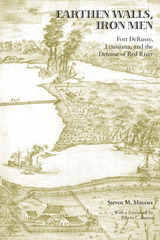 Earthen Walls, Iron Men: Fort DeRussy, Louisiana, and the Defense of Red River
Steven M. Mayeux
University of Tennessee Press, 2007
“This book will be of great use to historians of the western theatre of the Civil War, to the reader of nineteenth-century history, and to students of the undergraduate and graduate levels. -Gary D. Joiner, author of Through the Howling Wilderness: The 1864 Red River Campaign and Union Failure in the West
Earthen Walls, Iron Men tells the story of Fort DeRussy, Louisiana, a major Confederate fortification that defended the lower Red River in 1863-64 during the last stages of the Civil War. Long regarded as little more than a footnote by historians, the fort in fact played a critical role in the defense of the Red River region. The Red River Campaign was one of the Confederacy's last great triumphs of the war, and only the end of the conflict saved the reputations of Union leaders who had recently been so successful at Vicksburg. Fort DeRussy was the linchpin of the Confederates' tactical and strategic victory.
Steven M. Mayeux does more than just tell the story of the fort from the military perspective; it goes deeper to closely examine the lives of the people that served in-and lived around-Fort DeRussy. Through a thorough examination of local documents, Mayeux has uncovered the fascinating stories that reveal for the first time what wartime life was like for those living in central Louisiana.
In this book, the reader will meet soldiers and slaves, plantation owners and Jayhawkers, elderly women and newborn babies, all of whom played important roles in making the history of Fort DeRussy. Mayeux presents an unvarnished portrait of the life at the fort, devoid of any romanticized notions, but more accurately capturing the utter humanity of those who built it, defended it, attacked it, and lived around it.
Earthen Walls, Iron Men intertwines the stories of naval battles and military actions with those human elements such as greed, theft, murder, and courage to create a vibrant, relevant history that will appeal to all who seek to know what real life was like during the Civil War.
Steve Mayeux is a graduate of LSU and a former Marine officer. His work as an agricultural consultant in the central Louisiana area for the past thirty years has given him a great appreciation for the history and geography of the lower Red River.
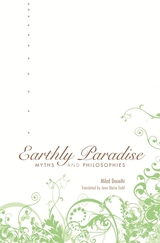 Earthly Paradise: Myths and Philosophies
Milad Doueihi
Harvard University Press, 2009 Paradise haunts the Biblical West. At once the place of origin and exile, utopia and final destination, it has shaped our poetic and religious imagination and informed literary and theological accounts of man’s relation with his creator, with language and history. For Kant, Paradise was the inaugural moment for the rise and progress of reason as the agency of human history, slowly but certainly driving humanity away from error and superstition. Nietzsche described it more somberly as the very embodiment of the conflict between humanity and its beliefs.
In Earthly Paradise, Milad Doueihi contemplates key moments in the philosophical reception and uses of Paradise, marked by the rise of critical and historical methods in the Early Modern period. How do modern debates around the nature of evil, free will, and the origin of language grow out of the philosophical interpretations of Paradise as the site of human history? How do the reflections of Spinoza, Pierre Bayle, Leibniz, and their contemporaries inform our current ideas about the Biblical narrative of the Fall? Is Paradise the source of human error or an utopian vision of humanity itself?
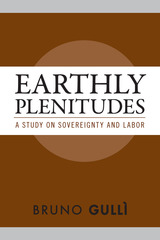 Earthly Plenitudes: A Study on Sovereignty and Labor
Bruno Gullì
Temple University Press, 2016 A fierce critique of productivity and sovereignty in the world of labor and everyday life, Bruno Gullì’s Earthly Plenitudes asks, can labor exist without sovereignty and without capitalism? He introduces the concept of dignity of individuation to prompt a rethinking of categories of political ontology. Dignity of individuation stresses the notion that the dignity of each and any individual being lies in its being individuated as such; dignity is the irreducible and most essential character of any being. Singularity is a more universal quality.
Gullì first reviews approaches to sovereignty by philosophers as varied as Gottfried Leibniz and Georges Bataille, and then looks at concrete examples where the alliance of sovereignty and capital cracks under the potency of living labor. He examines contingent academic labor as an example of the super-exploitation of labor, which has become a global phenomenon, and as such, a clear threat to the sovereign logic of capital. Gullì also looks at disability to assert that a new measure of humanity can only be found outside the schemes of sovereignty, productivity, efficiency, and independence, through care and caring for others, in solidarity and interdependence.
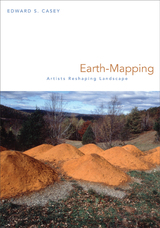 Earth-Mapping: Artists Reshaping Landscape
Edward S. Casey
University of Minnesota Press, 2005 Dutch world maps of the sixteenth and seventeenth centuries, with their decorative pictures and elaborate typography, stand in sharp contrast to the wholly practical maps of today, which emphasize precise detail and consistent scale. Art, since the Impressionist period, has seemingly moved in the opposite direction, toward a less realistic interpretation of the world around us. Edward S. Casey demonstrates that the disciplines of mapping and painting, long thought to have diverged, are again intersecting. Earth-Mapping describes the ways in which artists of the last half century have incorporated ingenious mapping techniques into their art works. Beginning with a reassessment of the pioneering earth art of Robert Smithson in the 1960s and 1970s, Casey follows Smithson's legacy in the works of Sandy Gellis, Margot McLean, and Michelle Stuart. He also explores the visions of the earth found in the abstract paintings of Richard Diebenkorn, Jasper Johns, Willem de Kooning, Eve Ingalls, and Dan Rice. Focusing on forms of mapping that depart radically from conventional cartography - particularly "mapping with/in," being with or in a place, and "mapping out," communicating that experience of connection with others - Casey shows how earth art and abstract painting respectively reshape our landscape and our view of it, drawing us in from our bird's-eye view of the grid of highways and roads. In these works, we come to see the earth as it is sensed, remembered, and reshaped by artists as they explore the effect of the landscape on humans and the human effect on the landscape, and as they demand a response to the changing world around us.
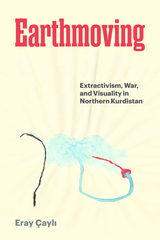 Earthmoving: Extractivism, War, and Visuality in Northern Kurdistan
Eray Çayli
University of Texas Press, 2025 Focuses on contemporary art and media to examine the role of visuals in environmental violence and war in Northern Kurdistan. Extractivism—exploiting the earth for resources—has long driven racial capitalism and colonialism. And yet, how does extractivism operate in a world where ecological and humanitarian sensibilities are unprecedentedly widespread? Eray Çaylı argues it does so by mobilizing these sensibilities in new ways. Extractivism is no longer only about moving the earth—displacing peoples, fossils, minerals, and waters—but also leaving those who witness this violent displacement sentimentally moved. Earthmoving conceptualizes this duality. Derived from Çaylı’s years-long work in Northern Kurdistan, home to the world’s largest stateless nation—rendered stateless by colonial policies since the nineteenth century—Earthmoving focuses on the 2010s, a decade that began with peace talks between Turkey and the Kurdish liberation movement but ended with war. The decade saw extractivism intensify in the region and images of its harm proliferate across art and media. Together with contemporary artists, Çaylı shows that images challenge extractivism both by making its harm visible and by fostering self-reflexive and reciprocal collaboration that breaks with its valuation of the colonized and the racialized only in quantifiable and marketable terms.
 Earthquake Children: Building Resilience from the Ruins of Tokyo
Janet Borland
Harvard University Press, 2020 Japan, as recent history has powerfully illustrated, is one of the world’s most earthquake-prone countries. Today it is also one of the best prepared to face such seismic risk. This was not always the case.
Earthquake Children is the first book to examine the origins of modern Japan’s infrastructure of resilience. Drawing from a rich collection of previously unexplored sources, Janet Borland vividly illustrates that Japan’s contemporary culture of disaster preparedness and its people’s ability to respond calmly in a time of emergency are the result of learned and practiced behaviors. She traces their roots to the 1923 Great Kantō Earthquake, which killed over 100,000 people when it struck the Tokyo region.
Beyond providing new perspectives on Japan’s seismic past, the history of childhood, and everyday life in interwar Japan, Borland challenges the popular idea that Japanese people owe their resilience to some innate sense of calm under pressure. Tokyo’s traumatic experiences in 1923 convinced government officials, seismologists, teachers, physicians, and architects that Japan must better prepare for future disasters. Earthquake Children documents how children, schools, and education became the primary tools through which experts sought to build a disaster-prepared society and nation that would withstand nature’s furies.
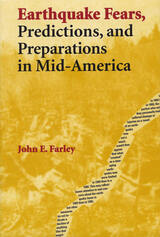 Earthquake Fears, Predictions, and Preparations in Mid-America
John E. Farley
Southern Illinois University Press, 1998
The New Madrid Seismic Zone (NMSZ) generated the strongest earthquakes ever observed in the lower forty-eight states in 1811 and 1812. And the region is overdue for another damaging quake. When self-proclaimed climatologist lben Browning predicted that a major earthquake would shatter the Heartland on 2 or 3 December 1990, many living within reach of the New Madrid fault zone reacted with varying combinations of preparation and panic.
John Farley’s study reports the results of four surveys conducted in the NMSZ both before and after the quake prediction. Thus, Farley notes the level of awareness and preparation at the height of the Browning-induced scare and shows to what extent earthquake awareness and preparedness were sustained in this region after the most widely publicized prediction in recent history proved baseless. All four surveys offer important insights into what people believe about earthquake risk in the NMSZ, what they know about earthquakes, what specific actions they have—and have not—taken in preparation for earthquakes, and what they think a severe quake would do to their neighborhoods.
Farley is the first researcher to study the response to an earthquake prediction while the prediction remained in effect and to continue the inquiry after the date covered by the prediction had passed. He is also the first researcher to look at earthquake awareness and preparedness in the NMSZ over an extended period of time.
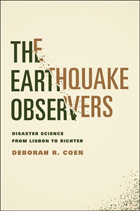 The Earthquake Observers: Disaster Science from Lisbon to Richter
Deborah R. Coen
University of Chicago Press, 2012 Earthquakes have taught us much about our planet’s hidden structure and the forces that have shaped it. This knowledge rests not only on the recordings of seismographs but also on the observations of eyewitnesses to destruction. During the nineteenth century, a scientific description of an earthquake was built of stories—stories from as many people in as many situations as possible. Sometimes their stories told of fear and devastation, sometimes of wonder and excitement.
In The Earthquake Observers, Deborah R. Coen acquaints readers not only with the century’s most eloquent seismic commentators, including Alexander von Humboldt, Charles Darwin, Mark Twain, Charles Dickens, Karl Kraus, Ernst Mach, John Muir, and William James, but also with countless other citizen-observers, many of whom were women. Coen explains how observing networks transformed an instant of panic and confusion into a field for scientific research, turning earthquakes into natural experiments at the nexus of the physical and human sciences. Seismology abandoned this project of citizen science with the introduction of the Richter Scale in the 1930s, only to revive it in the twenty-first century in the face of new hazards and uncertainties. The Earthquake Observers tells the history of this interrupted dialogue between scientists and citizens about living with environmental risk.
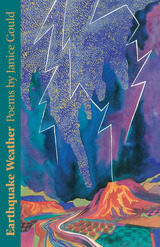 Earthquake Weather: Poems
Janice Gould
University of Arizona Press, 1996 It’s unmistakable, that strangely calm air and sky that signals big change ahead: earthquake weather. These are familiar signs to Janice Gould, a poet, a lesbian, and a mixed-blood California Indian of Koyangk’auwi Maidu descent. Her sense of isolation is intense, her search for identity is relentless, and her words can take one’s breath away. Sometimes accepting, sometimes full of anger, Gould’s work is rare, filtered through the feelings, thoughts, and experiences of a lesbian of Indian heritage. Over and over again, she speaks as an outsider looking in at the lives of others—through a doorway, out of a car window, or from the shambles of a broken relationship.
Showing a steady courage in the midst of this alienation, her words are also stark testimony to the struggle of an individual caught in social and emotional contexts defined by others. In Earthquake Weather, as in an evolving friendship, Gould opens herself to the reader in stages. "I did not know how lonely I was / till we began to talk," she writes in an opening section, setting the introspective tone of what’s to come. She begins with a focus on those universal truths that both bind us and isolate us from each other: the pain of loss, the finality of death, our longing to see beneath the surface of things. Next, the poet turns to her growing-up years during the Vietnam War and the civil rights movement. She describes a family in turmoil and an Indian heritage that, oddly, was one of the factors that made her feel most disconnected from other people. And she writes poignantly about her increasing alienation from prescribed sexual roles. "What’s wrong with me? / Where do I belong? Why / am I here? Why can’t I / hold on?" Finally, as in a trusting friendship, Gould offers the reader vivid word portraits of relationships in her life—women she has loved and who have loved her.
Erotic and deeply personal, these poems serve as both a reconciliation and affirmation of her individuality. "Yet would you deny / that between women desire exists / that in our friendship a delicate / and erotic strand of fire unites us?" The poems in this book, says critic Toby Langen, are most powerful for their "courageous drawing on experience and feelings." They will speak to many general readers as well as anyone interested in questions of gender and identity, including students of literature, lesbian/women’s studies, social/cultural studies, or American Indian studies.
Earthquakes and Gardens: Saint Hilarion’s Cyprus
Virginia Burrus
University of Chicago Press, 2023 Essays about ruination, resilience, reading, and religion generated by a reflection on a fourth-century hagiography.
In Jerome’s Life of Saint Hilarion, a fourth-century saint briefly encounters the ruins of an earthquake-toppled city and a haunted garden in Cyprus. From these two fragmentary passages, Virginia Burrus delivers a series of sweeping meditations on our experience of place and the more-than-human worlds—the earth and its gods—that surround us. Moving between the personal and geological, Earthquakes and Gardens ruminates on destruction and resilience, ruination and resurgence, grief and consolation in times of disaster and loss. Ultimately, Burrus’s close readings reimagine religion as a practice that unsettles certainty and develops mutual flourishing.
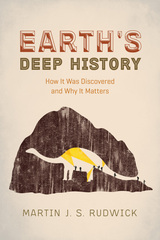 Earth's Deep History: How It Was Discovered and Why It Matters
Martin J. S. Rudwick
University of Chicago Press, 2014 Earth has been witness to mammoths and dinosaurs, global ice ages, continents colliding or splitting apart, and comets and asteroids crashing catastrophically to the surface, as well as the birth of humans who are curious to understand it. But how was all this discovered? How was the evidence for it collected and interpreted? And what kinds of people have sought to reconstruct this past that no human witnessed or recorded? In this sweeping and accessible book, Martin J. S. Rudwick, the premier historian of the Earth sciences, tells the gripping human story of the gradual realization that the Earth’s history has not only been unimaginably long but also astonishingly eventful.
Rudwick begins in the seventeenth century with Archbishop James Ussher, who famously dated the creation of the cosmos to 4004 BC. His narrative later turns to the crucial period of the late eighteenth and early nineteenth centuries, when inquisitive intellectuals, who came to call themselves “geologists,” began to interpret rocks and fossils, mountains and volcanoes, as natural archives of Earth’s history. He then shows how this geological evidence was used—and is still being used—to reconstruct a history of the Earth that is as varied and unpredictable as human history itself. Along the way, Rudwick rejects the popular view of this story as a conflict between science and religion and shows how the modern scientific account of the Earth’s deep history retains strong roots in Judaeo-Christian ideas.
Extensively illustrated, Earth’s Deep History is an engaging and impressive capstone to Rudwick’s distinguished career. Though the story of the Earth is inconceivable in length, Rudwick moves with grace from the earliest imaginings of our planet’s deep past to today’s scientific discoveries, proving that this is a tale at once timeless and timely.
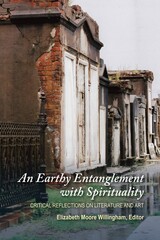 An Earthy Entanglement with Spirituality: Critical Reflections on Literature and Art
Edited by Elizabeth Willingham
Sussex Academic Press, 2023 An Earthy Entanglement with Spirituality; offers compelling perspectives on literature and art whose common ground lies in their diverse evocations of the human spirit. The critical readings are shaped by distinct critical approaches. Contributors consider the over-arching inquiry broadly, contextualizing their work in diverse primary sources that include poetry of various genres and periods; the novel, short story, and dialogue; Shakespearean drama and contemporary theater; and nineteenth-century painting and Italian Renaissance sculpture. Images of several kinds make the critical approaches accessible. The contents demonstrate the diverse audience for the book: the novice explorer of the Arts and Humanities; the knowledgeable generalist; the aficionado of a particular author or period; the advanced student seeking insights or a critical foothold; and those with spiritual, ethical, or theological interests. Teachers and critics of literature will find here useful and productive ideas, contexts, models, and resources. Worthy furniture for the mind and substantial meriendas for the spirit lie within.
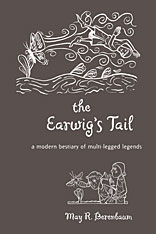 The Earwig’s Tail: A Modern Bestiary of Multi-legged Legends
May R. Berenbaum
Harvard University Press, 2009 Throughout the Middle Ages, enormously popular bestiaries presented people with descriptions of rare and unusual animals, typically paired with a moral or religious lesson. The real and the imaginary blended seamlessly in these books—at the time, the existence of a rhinoceros was as credible as a unicorn or dragon. Although audiences now scoff at the impossibility of mythological beasts, there remains an extraordinary willingness to suspend skepticism and believe wild stories about nature, particularly about insects and their relatives in the Phylum Arthropoda.
In The Earwig’s Tail, entomologist May Berenbaum and illustrator Jay Hosler draw on the powerful cultural symbols of these antiquated books to create a beautiful and witty bestiary of the insect world. Berenbaum’s compendium of tales is an alphabetical tour of modern myths that humorously illuminates aerodynamically unsound bees, ear-boring earwigs, and libido-enhancing Spanish flies. She tracks down the germ of scientific truth that inspires each insect urban legend and shares some wild biological lessons, which, because of the amazing nature of the insect world, can be more fantastic than even the mythic misperceptions.
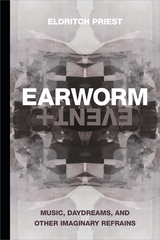 Earworm and Event: Music, Daydreams, and Other Imaginary Refrains
Eldritch Priest
Duke University Press, 2022 In Earworm and Event Eldritch Priest questions the nature of the imagination in contemporary culture through the phenomenon of the earworm: those reveries that hijack our attention, the shivers that run down our spines, and the songs that stick in our heads. Through a series of meditations on music, animal mentality, abstraction, and metaphor, Priest uses the earworm and the states of daydreaming, mind-wandering, and delusion it can produce to outline how music is something that is felt as thought rather than listened to. Priest presents Earworm and Event as a tête-bêche—two books bound together with each end meeting in the middle. Where Earworm theorizes the entanglement of thought and feeling, Event performs it. Throughout, Priest conceptualizes the earworm as an event that offers insight into not only the way human brains process musical experiences, but how abstractions and the imagination play key roles in the composition and expression of our contemporary social environments and more-than-human milieus. Unconventional and ambitious, Earworm and Event offers new ways to interrogate the convergence of thought, sound, and affect.
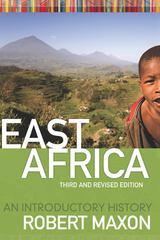 East Africa: An Introductory History
Robert Maxon
West Virginia University Press, 2009 In this third edition of East Africa: An Introductory History, Robert M. Maxon revisits the diverse eastern region of Africa, including the modern nations of Kenya, Tanzania, and Uganda. With revised sections and a new preface, this comprehensive text surveys East Africa’s political, economic, and social history from pre-colonial to modern times. Maxon reveals the physical movement and societal development of and between ethnic groups before the 1890s; the capitalistic impact of European colonialism in the early nineteenth century; and the achievement and aftermath of independence in East Africa during the later part of this century. East Africa: An Introductory History, 3rd and Revised Edition offers the student and scholar: • the only revision of this title in over a decade
• a complete index and glossary of African terms that promote an effortless navigation of the complex history of this region
• over twenty maps and diagrams that provide visual depictions of the development of eastern Africa
• detailed geographical and topographical analysis that supplement the historical scope and investigation of this region
East Africa: An Introductory History documents the transformation of East Africa from the Stone Age to the first decade of the twenty-first century. The book is ideal for any reader interested in unraveling the intricate history of this East Africa, and especially for students coming to the study of this region for the first time.
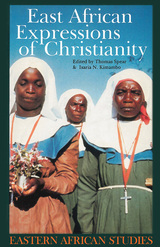 East African Expressions of Christianity: Of Christianity
Thomas Spear
Ohio University Press, 1998 Christianity has been spread in Africa by Africans. It is the story of peoples seizing control of their own spiritual destinies—rather than the commonplace notion that the continent’s Christian churches represent colonial and capitalist powers that helped subdue Africans to European domination. In short, once introduced, Christianity took on a powerful life of its own and spun out of the control of those who would retain ownership of doctrine and practice. East African Expressions of Christianity examines the experiences of African Christians as they explored the new faith, interpreted it in the context of their own values, appropriated it for themselves, and forged their own distinctive churches. Prominent Tanzanian and American historians, anthropologists, political scientists, and church people examine the translation of religious meanings across cultural boundaries; the religious and social appeal of the new faith; and the vital roles played by African evangelists, teachers, and translators in the spread of Christianity and the development of an African church.
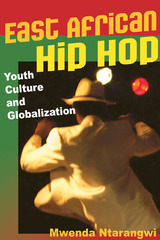 East African Hip Hop: Youth Culture and Globalization
Mwenda Ntarangwi
University of Illinois Press, 2008 In this book, Mwenda Ntarangwi analyzes how young hip hop artists in the East African nations of Kenya, Uganda, and Tanzania showcase the opportunities and challenges brought by the globalization of music. Combining local popular music traditions with American and Jamaican styles of rap, East African hip hop culture reflects the difficulty of creating commercially accessible music while honoring tradition and East African culture. Ntarangwi pays special attention to growing cross-border exchanges within East African hip hop, collaborations in recording music and performances, and themes and messages that transcend local geographic boundaries. In using hip hop as a medium for discussing changes in East African political, economic, and social conditions, artists vocalize their concerns about economic policies, African identity, and political establishments, as well as important issues of health (such as HIV/AIDS), education, and poverty. Through three years of fieldwork, rich interviews with artists, and analysis of live performances and more than 140 songs, Ntarangwi finds that hip hop provides youth an important platform for social commentary and cultural critique and calls attention to the liberating youth music culture in East Africa.
 East African Mammals: An Atlas of Evolution in Africa, Volume 2, Part A: Insectivores and Bats
Jonathan Kingdon
University of Chicago Press, 1984 Acclaimed and coveted by both naturalists and lovers of wildlife illustration, Jonathan Kingdon's seven-volume East African Mammals has become a classic of modern natural history. This paperback edition makes Kingdon's remarkable artistic and scientific achievement—his hundreds of drawings and perceptive study of all the mammals in East Africa's species-rich fauna—available to the wide audience it deserves.
Volume IIA of East African Mammals begins a two-part study of East Africa's smallest and least conspicuous mammals. It deals with bats and insectivores, including tenrecs, moles, hedgehogs, and shrews.
In each volume Kingdon combines his text with hundreds of finished drawings and quick sketches, the latter a form of field note that provides an incomparable description of the animal's movements and personality. Kingdom explains his drawings "as a wordless questioning of form. . . . The probing pencil is like the dissecting scalpel, seeking to expose relevant structures that may not be immediately obvious and are certainly hidden from the shadowy world of the camera lens." As an artist, Kingdon's achievement has been compared with Audubon's; as a scientist, his work has made these volumes indispensable to any serious student of East African mammals.
 East African Mammals: An Atlas of Evolution in Africa, Volume 2, Part B: Hares and Rodents
Jonathan Kingdon
University of Chicago Press, 1984 Acclaimed and coveted by both naturalists and lovers of wildlife illustration, Jonathan Kingdon's seven-volume East African Mammals has become a classic of modern natural history. This paperback edition makes Kingdon's remarkable artistic and scientific achievement—his hundreds of drawings and perceptive study of all the mammals in East Africa's species-rich fauna—available to the wide audience it deserves.
Volume IIB of East African Mammals is a study of some of East Africa's smallest and least conspicuous mammals, hares and rodents.
In each volume Kingdon combines his text with hundreds of finished drawings and quick sketches, the latter a form of field note that provides an incomparable description of the animal's movements and personality. Kingdom explains his drawings "as a wordless questioning of form. . . . The probing pencil is like the dissecting scalpel, seeking to expose relevant structures that may not be immediately obvious and are certainly hidden from the shadowy world of the camera lens." As an artist, Kingdon's achievement has been compared with Audubon's; as a scientist, his work has made these volumes indispensable to any serious student of East African mammals.
 East African Mammals: An Atlas of Evolution in Africa, Volume 3, Part A: Carnivores
Jonathan Kingdon
University of Chicago Press, 1989 Acclaimed and coveted by both naturalists and lovers of wildlife illustration, Jonathan Kingdon's seven-volume East African Mammals has become a classic of modern natural history. This paperback edition makes Kingdon's remarkable artistic and scientific achievement—his hundreds of drawings and perceptive study of all the mammals in East Africa's species-rich fauna—available to the wide audience it deserves.
Volume IIIA documents the carnivores of East Africa—lions, cheetahs, jackals, otters, civets, genets, mongooses, hyenas, and such lesser-known species as the zorilla and the aardwolf.
The beauty of the animals, so vivid in these incomparable drawings, is made more poignant by the acknowledgment of their increasingly endangered status. Kingdon discusses the inevitable problems posed by large mammal communities in a developing continent and includes numerous maps indicating their declining ranges and populations.
 East African Mammals: An Atlas of Evolution in Africa, Volume 3, Part B: Large Mammals
Jonathan Kingdon
University of Chicago Press, 1989 Acclaimed and coveted by both naturalists and lovers of wildlife illustration, Jonathan Kingdon's seven-volume East African Mammals has become a classic of modern natural history. This paperback edition makes Kingdon's remarkable artistic and scientific achievement—his hundreds of drawings and perceptive study of all the mammals in East Africa's species-rich fauna—available to the wide audience it deserves.
Volume IIIB celebrates the large mammals for which the African plains are so famous—elephants, rhinos, zebras, bushpigs, and warthogs, hippopotamuses, camels, chevrotains, giraffes. Kingdon brings his artist's eye to such puzzles as the zebra's stripes and the giraffe's spots, making original observations throughout the seven volumes about the evolutionary and functional significance of coat color, facial expressions, and curious forms and markings.
The beauty of the animals, so vivid in these incomparable drawings, is made more poignant by the acknowledgment of their increasingly endangered status. Kingdon discusses the inevitable problems posed by large mammal communities in a developing continent and includes numerous maps indicating their declining ranges and populations.
East African Mammals: An Atlas of Evolution in Africa, Volume 3, Part C: Bovids
Jonathan Kingdon
University of Chicago Press, 1989 Kingdon's remarkable seven-volume masterwork on East African mammals concludes with two volumes on the bovids, placing them in a broad comparative, ecological, and evolutionary context. Volume IIIC covers cattle, water buffalo, kudus, elands, dwarf antelopes, duikers, reedbucks, and waterbucks; IIID covers gazelles, impalas, wildebeests, oryxes, sheep, and goats. In addition to the stunning, lifelike drawings that are an integral part of the text, the volumes include a reappraisal of bovid taxonomy and original analyses of the form and function of body shape and size, horn shape, coat pattern, and tooth structure.
East African Mammals: An Atlas of Evolution in Africa, Volume 3, Part D: Bovids
Jonathan Kingdon
University of Chicago Press, 1989 Kingdon's remarkable seven-volume masterwork on East African mammals concludes with two volumes on the bovids, placing them in a broad comparative, ecological, and evolutionary context. Volume IIIC covers cattle, water buffalo, kudus, elands, dwarf antelopes, duikers, reedbucks, and waterbucks; IIID covers gazelles, impalas, wildebeests, oryxes, sheep, and goats. In addition to the stunning, lifelike drawings that are an integral part of the text, the volumes include a reappraisal of bovid taxonomy and original analyses of the form and function of body shape and size, horn shape, coat pattern, and tooth structure.
East African Plant Collectors
Diana Polhill
Royal Botanic Gardens, Kew, 2015 In 1793, the first herbarium specimens were collected and recorded in East Africa. Since then, more than 2,700 people have collected specimens in Uganda, Kenya, and Tanzania, many of them as part of the groundbreaking work Flora of Tropical East Africa. While Flora focuses on the plants themselves, the companion volume East African Plant Collectors shines a spotlight on this diverse group of collectors who have worked to record the species of this botanically important region. Profiles include information about the collectors’ careers and interests, their publications, and the areas where their plants were located. The profiles are accompanied by an overarching timeline and historical synopsis, which shows how the profession has changed through the eras.
 East & West: Papers in Ancient History Presented to Glen W. Bowersock
T. Corey Brennan
Harvard University Press, 2008 The papers in this volume are based on a 2006 Princeton University symposium in honor of Glen W. Bowersock on the occasion of his retirement from the faculty of the Institute for Advanced Study. Here a distinguished international group of ancient historians explores the classical antiquity that Bowersock has given us over a scholarly career of almost fifty years.
The topics offered in East and West range throughout the ancient world from the second century BCE to late antiquity, from Hellenistic Greece and Republican Rome to Egypt and Arabia, from the Second Sophistic to Roman imperial discourse, from Sulla’s self-presentation in his memoirs to charitable giving among the Manichaeans in Egypt.
This collection of essays represents the first attempt to take in Glen Bowersock’s well-developed scholarly interests as a whole. The contributors open up new avenues that often run well beyond the conventional geographical and temporal boundaries of the Greco-Roman Mediterranean, leading to a host of fresh insights into antique thought and life.
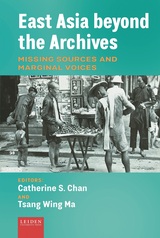 East Asia beyond the Archives: Missing Sources and Marginal Voices
Catherine S. Chan
Leiden University Press, 2024 For a long time, silk, tea, sinocentrism, and eurocentrism made up a big patch of East Asian history. Simultaneously deviating from and complicating these tags, this edited volume reconstructs narratives from the periphery and considers marginal voices located beyond official archives as the centre of East Asian history. The lives of the Japanese Buddhist monks, Eastern Han local governors, Confucian scholars, Chinese coolies, Shanghainese tailors, Macau joss-stick makers, Hong Kong locals, and Cantonese working-class musicians featured in this collection provide us with a glimpse of how East Asia’s inhabitants braved, with versatility, the ripples of political centralization, cross-border movement, foreign imperialism, nationalism, and globalism that sprouted locally and universally. Demonstrating the rich texture of sources discovered through non-official pathways, the ten essays in this volume ultimately reveal the timeless interconnectedness of East Asia and the complex, non-uniform worldviews of its inhabitants.
East Asia Observed: Selected Writings 1973-2021
James Hoare
Amsterdam University Press, 2023 This collection brings together themes in East Asian history, diplomacy, culture and politics written by J E Hoare since the early 1970s. His writings derive from his training as a historian, from his time as a Research Analyst in the British Foreign Office from 1969-2003, and from his experiences as a diplomat in the Republic of Korea (South Korea), the People’s Republic of China, and the Democratic People’s Republic of Korea (North Korea). The writings selected for this volume include academic papers, book reviews and some quasi-journalistic articles which reflect both historical research and analysis of current events and issues. The wide-ranging content speaks to the author’s specialist fields of interest including diplomacy, biography, extraterritoriality and architecture on which he has published extensively.
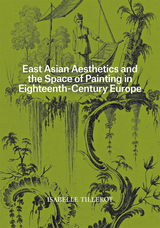 East Asian Aesthetics and the Space of Painting in Eighteenth-Century Europe
Isabelle Tillerot
J. Paul Getty Trust, The, 2024 An insightful look at how East Asian notions of space transformed Western painting.
This volume offers the first critical account of how European imports of East Asian textiles, porcelain, and lacquers, along with newly published descriptions of the Chinese garden, inspired a revolution in the role of painting in early modern Europe. With particular focus on French interiors, Isabelle Tillerot reveals how a European enthusiasm for East Asian culture and a demand for novelty transformed the dynamic between painting and decor. Models of space, landscape, and horizon, as shown in Chinese and Japanese objects and their ornamentation, disrupted prevailing design concepts in Europe. With paintings no longer functioning as pictorial windows, they began to be viewed as discrete images displayed on a wall—and with that, their status changed from decorative device to autonomous work of art.
This study presents a detailed history of this transformation, revealing how an aesthetic free from the constraints of symmetry and geometrized order upended paradigms of display, enabling European painting to come into its own.
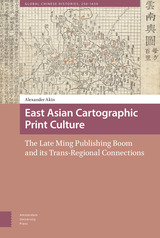 East Asian Cartographic Print Culture: The Late Ming Publishing Boom and its Trans-Regional Connections
Alexander Akin
Amsterdam University Press, 2021 Alexander Akin examines how the expansion of publishing in the late Ming dynasty prompted changes in the nature and circulation of cartographic materials in East Asia. Focusing on mass-produced printed maps, East Asian Cartographic Print Culture: The Late Ming Publishing Boom and its Trans-Regional Connections investigates a series of pathbreaking late sixteenth- and early seventeenth-century works in genres including geographical education, military affairs, and history, analysing how maps achieved unprecedented penetration among published materials, even in the absence of major theoretical or technological changes like those that transformed contemporary European cartography. By examining contemporaneous developments in neighboring Choson Korea and Japan, this book demonstrates the crucial importance of considering the East Asian sphere in this period as a network of communication and publication, rather than as discrete national units with separate cartographic histories. It also reexamines the Jesuit printing of maps on Ming soil within the broader context of the local cartographic publishing boom and its trans-regional repercussions.
East Asian Civilizations: A Dialogue in Five Stages
Wm. Theodore de Bary
Harvard University Press, 1988 De Bary constructs a magisterial overview of three thousand years of East Asian civilizations, principally in the form of dialogues among the major systems of thought that have dominated the Asian world’s historical development.
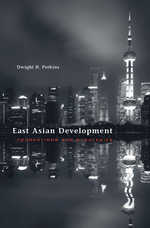 East Asian Development: Foundations and Strategies
Dwight H. Perkins
Harvard University Press, 2013 In the early 1960s, fewer than five percent of Japanese owned automobiles, China’s per capita income was among the lowest in Asia, and living standards in South Korea’s rural areas were on par with some of the world’s poorest countries. Today, these are three of the most powerful economies on earth. Dwight Perkins grapples with both the contemporary and historical causes and consequences of the turnaround, drawing on firsthand experience in the region to explain how Asian countries sustained such rapid economic growth in the second half of the twentieth century.
East Asian Development offers a comprehensive view of the region, from Japan and the “Asian Tigers” (Hong Kong, Singapore, Taiwan, South Korea) to Indonesia, Vietnam, Thailand, Malaysia, and China—a behemoth larger than all the other economies combined. While the overall picture of Asian growth is positive, no single economic policy has been effective regionwide. Interventionist policies that worked well in some countries failed elsewhere. Perkins analyzes income distribution, to uncover why initially egalitarian societies have ended up in very different places, with Japan, for example, maintaining a modest gap between rich and poor while China has become one of Asia’s most unequal economies.
Today, the once-dynamic Japanese and Korean economies are sluggish, and even China shows signs of losing steam. Perkins investigates whether this is a regional phenomenon or typical of all economies at this stage of development. His inquiry reminds us that the uncharted waters of China’s vast economy make predictions of its future performance speculative at best.
East Central and Eastern Europe in the Early Middle Ages
Florin Curta, Editor
University of Michigan Press, 2005 The first book in English to blend history and archaeology for a period of history currently receiving much scholarly attention, East Central and Eastern Europe in the Early Middle Ages examines key problems of the early medieval history of Eastern Europe, with particular reference to society, state, and the conversion to Christianity, and the diverse ways in which these aspects have been approached in the historiography of the region. The included essays examine the documentary and archaeological evidence of early medieval Europe in an attempt to assess its importance in understanding the construction of cultural identity and the process of political mobilization for the rise of the states. The book addresses an audience of historians, archaeologists, anthropologists, and linguists with an interest in the history of Eastern Europe.
East Christian Paintings in the Freer Collection
Charles R. Morey
University of Michigan Press, 1914 In this brief volume of the University of Michigan Studies: Humanistic Series, Charles R. Morey takes a detailed look at several items in Charles Freer’s collection of Christian art: two miniatures of St. John Climacus, eight miniatures from a manuscript of the Gospels, and the painted covers of the Washington manuscript of the Gospels. Sketches of the art under discussion are included.
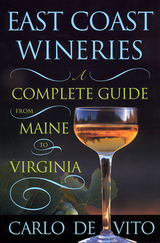 East Coast Wineries: A Complete Guide from Maine to Virginia
De Vito, Carlo
Rutgers University Press, 2003 The only comprehensive, up-to-date guide to wineries of the eastern United States! Look out Napa Valley. From Maine to Virginia, a surprising number of vintners are producing impressive wines worthy of a celebratory toast. Or two. Once thought to be a region dominated by quaint farm wines, the eastern U.S. now boasts a number of highly coveted wines. Pinot Noirs and Merlots, Rieslings and Gewürztraminers are being bottled all along the Atlantic, so even the most discriminating wine drinker can find something to please the palate. Here is the only comprehensive, up-to-date directory to nearly 300 wineries across New England and the mid-Atlantic. Wineries in thirteen states are covered: Connecticut, Delaware, Maine, Maryland, Massachusetts, New Hampshire, New Jersey, New York, Pennsylvania, Rhode Island, Vermont, Virginia, and West Virginia. Invaluable as both a buying and touring guide, East Coast Wineries offers insights into the winemaking world and puts the reviews of the experts at your fingertips. Features include: A short history of the winery
A listing of wines offered by that winery, plus recommended buys
Reviews by wine experts from major newspapers, magazines, and journals
Directions and hours of operation
A listing of annual wine festivals and other special events Whether you’re a wine connoisseur or a beginner, East Coast Wineries is the book to read. Cheers!
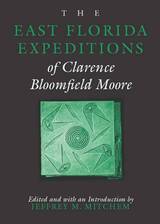 The East Florida Expeditions of Clarence Bloomfield Moore
Clarence Bloomfield Moore, edited by Jeffrey M. Mitchem
University of Alabama Press, 1999 A Dan Josselyn Memorial Publication
This comprehensive compilation of Moore's archaeological publications on eastern Florida will prove an invaluable primary resource for Florida archaeologists. Clarence B. Moore (1852-1936), a wealthy Philadelphia socialite, paper company heir, and photographer made the archaeology of the Southeast his passion beginning in the 1870s. This volume collects 17 of Moore's publications on East Florida, originally published between 1892 and 1903. These invaluable and copiously illustrated works document the results of Moore's numerous archaeological expeditions along Florida's eastern coastline from the Georgia border to Lake Okeechobee and focus primarily on sites along the St. Johns River and its tributaries. Moore's archaeological work in East Florida was arguably his best and most thorough research from a modern perspective.
Jeffrey Mitchem's introduction to this volume describes and analyzes Moore's work in East Florida, summarizes what we know about the sites Moore investigated, and surveys subsequent archaeological work conducted in this area since Moore's expeditions. Mitchem's introduction highlights the significance of Moore's work on the shell heaps along the St. Johns River. It led to the earliest recorded instance of a researcher noting the changes in pottery styles in the region, a major key to establishing chronologies.In 1894, Moore wrote of his hope "that the archaeology of Florida may be redeemed from the obscurity that has hitherto characterized it." Over a century later, this Press has aimed to fulfill Moore's wish by reprinting this and other collections of his archaeological publications.
 The East India Company and Army Reform, 1783-1798
Raymond Callahan
Harvard University Press, 1972 Here is the first detailed study of the British government's late eighteenth-century attempt to reorganize the East India Company's army. The defeat of that attempt by the Company's officers involved the ruin of the governor-general, Sir John Shore, whose "failure" in dealing with the officers has been held against him by generations of historians.
Tracing the events from three points of view--those of the British government, the Company's government in Calcutta, and the officers of the Company's service--Raymond Callahan shows that the aspects of the Company's service which struck observers in London as inefficient and corrupt were, in the officers' view, precisely those things that made the Company's service worth entering. Barred by lack of wealth or social standing from the King's service, the officers looked upon their hazardous Indian exile as a chance to build their fortunes. The Company's service, especially its rule of promotion by strict seniority, was designed to facilitate this, and any attempt to restructure it was bound to provoke the opposition and resentment of the Company's officers. Failure to comprehend this fact on the part of both Shore's predecessor, Lord Cornwallis, and the British government made the subsequent clash inevitable.
Callahan concludes that Shore handled the officers in the only way open to him and that he was the victim of the mistakes of Cornwallis, whose service as governor-general has heretofore been considered a success.
East India Company at Home, 1757-1857
Edited by Margot Finn and Kate Smith
University College London, 2018 In the century between 1757 and 1857, The East India Company brought both sizeable affluence and fresh perspective back home to Britain from the Indian subcontinent. During this period, the Company shifted its activities and increasingly employed civil servants, army officers, surveyors, and doctors, many of whom returned to Britain with newly acquired wealth, tastes, and identities. This new volume moves beyond conventional academic narratives by drawing on wider research, exploring how the empire in Asia shaped British country houses, thus contributing to the ongoing conversation on imperial culture and its British legacies.
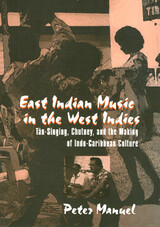 East Indian Music
Peter Manuel
Temple University Press, 2000 Trinidadian sitarist, composer, and music authority Mangal Patasar once remarked and tan-singing, "You take a capsule from India, leave it here for a hundred years, and this is what you get." Patasar was referring to what may be the most sophisticated and distinctive art form cultivated among the one and a half million East Indians whose ancestors migrated as indentured laborers from colonial India to the West Indies between 1845 and 1917. Known in Trinidad and Guyana as "tan-singing" or "local-classical music" and in Suriname as "baithak gana" ("sitting music"), tan-singing has evolved in to a unique idiom, embodying the rich poetic and musical heritage brought from India as modified by a diaspora group largely cut off from its ancestral homeland.
In recent decades, however, tan-singing has been declining, regarded as quaint and crude by younger generations raised on MTV, Hindi film music, and disco. At the same time, Indo-Caribbeans have been participating in their countries' economic, political, and cultural lives to a far greater extent than previously. Accompanying this participation has been a lively cultural revival, encompassing both an enhanced assertion of Indianness and a spirit of innovative syncretism. One of the most well-known products of this process is chutney, a dynamic music and dance phenomenon that is simultaneously a folk revival and a pop hybrid. In Trinidad, it has also been the vehicle for a controversial form of female empowerment and an agent of a new, more inclusive, conception of national identity.
Thus, East Indian Music in the West Indies is a portrait of a diaspora community in motion. It documents the social and cultural development of a people "without history," a people who have sometimes been dismissed as foreigners who merely perpetuate the culture of the homeland rather than becoming "truly" Caribbean. Professor Manuel shows how inaccurate this characterization is. On the one hand, in the form of tan-singing, it examines the distinctiveness of traditional Indo-Caribbean musical culture. On the other, in the form of chutney, it examines the new assertiveness and syncretism of Indo-Caribbean popular music.
Students of Indo-Caribbean music and curious world-music fans alike will be fascinated by Professor Manuel's guided tour through the complex and exciting world of Indo-Caribbean musical culture.
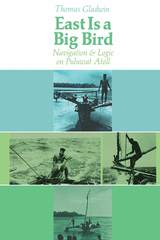 East Is a Big Bird: Navigation and Logic on Puluwat Atoll
Thomas Gladwin
Harvard University Press, 1970 Puluwat Atoll in Micronesia, with a population of only a few hundred proud seafaring people, can fulfill anyone's romantic daydream of the South Seas. Thomas Gladwin has written a beautiful and perceptive book which describes the complex navigational systems of the Puluwat natives, yet has done so principally to provide new insights into the effects of poverty in Western cultures.
The cognitive system which enables the Puluwatans to sail their canoes without instruments over trackless expanses of the Pacific Ocean is sophisticated and complex, yet the Puluwat native would score low on a standardized intelligence test. The author relates this discrepancy between performance and measured abilities to the educational problems of disadvantaged children. He presents his arguments simply and clearly, with sensitive and detailed descriptions and many excellent illustrations. His book will appeal to anthropologists, psychologists, and sailing enthusiasts alike.
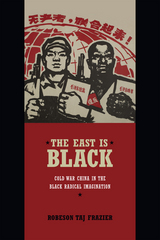 The East Is Black: Cold War China in the Black Radical Imagination
Robeson Taj Frazier
Duke University Press, 2015 During the Cold War, several prominent African American radical activist-intellectuals—including W.E.B. and Shirley Graham Du Bois, journalist William Worthy, Marxist feminist Vicki Garvin, and freedom fighters Mabel and Robert Williams—traveled and lived in China. There, they used a variety of media to express their solidarity with Chinese communism and to redefine the relationship between Asian struggles against imperialism and black American movements against social, racial, and economic injustice. In The East Is Black, Taj Frazier examines the ways in which these figures and the Chinese government embraced the idea of shared struggle against U.S. policies at home and abroad. He analyzes their diverse cultural output (newsletters, print journalism, radio broadcasts, political cartoons, lectures, and documentaries) to document how they imagined communist China’s role within a broader vision of a worldwide anticapitalist coalition against racism and imperialism.
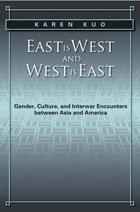 East is West and West is East: Gender, Culture, and Interwar Encounters between Asia and America
Karen Kuo
Temple University Press, 2012 Between 1919-1938, contact between Asia and America forced a reassessment of the normative boundaries of race, sex, gender, class, home, and nation. Karen Kuo’s provocative East Is West and West Is East looks closely at these global shifts to modernity. In her analysis of five forgotten texts—the 1930 film East Is West, Frank Capra’s 1937 version of Lost Horizon and its 1973 remake, Younghill Kang's novel East Goes West, and Baroness Ishimoto’s memoir/manifesto, Facing Both Ways—Kuo elucidates how “Asia” played a role in shaping American gender and racial identities and how Asian authors understood modern America and its social, political, and cultural influence on Asia. Kuo asserts that while notions of white and Asian racial difference remain salient, sexual and gendered constructions of Asians and whites were at times about similarity and intersections as much as they were about establishing differences.
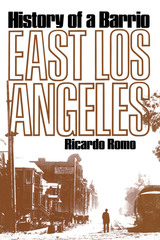 East Los Angeles: History of a Barrio
By Ricardo Romo
University of Texas Press, 1983 This is the story of the largest Mexican-American community in the United States, the city within a city known as "East Los Angeles." How did this barrio of over one million men and women—occupying an area greater than Manhattan or Washington D.C.—come to be? Although promoted early in this century as a workers' paradise, Los Angeles fared poorly in attracting European immigrants and American blue-collar workers. Wages were low, and these workers were understandably reluctant to come to a city which was also troubled by labor strife. Mexicans made up the difference, arriving in the city in massive numbers. Who these Mexicans were and the conditions that caused them to leave their own country are revealed in East Los Angeles. The author examines how they adjusted to life in one of the fastest-growing cities in the United States, how they fared in this country's labor market, and the problems of segregation and prejudice they confronted.
East Lynne
Mitchell, Sally
Rutgers University Press, 1984 Part of the "Everyman" series which has been re-set with wide margins for notes and easy-to-read type. Each title includes a themed introduction by leading authorities on the subject, life-and-times chronology of the author, text summaries, annotated reading lists and selected criticism and notes.
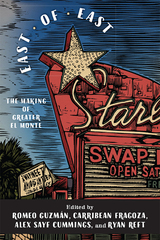 East of East: The Making of Greater El Monte
Romeo Guzmán
Rutgers University Press, 2020 East of East: The Making of Greater El Monte, is an edited collection of thirty-one essays that trace the experience of a California community over three centuries, from eighteenth-century Spanish colonization to twenty-first century globalization. Employing traditional historical scholarship, oral history, creative nonfiction and original art, the book provides a radical new history of El Monte and South El Monte, showing how interdisciplinary and community-engaged scholarship can break new ground in public history. East of East tells stories that have been excluded from dominant historical narratives—stories that long survived only in the popular memory of residents, as well as narratives that have been almost completely buried and all but forgotten. Its cast of characters includes white vigilantes, Mexican anarchists, Japanese farmers, labor organizers, civil rights pioneers, and punk rockers, as well as the ordinary and unnamed youth who generated a vibrant local culture at dances and dive bars.
East Of Eden, West Of Zion: Essays On Nevada
Wilbur S. Shepperson
University of Nevada Press, 1989 A collection of essays in which a dozen historians and novelists present their impressions and concerns about "end of the century Nevada." Human expectations and illusions are seen as a backdrop for today's Nevada as a new human frontier. As an overview of Nevada society, this study deals with culture as well as economics, with tradition as well as rapid population growth. The essayists inquire whether the friction between acquisition and preservation, quick wealth and refined sensitivity, will build a more humane and enlightened society.
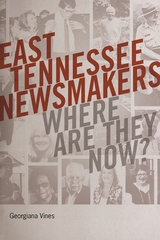 East Tennessee Newsmakers: Where Are They Now?
Georgiana Vines
University of Tennessee Press, 2019 The Sunsphere, World’s Fair Site, and Neyland Stadium are Knoxville landmarks of pride and passion, history and culture. But anyone who has resided in this mid-sized southern city knows that it derives its unique glow not so much from its locale but from its people— the ones who built it and stayed true to it over the years.
In East Tennessee Newsmakers, Georgiana Vines pays tribute to some remarkable individuals and their contributions to Knoxville and the history, civic and cultural life, and politics of East Tennessee. Some personalities linked with the Great Smoky Mountains National Park are part of the blend. While many of these profiles celebrate personal achievement and local renown, the true narrative is found in the tapestry as a whole.
Presenting the narrative in five parts—Political Notes, UT Spotlights, Media Sparks, Park Personalities, and About Town—Vines prefaces the stories with insight into her inspiration for the collection, discussing her career in journalism and how a Knoxville News Sentinel features series bloomed into the present book-length work on notable and interconnected Knoxvillians and other East Tennesseans. From political figures like Jimmy Duncan and Tipper Gore to well-known local personalities, including Sam Beall and Mary Lynn Majors, their stories and many more have here been updated and expanded into an impressively researched, entertaining, and valuable history of the colorful and dynamic city of Knoxville and the people who have made it so.
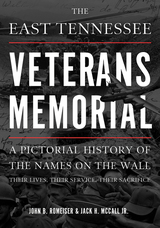 The East Tennessee Veterans Memorial: A Pictorial History of the Names on the Wall, Their Service, and Their Sacrifice
John Romeiser
University of Tennessee Press, 2019 At the northern edge of the World’s Fair Park in Knoxville, Tennessee, a striking set of thirty-two granite pylons stands as a monument to the tradition of military service in East Tennessee. The East Tennessee Veterans Memorial explores the creation and significance of this commemorative monument, providing a window into the lives and courageous actions of the more than 6,200 men and women whose names are inscribed on the sobering markers. In this book, author John Romeiser, with the assistance of Jack McCall, showcases the stories of over 300 service members and their families, documented with public records, obituaries, and family recollections. In these pages, readers will find the accounts of each of East Tennessee’s 14 Medal of Honor recipients, along with tales of a variety of other veterans from World War I to the present, people whose lives and deaths together form a microcosm of the armed forces. Richly illustrated with historical photographs, this ambitious undertaking delivers not only a compelling history of individual lives but also a broader sense of military history in the region and a contribution to the scholarship on the value of monuments as a means to honor the past.
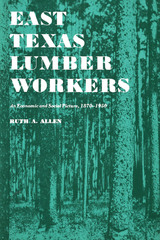 East Texas Lumber Workers: An Economic and Social Picture, 1870-1950
By Ruth A. Allen
University of Texas Press, 1961 In 1950 a million Texans—more than a tenth of the entire population of the state—lived in a region where one family in every two earned less than $2,000 a year. Composing that region are the thirty-two counties of northeastern Texas in which the lumber industry is concentrated. In eleven of these counties, 70 percent of family incomes were less than $2,000. Until 1930 the Texas lumber industry furnished employment for more workers than any other manufacturing in the state. Though displaced in that year by oil refining, it still ranks near the top in the number of workers it hires. The aim of this study is to show how these people whose economic life has been dominated by a single industry have fared for eighty years in comparison with their fellow Texans and with lumber workers in the Pacific Northwest and the Lakes states. Texas lumber workers have always been in many ways a peculiar people, conditioned by their historical roots, by isolation from the mainstream of national life, and by the deeply rural nature of their environment. A typical group portrait would show two of each three persons to be adult white males. One of three would be African American. It would not show any women. Here and there a face would bear the marks of alien birth. Most of the figures, however, would be natives not only of America but of East Texas. In family background, in work experience, and in social and economic environment these people have been uniquely homogeneous. In the early 1950s the Congressional Committee on the Economic Report of the President designated the area as one of “deep poverty” and pinpointed it as one which had failed notably to reach the level of living achieved by the state and the nation. Its economic status has been lower than that of any other group in Texas except household servants, and its education level has been well below that of the state and nation and increasingly below the level of acceptance in any jobs other than those requiring a minimum of training and competence. The immediate past has shown not only no improvement but a positive deterioration. Drawing upon personal investigation and state and federal reports, the author has put the contemporary situation in a historical setting. Her delineation is principally in terms of figures that weave a social fabric from which definite patterns emerge—insecure wages, illiteracy and inefficient production, unsuccessful attempts to achieve effective organization. Though the book is directed primarily toward those who should feel concern at its revelations, it also suggests a wealth of untapped sources for the ethnographer and the folklorist.
 Easter In Ordinary: Reflections on Human Experience and the Knowledge of God
Nicholas Lash
University of Notre Dame Press, 1990 “Relying on John Henry Newman, Friedrich von Hügel, Martin Buber and, more briefly, Hegel, Kant, Schleiermacher, J. F. Fries, and Karl Rahner, and writing from a Christian perspective—Lash argues that mysticism should not be reduced to ‘feelings’ and that the experience of God is not something other than the general experiences had in ordinary life. While accessible to lay readers, this book would be appreciated by professional philosophers and theologians.” —Library Journal
“A classical, contemporary example of the theological mind at its clearest is Nicholas Lash’s Easter in Ordinary. This complex, distilled, but deeply affecting study of William James, Newman, von Hügel, and Buber, among others, is the choice product of the believing theologian’s art. Tradition rebottled with an awareness of postmodern needs but not necessarily with the mass-market tastes in mind. Demanding, uncommon, quenching.” —Commonweal
Eastern Alpine Guide: Natural History and Conservation of Mountain Tundra East of the Rockies
Edited by Mike Jones and Liz Willey
University Press of New England, 2018 This unique book celebrates and documents the incredible and colorful biodiversity of the mountain landscapes of eastern North America, covering all of the major alpine ecosystems in New England, New York, Québec, Newfoundland, and Labrador. Twenty scientists, explorers, naturalists, and land managers from the United States and Canada have collaborated to create this definitive and beautiful account of the flora and fauna of the eastern alpine tundra.
Eastern Arabic
Frank A. Rice and Majed F. Sa’id. Foreword by Margaret Nydell
Georgetown University Press The Middle East has become an increasingly important place in the minds and concerns of the English-speaking world. This volume, originally published under the title Jerusalem Arabic, is the gold standard for anyone beginning to learn the Arabic spoken by Palestinians, or those who live in Syria or Lebanon. Written in transcription using the Roman alphabet, the "Levantine" Arabic, or Jerusalem dialect, is a central Middle Eastern dialect and is recognized by Arabs virtually anywhere—in large part due to the Palestinian diaspora—and a good choice for anyone wishing to learn a base Arabic dialect. Enhanced by audio MP3 files—available for free download at www.press.georgetown.edu—Eastern Arabic provides the best available structured introduction to the essential features and vocabulary of spoken Palestinian Arabic.
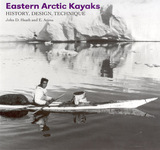 Eastern Arctic Kayaks: History, Design, Technique
John Heath
University of Alaska Press, 2004 Eastern Arctic Kayaks is the product of years of kayak study by two of the world's experts. Combining analyses of form and function with historical background and illustrations of kayaking techniques, this volume is a storehouse of information for recreational kayakers and scholarly readers alike. Drawing from his vast practical experience and extensive study of museum specimens, John D. Heath offers a comprehensive overview of the evolution and construction of Greenland kayaks supplemented with an illustrated series of rolling and sculling techniques. E. Arima examines kayaks of the eastern Canadian Arctic, covering woodworking tools, construction techniques, and the treatment of skins for the kayak cover. Core chapters on Greenland and eastern Canada are accompanied by essential articles by Greg Stamer on the use of the Greenland paddle and two studies of kayaks in European museums by Harvey Golden and Hugh Collings. A valuable excerpt from John Brand's Little Kayak Book series makes this British publication available to American readers for the first time. Lavishly illustrated with drawings and historic photographs, Eastern Arctic Kayaks is a landmark study in the history of watercraft--an essential resource for recreational kayakers and maritime historians and for anyone interested in northern Native material culture.
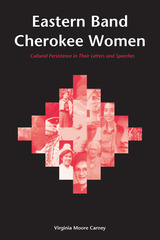 Eastern Band Cherokee Women: Cultural Persistence in Their Letters and Speeches
Virginia Moore Carney
University of Tennessee Press, 2005 For the first time, the voices of Eastern Band Cherokee women receive their proper due. A watershed event, this book unearths three centuries of previously unknown and largely ignored speeches, letters, and other writings from Eastern Band Cherokee women. Like other Native American groups, the Cherokees endured numerous hardships at the hands of the United States government. As their heritage came under assault, so did their desire to keep their traditions. The Eastern Band Cherokees were no exception, and at the forefront of their struggle were their women. Eastern Band Cherokee Women analyzes how the women of the Eastern Band served as honored members of the tribe, occupying both positions of leadership and respect. Carney shows how in the early 1800s women leaders, such as Beloved Nancy Ward, battled to retain her people’s heritage and sovereignty. Other women, such as Catharine Brown, a mission school student, discovered the power of the written word and thereby made themselves heard just as eloquently. Carney traces the voices of these women through the twentieth century, describing how Cherokees such as Marie Junaluska and Joyce Dugan have preserved a culture threatened by an increasingly homogenous society. This book is a fitting testament to their contributions. Eastern Band Cherokee Women stands out by demonstrating the overwhelming importance of women to the preservation of the Eastern Band. From passionate speeches to articulately drafted personal letters, Carney helps readers explore the many nuances of these timeless voices.
The Eastern Band of Cherokees: 1819-1900
John R. Finger
University of Tennessee Press, 1984 This volume presents the story of the Eastern Band of Cherokees during the nineteenth century. This group – the tribal remnant in North Carolina that escaped removal in the 1830’s – found their fortitude and resilience continually tested as they struggled with a variety of problems, including the upheavals of the Civil War and Reconstruction, internal divisiveness, white encroachment on their lands, and a poorly defined relationship with the state and federal governments. Yet despite such stresses and a selective adaptation in the face of social and economic changes, the Eastern Cherokees retained a sense of tribal identity as they stood at the threshold of the twentieth century.
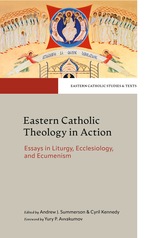 Eastern Catholic Theology in Action: Essays in Liturgy, Ecclesiology, and Ecumenism
Andrew J. Summerson
Catholic University of America Press, 2024 The Second Vatican Council urged Eastern Catholics to cultivate their share of divine revelation for the benefit of the entire Catholic Church. Yet, more than 50 years later, the Eastern Catholic Churches frequently remain on the margins, both in the theological academy and in the life of the Church more broadly. In an effort to remedy this situation, at least in part, this volume offers a scholarly reflection on the unique patrimony of the Eastern Catholic Churches, divided according to the categories of Liturgy, Theology, Spirituality, Discipline, and Culture. In so doing, it both follows the categories used to define a Church sui iuris in the Code of Canon Law for the Eastern Churches, and builds on the legacy of the Rev. Peter Galadza, to whom the volume is dedicated.
On one hand, the volume and its essays are intentionally introductory, revealing the worlds of Eastern Catholicism and the variety of theological approaches that take place there. Emerging in part from the experience of teaching and preaching by scholars of Eastern Christianity, who are frequently asked for a basic introduction to Eastern Catholic theology, and have little to offer in response, these essays gather an international group of scholars engaging in critical, theological reflection from an Eastern Catholic perspective. This approach is rounded out by contributions from Roman Catholic, Orthodox, and Protestant scholars, who articulate their own reception and appreciation of the Eastern Catholic theological heritage.
At the same time, however, several of the essays in this volume relate the history and current reality of Eastern Catholicism to the Orthodox and Roman Catholic Churches, yet without ignoring how frequently Eastern Catholics live, worship, and theologize without self-conscious regard for their unique ecclesial situation. Indeed, these authors show, Eastern Catholic theology can be unself-consciously grounded in the patristic tradition, and Eastern Catholics can simply “do” theology, without worrying about ecclesial politics. Readers will thus find here the best of both worlds: both an introduction to the unique and frequently ignored patrimony of the Eastern Catholic Churches, and a series of essays that avoids the all-to-common pitfall of reducing these traditions to a parody of other Churches, Eastern or Western. Instead, by engaging with the sources of the Christian tradition – as Eastern Catholics, yes, but first and foremost as Christians – the authors reveal how much their tradition can offer the Catholic Church as a whole.
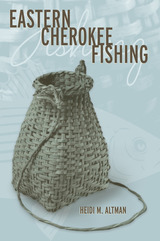 Eastern Cherokee Fishing
Heidi M. Altman
University of Alabama Press, 2006 Cherokee identity as revealed in fishing methods and materials. In Eastern Cherokee Fishing, life histories, folktales, and reminiscences about fish gathered from interviews with Cherokee and non-Cherokee people provide a clear and personal picture of the changes in the Qualla Boundary (Eastern Band of the) Cherokee in the last 75 years. Coupled with documentary research, these ethnographic histories illuminate changes in the language, culture, and environment (particularly, aquatic resources) since contact with Europeans and examine the role these changes have played in the traditions and lives of the contemporary Cherokees.
Interviewees include a great range of informants, from native speakers of Cherokee with extensive knowledge of traditional fishing methods to Euro-American English speakers whose families have lived in North Carolina for many generations and know about contemporary fishing practices in the area. The topic of fishing thus offers perspective on the Cherokee language, the vigor of the Cherokee system of native knowledge, and the history of the relationship between Cherokee people and the local environment. Heidi Altman also examines the role of fishing as a tourist enterprise and how fishing practices affect tribal waters.
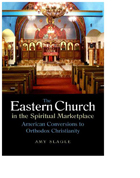 The Eastern Church in the Spiritual Marketplace: American Conversions to Orthodox Christianity
Amy Slagle
Northern Illinois University Press, 2011
Like many Americans, the Eastern Orthodox converts in this study are
participants in what scholars today refer to as the “spiritual marketplace”
or quest culture of expanding religious diversity and individual choice-
making that marks the post-World War II American religious landscape.
In this highly readable ethnographic study, Slagle explores the ways in
which converts, clerics, and lifelong church members use marketplace
metaphors in describing and enacting their religious lives.
Slagle conducted participant observation and formal semi-structured
interviews in Orthodox churches in Pittsburgh, Pennsylvania, and
Jackson, Mississippi. Known among Orthodox Christians as the “Holy
Land” of North American Orthodoxy, Pittsburgh offers an important
context for exploring the interplay of Orthodox Christianity with the
mainstreams of American religious life. Slagle’s second round of research
in Jackson sheds light on the American Bible Belt where over the past
thirty years the Orthodox Church in America has marshaled significant
resources to build mission parishes.
Relatively few ethnographic studies have examined Eastern Orthodox
Christianity in the United States, and Slagle’s book fills a significant gap.
This lucidly written book is an ideal selection for courses in the sociology
and anthropology of religion, contemporary Christianity, and religious
change. Scholars of Orthodox Christianity, as well as clerical and lay
people interested in Eastern Orthodoxy, will find this book to be of
great appeal.
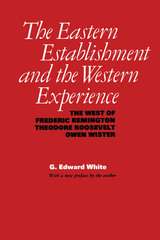 The Eastern Establishment and the Western Experience: The West of Frederic Remington, Theodore Roosevelt, and Owen Wister
By G. Edward White
University of Texas Press, 1989 First published in 1968, The Eastern Establishment and the Western Experience has become a classic in the field of American studies. G. Edward White traces the origins of “the West of the imagination” to the adolescent experiences of Frederic Remington, Theodore Roosevelt, and Owen Wister—three Easterners from upper-class backgrounds who went West in the 1880s in search of an alternative way of life. Each of the three men came to identify with a somewhat idealized “Wild West” that embodied the virtues of individualism, self-reliance, and rugged masculinity. When they returned East, they popularized this image of the West through art, literature, politics, and even their public personae. Moreover, these Western virtues soon became and have remained American virtues—a patriotic ideal that links Easterners with Westerners. With a multidisciplinary blend of history, biography, sociology, psychology, and literary criticism, The Eastern Establishment and the Western Experience will appeal to a wide audience. The author has written a new preface, offering additional perspectives on the mythology of the West and its effect on the American character.
Eastern Europe in Icelandic Sagas
Tatjana N. Jackson
Arc Humanities Press, 2019 Based on the material of the Old Norse Icelandic sources written down in the twelfth to fourteenth centuries, this book demonstrates how medieval Scandinavians imagined Eastern Europe. It reconstructs the system of medieval Scandinavian perception of space in general, and the eastern part of the <i>oecumene</i> in particular. It also examines the unique information of these sources, of which the Russian chronicles were unaware.
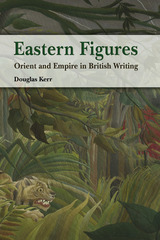 Eastern Figures: Orient and Empire in British Writing
Douglas Kerr
Hong Kong University Press, 2008 Eastern Figures is a literary history with a difference. It examines British writing about the East – centred on India but radiating as far as Egypt and the Pacific – in the colonial and postcolonial period. It takes as its subject “the East” that was real to the British imagination, largely the creation of writers who described and told stories about it, descriptions and stories coloured by the experience of empire and its aftermath. It is bold in its scope, with a centre of gravity in the work of writers like Stevenson, Kipling, Conrad, and Orwell, but also covering less well-known literary authors, and including Anglo-Indian romance writing, the reports and memoirs of administrators, and travel writing from Auden and Isherwood in China to Redmond O’Hanlon in Borneo. Eastern Figures produces a history of this writing by looking at a series of “figures” or tropes of representation through which successive writers sought to represent the East and the British experience of it – tropes such as exploring the hinterland, going native, and the figure of rule itself. Eastern Figures is accessible to anyone interested in the literary and cultural history of empire and its aftermath. It will be of especial interest to students and scholars of colonial and postcolonial writing, as it raises issues of identity and representation, power and knowledge, and centrally the question of how to represent other people. It has original ideas and approaches to offer specialists in literary history of the nineteenth and twentieth centuries, cultural historians, and researchers in colonial discourse analysis, postcolonial studies, and Asian area studies and history. It is also aimed at students in courses in literature and empire, culture and imperialism, and cross-cultural studies.
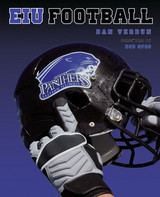 Eastern Illinois Panthers Football
Dan Verdun
Northern Illinois University Press, 2014 Eastern Illinois Panthers Football chronicles the legend and lore of this storied program, from the early days under coach and university-auditor-of-accounting Otis Caldwell, to today’s perennial Ohio Valley Conference powerhouse. Sports historian Dan Verdun sets down amazing details about EIU’s 15 FCS playoff appearances, 7 OVC championships, 3 NFL head coaches, 2 Walter Payton Award winners, and the 1978 NCAA Division II national championship.
Panther fans will recognize the names of Mike Shanahan, Darrell Mudra, Jeff Gossett, Sean Payton, Bob Spoo and Tony Romo, and many others. Dan Verdun tells these men’s stories from extensive research and personal interviews. Find out fascinating details about key players and coaches - how they arrived at EIU, what they accomplished in their time wearing the blue and gray, as well as the paths their lives took once they played their last game and graduation day arrived.
The greatest moments in EIU Panther football glory are recounted with fresh new insight. Read about the legendary days of quarterback Bill Glenn, who found success in the NFL of the 1940s. Relive the dominance and get the inside stories of the greatest teams in EIU football history. They’re all here: the 1978 NCAA Division-II national champions, the 1980 runner-ups, the quarterfinalist 1982, 1986, 1989, and 2013 teams along with the 1995 and 2001 conference champions and playoff qualifiers.
With far-ranging appeal, Eastern Illinois Panthers Football will interest those who identify as Panthers as well as sports fans who want to discover the merits of this fine football program. Focused on team members and their coaches over the entire history of EIU football, this book will inform and entertain all age groups.
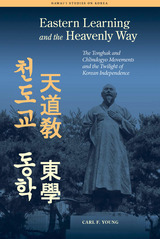 Eastern Learning and the Heavenly Way: The Tonghak and Chondogyo Movements and the Twilight of Korean Independence
Carl Young
University of Hawaii Press, 2014 Tonghak, or Eastern Learning, was the first major new religion in modern Korean history. Founded in 1860, it combined aspects of a variety of Korean religious traditions. Because of its appeal to the poor and marginalized, it became best known for its prominent role in the largest peasant rebellion in Korean history in 1894, which set the stage for a wider regional conflict, the Sino-Japanese War of 1894–1895. Although the rebellion failed, it caused immense changes in Korean society and played a part in the war that ended in Japan's victory and its eventual rise as an imperial power.
It was in this context of social change and an increasingly perilous international situation that Tonghak rebuilt itself, emerging as Ch’ŏndogyo (Teaching of the Heavenly Way) in 1906. During the years before Japan’s annexation of Korea in 1910, Ch’ŏndogyo continued to evolve by engaging with new currents in social and political thought, strengthening its institutions, and using new communication technologies to spread its religious and political message. In spite of Korea’s loss of independence, Ch’ŏndogyo would endure and play a major role in Korean nationalist movements in the Japanese colonial period, most notably the March First independence demonstrations in 1919. It was only able to thrive thanks to the processes that had taken place in the twilight years of Korean independence.
This book focuses on the internal developments in the Tonghak and Ch’ŏndogyo movements between 1895 and 1910. Drawing on a variety of sources in several languages such as religious histories, doctrinal works, newspapers, government reports, and foreign diplomatic reports, it explains how Tonghak survived the turmoil following the failed 1894 rebellion to set the foundations for Ch’ŏndogyo’s important role in the Japanese colonial period. The story of Tonghak and Ch’ŏndogyo not only is an example of how new religions interact with their surrounding societies and how they consolidate and institutionalize themselves as they become more established; it also reveals the processes by which Koreans coped and engaged with the challenges of social, political, and economic change and the looming darkness that would result in the extinguishing of national independence at the hands of Japan’s expanding empire.
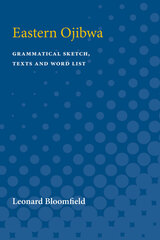 Eastern Ojibwa: Grammatical Sketch, Texts and Word List
Leonard Bloomfield
University of Michigan Press, 1957 In this study of Eastern Ojibwa, the late Leonard Bloomfield, first and greatest of structural linguists, presents his only extended treatment of the Central Algonquin syntax.A dialect of the Central Algonquin tongue, Ojibwa is spoken by the American Indians in the area of Lakes Superior, Huron, and Michigan; in Minnesota, Wisconsin, and Michigan, and in Ontario, Manitoba, and Saskatchewan.The texts, transcribed as dictated by an informant and phonetically rendered by Bernard Bloch, include an Indian's childhood memories: Grandmother, The White Man, Falling in the Water, Spring Thunderstorm; as well as Indian Folklore: The Sweating Cure, Fasting, Burial Rites, Love Medicine.Working with this unique collection of texts, which includes in several instances two or three versions of the same story, Bloomfield solves the two great phonetic difficulties of Ojibwa: distinction of lenis and fortis consonants, and the distinction of long and short vowels.
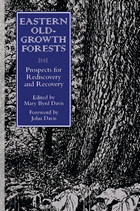 Eastern Old-Growth Forests: Prospects For Rediscovery And Recovery
Edited by Mary Byrd Davis; Foreword by John Davis
Island Press, 1996 Eastern Old-Growth Forests is an essential guide for understanding and protecting some of the most rare and ecologically valuable landscapes in the eastern United States. For conservation professionals, land stewards, policymakers, and curious naturalists, this book offers a rich reward: a deeper grasp of the forest ecosystems that anchor biodiversity, store carbon, and connect us to centuries of ecological and cultural history.
Through authoritative essays by leading ecologists, historians, and land managers, the book explores what defines old-growth in the East—its structure, species, and ecological functions—and why it matters now more than ever. You’ll gain the tools to recognize old-growth characteristics in the field, understand the threats facing these ancient forests, and make informed decisions about preservation and restoration strategies.
Beyond ecology, the book weaves in the cultural significance of these forests, showing how they have shaped human experience and imagination over time. This multidimensional perspective helps readers appreciate old-growth not just as a biological asset, but as a living archive of the past and a pillar of future resilience.
By the end, readers will walk away with clarity, motivation, and practical knowledge to advocate for and help protect old-growth forests across the region. Eastern Old-Growth Forests is both a call to action and a foundational reference for preserving what little remains—and what still might be restored.
 Eastern Orthodox and Anglicans: Diplomacy, Theology, and the Politics of Interwar Ecumenism
Bryn Geffert
University of Notre Dame Press, 2009
Eastern Orthodox and Anglicans is the first sustained study of inter-Orthodox relations, the special role of the Anglican Church, and the problems of Orthodox nationalism in the modern age. Despite many challenges, the interwar years were a time of intense creativity in the Russian Orthodox Church. Russian emigres, freed from enforced isolation in the wake of the Russian Revolution, found themselves in close contact with figures from other Orthodox churches and from the Roman Catholic Church and all varieties of Protestant confessions. For many reasons, Russian exiles found themselves drawn to the Anglican Church in particular. The interwar years thus witnessed a concentrated effort to bridge the gap between Orthodox and Anglican. Geffert's book is a detailed history of that effort. It is the story of efforts toward rapprochement by two churches and their ultimate failure to achieve formal unity. The same political, diplomatic, historical, personal, and religious forces that first inspired contact were the ones that ultimately undermined the effort. Bryn Geffert recounts the history of an important chapter in the history of Christian ecumenism, one that is relevant to contemporary efforts to achieve meaningful interfaith dialogue.
"At a time when the sun seems to have set on the twentieth century's long labor to reunite a divided Christendom, historians and theologians do well to remember what the dawn was like. Bryn Geffert provides, for the first time, a full and revealing history of one of the most central and fascinating episodes of modern ecumenism. Historically precise and theologically acute, Geffert's book allows us to appreciate the complex motives that fueled the ecumenical hopes of a distinguished generation, and also to understand why so much intelligence and good will fell so far short of its goal." --Bruce Marshall, Southern Methodist University
"Bryn Geffert brings a tremendous amount and considerable variety of source material to bear on the story of Anglican-Orthodox relations from the nineteenth century to around 1945. He also skillfully presents the secular political and diplomatic context in which Anglican-Orthodox church relations unfolded. This work will generate interest beyond the circle of church historians and ecumenists. Political and diplomatic historians interested in the religious dimensions of European/Middle Eastern/Russian history will find Geffert's work very useful." --Paul Valliere, Butler University
"[Geffert's] is the only work of its kind. Even among related studies, this one is singular in the depth of its coverage of Anglican-Orthodox and other ecumenical connections in the years between the world wars, while tracing the earlier nineteenth-century developments that led up to the intense period of ecumenical engagement, roughly from 1920 to 1937. . . . The narration is superb; the author knows how to tell a most complex story with clarity and color." --Michael Plekon, Baruch College
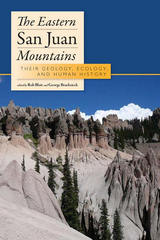 The Eastern San Juan Mountains: Their Ecology, Geology, and Human History
Rob Blair
University Press of Colorado, 2011 A companion to The Western San Juan Mountains (originally published in 1996), The Eastern San Juan Mountains details the physical environment, biological communities, human history, and points of interest in this rich and diverse mountain system. A natural division between the eastern and western slopes of the San Juans is the north-south line that runs approximately through Lake City, south of the crossing of the Piedra River by US Highway 160. In this super guidebook, twenty-seven contributors--all experts in their fields--artfully bring the geology, hydrology, animal and plant life, human histories, and travel routes of these eastern slopes to life. Designed to inform researchers, educators, and students about the region's complex systems, The Eastern San Juan Mountains also serves as an informative guidebook to accompany visitors along their travels on the Silver Thread National Scenic Byway, which stretches between South Fork and Lake City. The Eastern San Juan Mountains deserves a place next to The Western San Juan Mountains on the bookshelf of every naturalist, researcher, resident, educator, student, and tourist seeking a greater understanding of this marvelous place and its history.
East-West Divan: In Memory of Werner Mark Linz
Edited by Aran Byrne
Gingko, 2014 This collection of scholarly essays on Egyptian culture, history, society, archeology, literature, art, and conservation is published in memory of Werner Mark Linz, who spent much of the latter part of his professional life as the Director of the American University in Cairo Press. East-West Divan is the first volume of the Gingko Library, a publishing project that embraces scholarship from both East and West, conceived by Werner Mark Linz to foster greater cross-cultural understanding. Among the contributors to this collection are the Egyptian novelist Alaa Al Aswany, author of The Yacoubian Building; Egyptian archaeologist Zahi Hawass; the renowned Swiss theologian, Hans Küng; the author of the acclaimed A Fort of Nine Towers, Qais Akbar Omar; and Prince El Hassan bin Talal of Jordan.
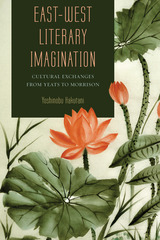 East-West Literary Imagination: Cultural Exchanges from Yeats to Morrison
Yoshinobu Hakutani
University of Missouri Press, 2017 This study traces the shaping presence of cultural interactions, arguing that American literature has become a hybridization of Eastern and Western literary traditions. Cultural exchanges between the East and West began in the early decades of the nineteenth century as American transcendentalists explored Eastern philosophies and arts. Hakutani examines this influence through the works of Emerson, Thoreau, and Whitman. He further demonstrates the East-West exchange through discussions of the interactions by modernists such as Yone Noguchi, Yeats, Pound, Camus, and Kerouac. Finally, he argues that African American literature, represented by Richard Wright, Ralph Ellison, Alice Walker, Toni Morrison, and James Emanuel, is postmodern. Their works exhibit their concerted efforts to abolish marginality and extend referentiality, exemplifying the postmodern East-West crossroads of cultures. A fuller understanding of their work is gained by situating them within this cultural conversation. The writings of Wright, for example, take on their full significance only when they are read, not as part of a national literature, but as an index to an evolving literature of cultural exchanges.
Easy Living: The Rise of the Home Office
Elizabeth A Patton
Rutgers University Press, 2020 How did Americans come to believe that working at home is feasible, productive, and desirable? Easy Living examines how the idea of working within the home was constructed and disseminated in popular culture and mass media during the twentieth century. Through the analysis of national magazines and newspapers, television and film, and marketing and advertising materials from the housing, telecommunications, and office technology industries, Easy Living traces changing concepts about what it meant to work in the home. These ideas reflected larger social, political-economic, and technological trends of the times. Elizabeth A. Patton reveals that the notion of the home as a space that exists solely in the private sphere is a myth, as the social meaning of the home and its market value in relation to the public sphere are intricately linked.
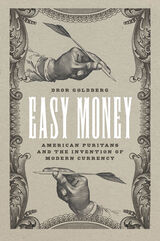 Easy Money: American Puritans and the Invention of Modern Currency
Dror Goldberg
University of Chicago Press, 2023 A sweeping history of the American invention of modern money. Economists endlessly debate the nature of legal tender monetary systems—coins and bills issued by a government or other authority. Yet the origins of these currencies have received little attention. Dror Goldberg tells the story of modern money in North America through the Massachusetts colony during the seventeenth century. As the young settlement transitioned to self-governance and its economy grew, the need to formalize a smooth exchange emerged. Printing local money followed. Easy Money illustrates how colonists invented contemporary currency by shifting its foundation from intrinsically valuable goods—such as silver—to the taxation of the state. Goldberg traces how this structure grew into a worldwide system in which, monetarily, we are all Massachusetts. Weaving economics, law, and American history, Easy Money is a new touchstone in the story of monetary systems.
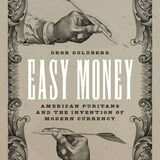 Easy Money: American Puritans and the Invention of Modern Currency
Dror Goldberg
University of Chicago Press, 2023 This is an auto-narrated audiobook edition of this book.
A sweeping history of the American invention of modern money. Economists endlessly debate the nature of legal tender monetary systems—coins and bills issued by a government or other authority. Yet the origins of these currencies have received little attention. Dror Goldberg tells the story of modern money in North America through the Massachusetts colony during the seventeenth century. As the young settlement transitioned to self-governance and its economy grew, the need to formalize a smooth exchange emerged. Printing local money followed. Easy Money illustrates how colonists invented contemporary currency by shifting its foundation from intrinsically valuable goods—such as silver—to the taxation of the state. Goldberg traces how this structure grew into a worldwide system in which, monetarily, we are all Massachusetts. Weaving economics, law, and American history, Easy Money is a new touchstone in the story of monetary systems.
Eat Like the Hogs: A Collection of Favorite Recipes from Razorback Greats
Karen Van Horn
University of Arkansas Press, 2025 Eat Like the Hogs: A Collection of Favorite Recipes from Razorback Greats features over 250 favorite recipes from University of Arkansas Athletics’ Legends. The favorite recipes of student-athletes and coaches from all eighteen Razorback sports are collected here alongside personal anecdotes and historic photos sure to bring back memories as vivid as the tastes of U. S. Reed’s Jamaican Oxtail Stew, Darren McFadden’s Country Boy Cooked Rabbit and Rice, or Sandi Morris’s Tortellini Soup.
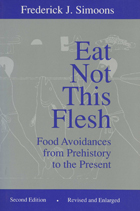 Eat Not This Flesh, 2nd Edition: Food Avoidances from Prehistory to the Present
Frederick J. Simoons
University of Wisconsin Press, 1994 Hailed as a classic when initially published in 1961, Eat Not This Flesh was the first book that explored, from a historical and cultural perspective, taboos against eating certain kinds of flesh. Frederick J. Simoons's research remains original and invaluable, the only attempt of its kind to reconstruct the origin and spread of food avoidances while challenging current Western explanations. In this expanded and updated edition, Simoons integrates new research as he examines the use and avoidance of flesh foods—including beef, pork, chicken, and eggs, camel, dog, horse, and fish—from antiquity to the present day.
Simoons suggests that Westerners are too ready, even in the absence of supporting evidence, to cite contemporary thinking about disease and environmental factors to explain why certain cultures avoid particular kinds of meat. He demonstrates how historical and archaeological evidence fails to support such explanations. He examines the origin of pork rejection in the Near East, explores the concept of the sacred cow in India and the ensuing ban on beef, and reveals how some African women abstain from chicken and eggs, fearing infertility.
While no single explanation exists for food taboos, Simoons finds that the powerful, recurrent theme of maintaining ritual purity, good health, and well-being underlies diet habits. He emphasizes that only a full range of factors can explain eating patterns, and he stresses the interplay of religious, moral, hygienic, ecological, and economic factors in the context of human culture. Maps, drawings, and photos highlighting food avoidance patterns in Africa, Asia, Europe, and the Pacific provide additional information throughout the book.
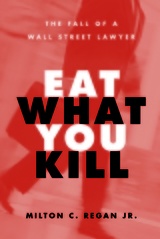 Eat What You Kill: The Fall of a Wall Street Lawyer
Milton C. Regan, Jr.
University of Michigan Press, 2005 "A wonderful character study of someone whose cognitive dissonance ('I am brilliant, therefore I must be doing everything correctly') led directly to his downfall. Students would do well to read this book before venturing forth into a large firm, a small firm, or any pressure-cooker environment."
-Nancy Rapoport, University of Houston Law Center
"Eat What You Kill is gripping and well written. . . . It weaves in academic commentary and understanding of professional ethics issues in a way that makes it accessible to everyone."
-Frank Partnoy, University of San Diego Law School
He had it all, and then he lost it. But why did he do it, risking everything-wealth, success, livelihood, freedom, and the security of family?
Eat What You Kill is the story of John Gellene, a rising star and bankruptcy partner at one of Wall Street's most venerable law firms. But when Gellene became entangled in a web of conflicting corporate and legal interests involving one of his clients, he was eventually charged with making false statements, indicted, found guilty of a federal crime, and sentenced to prison.
Milton C. Regan Jr. uses Gellene's case to prove that such conflicting interests are now disturbingly commonplace in the world of American corporate finance. Combining a journalist's eye with sharp psychological insight, Regan spins Gellene's story into a gripping drama of fundamental tensions in modern-day corporate practice and describes in perfect miniature the inexorable confluence of the interests of American corporations and their legal counselors.
This confluence may seem natural enough, but because these law firms serve many masters-corporations, venture capitalists, shareholder groups-it has paradoxically led to deep, pervasive conflicts of interest. Eat What You Kill gives us the story of a man trapped in this labyrinth, and reveals the individual and systemic factors that contributed to Gellene's demise.
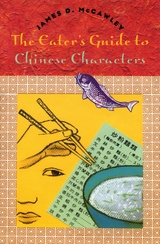 The Eater's Guide to Chinese Characters
James D. McCawley
University of Chicago Press, 1984 Lauded by Calvin Trillin as a man who "does not have to make to with translations like 'Shredded Three Kinds' in Chinese restaurants," in The Eater's Guide to Chinese Characters, James D. McCawley offers everyone a guide to deciphering the mysteries of Chinese menus and the opportunity to enjoy new eating experiences. An accessible primer as well as a handy reference, this book shows how Chinese characters are written and referred to, both in script and in type. McCawley provides a guide to pronunciation and includes helpful exercises so users can practice ordering. His novel system of arranging the extensive glossary—which ranges from basics such as "rice" and "fish" to exotica like "Buddha Jumps Wall"—enables even the beginner to find characters quickly and surely. He also includes the nonstandard forms of characters that often turn up on menus.
With this guide in hand, English speakers hold the key to a world of tantalizing—and otherwise unavailable—Chinese dishes.
 Eating and Being: A History of Ideas about Our Food and Ourselves
Steven Shapin
University of Chicago Press, 2024 What we eat, who we are, and the relationship between the two.
Eating and Being is a history of Western thinking about food, eating, knowledge, and ourselves. In modern thought, eating is about what is good for you, not about what is good. Eating is about health, not about virtue. Yet this has not always been the case. For a great span of the past—from antiquity through about the middle of the eighteenth century—one of the most pervasive branches of medicine was known as dietetics, prescribing not only what people should eat but also how they should order many aspects of their lives, including sleep, exercise, and emotional management. Dietetics did not distinguish between the medical and the moral, nor did it acknowledge the difference between what was good for you and what was good. Dietetics counseled moderation in all things, where moderation was counted as a virtue as well as the way to health. But during the nineteenth century, nutrition science began to replace the language of traditional dietetics with the vocabulary of proteins, fats, carbohydrates, and calories, and the medical and the moral went their separate ways. Steven Shapin shows how much depended upon that shift, and he also explores the extent to which the sensibilities of dietetics have been lost.
Throughout this rich history, he evokes what it felt like to eat during another historical period and invites us to reflect on what it means to feel about food as we now do. Shapin shows how the change from dietetics to nutrition science fundamentally altered how we think about our food and its powers, our bodies, and our minds.
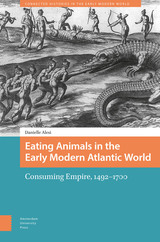 Eating Animals in the Early Modern Atlantic World: Consuming Empire, 1492-1700
Danielle Alesi
Amsterdam University Press, 2025 This book examines how the perceived edibility of animals evolved during the colonization of the Americas. Early European colonizers ate a variety of animals in the Americas, motivated by factors like curiosity, starvation, and diplomacy. As settlements increased and became more sustainable, constructs of edibility shifted and the colonial food system evolved accordingly. By exploring the changes in animal edibility identifiable in early modern Spanish, French, and English sources in the regions of Mesoamerica, Greater Amazonia, and the east coast of North America, this book shows that animals, foodways, and settler colonialism are inextricably linked and that the colonization of the Americas was not only the beginning of new empires, but also of a long-lasting colonial food culture that drives both food systems and human-animal relationships to the present day.
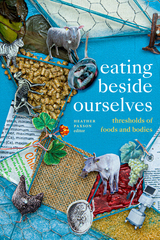 Eating beside Ourselves: Thresholds of Foods and Bodies
Heather Paxson, editor
Duke University Press, 2023 Eating beside Ourselves examines eating as a site of transfer and transformation across bodies and selves. The contributors show that by turning organic substance into food, acts of eating create interconnected food webs organized by relative conditions of edibility through which eaters may in turn become eaten. In case studies ranging from nineteenth- and twentieth-century industrial animal husbandry in the United States, biodynamic winemaking in Aotearoa New Zealand, and reindeer herding in Arctic Norway to the creation of taste sensation in pet food and the entanglement of sugar and diabetes in the Caribbean, the contributors explore how food and eating create thresholds for human and nonhuman relations. These thresholds mediate different conditions and states of being: between living and dying, between the edible and the inedible, and the relationship between living organisms and their surrounding environment. In this way, acts of eating and the process of metabolism partake in the making and unmaking of multispecies ontologies, taxonomies, and ecologies.
Contributors. Alex Blanchette, Deborah Heath, Hannah Landecker, Marianne Elisabeth Lien, Amy Moran-Thomas, Heather Paxson, Harris Solomon, Emily Yates-Doerr, Wim Van Daele
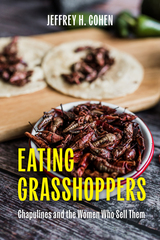 Eating Grasshoppers: Chapulines and the Women Who Sell Them
Jeffrey H. Cohen
University of Texas Press, 2025 An approachable ethnography of how grasshoppers are harvested, sold, and consumed in Oaxaca. Chapulines (toasted grasshoppers) are not a delicacy in Oaxaca. They are just food—good food—and a protein-rich seasonal snack that is the product of a long-standing industry based overwhelmingly on the labor of women. Jeffrey Cohen has interviewed dozens of these chapulineras, who harvest insects from corn and alfalfa fields, prepare them, and sell them in urban and rural marketplaces. An accessible ethnography, Eating Grasshoppers tells their story alongside the broader history of chapulines. For tourists, chapulines are an experience—a gateway to the “real” Oaxaca. For locals, they are ordinary fare, but also a reminder of Indigenous stability and rural survival. In a sense, eating chapulines is a declaration of independence from a government that has condemned eating insects as backward. Yet, while chapulines are a generations-old favorite, eating them is not an act of preservation. Cohen shows that the business of this traditional food is thoroughly modern and ever evolving, with entrepreneurial chapulineras responding nimbly to complex and dynamic markets. From alfalfa fields to online markets, Eating Grasshoppers takes readers inside one of the world’s most fascinating food cultures.
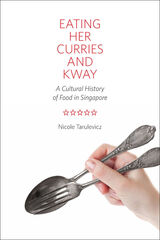 Eating Her Curries and Kway: A Cultural History of Food in Singapore
Nicole Tarulevicz
University of Illinois Press, 2013 Discovering Singaporean identity through cooking and cuisine While eating is a universal experience, for Singaporeans it carries strong national connotations. The popular Singaporean-English phrase "Die die must try" is not so much hyperbole as it is a reflection of the lengths that Singaporeans will go to find great dishes. In Eating Her Curries and Kway: A Cultural History of Food in Singapore, Nicole Tarulevicz argues that in a society that has undergone substantial change in a relatively short amount of time, food serves Singaporeans as a poignant connection to the past. Eating has provided a unifying practice for a diverse society, a metaphor for multiracialism and recognizable national symbols for a fledgling state. Covering the period from British settlement in 1819 to the present and focusing on the post–1965 postcolonial era, Tarulevicz tells the story of Singapore through the production and consumption of food. Analyzing a variety of sources that range from cookbooks to architectural and city plans, Tarulevicz offer a thematic history of this unusual country, which was colonized by the British and operated as a port within Malaya. Connecting food culture to the larger history of Singapore, she discusses various topics including domesticity and home economics, housing and architecture, advertising, and the regulation of food-related manners and public behavior such as hawking, littering, and chewing gum. Moving away from the predominantly political and economic focus of other histories of Singapore, Eating Her Curries and Kway provides an important alternative reading of Singaporean society.
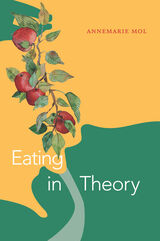 Eating in Theory
Annemarie Mol
Duke University Press, 2021 As we taste, chew, swallow, digest, and excrete, our foods transform us, while our eating, in its turn, affects the wider earthly environment. In Eating in Theory Annemarie Mol takes inspiration from these transformative entanglements to rethink what it is to be human. Drawing on fieldwork at food conferences, research labs, health care facilities, restaurants, and her own kitchen table, Mol reassesses the work of authors such as Hannah Arendt, Maurice Merleau-Ponty, Hans Jonas, and Emmanuel Levinas. They celebrated the allegedly unique capability of humans to rise above their immediate bodily needs. Mol, by contrast, appreciates that as humans we share our fleshy substance with other living beings, whom we cultivate, cut into pieces, transport, prepare, and incorporate—and to whom we leave our excesses. This has far-reaching philosophical consequences. Taking human eating seriously suggests a reappraisal of being as transformative, knowing as entangling, doing as dispersed, and relating as a matter of inescapable dependence.
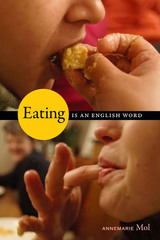 Eating Is an English Word
Annemarie Mol
Duke University Press, 2024 Eating is generally understood as a human need that people satisfy in diverse ways. Eating, however, is also an English word. Other languages, using other words, order reality differently: they may fuse eating with breathing, or distinguish chupar from comer. Anthropologists flag such differences by leaving a few of their words untranslated, but what language do we think in? This isn’t necessarily English. We may be linguistically closer to those whose practices we study: them. Against this background, Eating Is an English Word argues that social scientists should let go of the dream of universal concepts. Our analytical terms had better vary. Annemarie Mol and her coauthors exemplify this in a series of material semiotic inquiries into eating practices. They employ terms like lekker, tasting with fingers, chupar, schmecka, gustar, and settling on an okay meal to explore appreciative modes of valuing. Welcome, then, to spirited stories about satisfied stomachs, love for a lamb, juicy fruit treats, and companionable lunches and dinners.
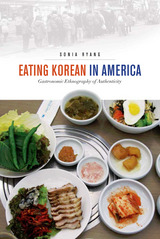 Eating Korean in America: Gastronomic Ethnography of Authenticity
Sonia Ryang
University of Hawaii Press, 2015 Can food be both national and global at the same time? What happens when a food with a national identity travels beyond the boundaries of a nation? What makes a food authentically national and yet American or broader global? With these questions in mind, Sonia Ryang explores the world of Korean food in four American locations, Iowa City, Baltimore, Los Angeles, and Hawai‘i (Kona and Honolulu). Ryang visits restaurants and grocery stores in each location and observes Korean food as it is prepared and served to customers. She analyzes the history and evolution of each dish, how it arrived and what it became, but above all, she tastes and experiences her food—four items to be specific—naengmyeon cold noodle soup; jeon pancakes; galbi barbecued beef; and bibimbap, rice with mixed vegetable. In her ethnographic journey, Ryang discovers how the chewy noodles from Pyongyang continue to retain their texture and yet are served differently in different locales. Jeon pancakes become completely decontextualized in the United States and metamorphosed into a portable and packable carry-out food. American consumers are unaware of the pancake’s sacred origin. In Hawai‘i, Ryang finds that it is the Vietnamese restaurant that serves unexpectedly delicious galbi barbecued meat. Intertwined in the complex colonial and postcolonial contexts, Korean galbi and Japanese yakiniku can be found side by side on the streets of Honolulu frequented by both the locals and tourists.
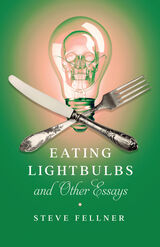 Eating Lightbulbs and Other Essays
Steve Fellner
Ohio State University Press, 2021 In Eating Lightbulbs and Other Essays, Steve Fellner traces the seriocomic absurdities of his own mind and its obsessions with family, mental illness, film, poetry, and gay sex. His search for love finds its outlets and objects wherever it can: in an imaginary 1970s Cineplex movie theatre, at a baby shower, or in a co-ed sexual abuse support group; via a letter penned to the ghost of an environmental activist who killed himself; or in the form of the AIDS quilt, lava lamps, amoebas, and a famous queer poet who didn’t know he existed. As he charts the inherently flawed ways he—and we—live and love, Fellner is always ready to subvert victim narratives even if he has to commit a few (or more than a few) acts of betrayal along the way. Unflinching and sidelong, laugh-out-loud funny, and as sharp and unpredictable as shards of fine glass, these essays look straight at the moments in life most of us would rather forget.
Eating of the Gods
Jan Kott
Northwestern University Press, 1973 In The Eating of the Gods the distinguished Polish critic Jan Kott reexamines Greek tragedy from the modern perspective. As in his earlier acclaimed Shakespeare Our Contemporary, Kott provides startling insights and intuitive leaps which link our world to that of the ancient Greeks. The title refers to the Bacchae of Euripides, that tragedy of lust, revenge, murder, and "the joy of eating raw flesh" which Kott finds paradigmatic in its violence and bloodshed.
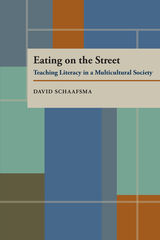 Eating On The Street: Teaching Literacy in a Multicultural Society
David Schaafsma
University of Pittsburgh Press, 1994
During a field trip in Detroit on a summer day in 1989, a group of African American fifth-, sixth-, and seventh-graders talked, laughed, and ate snacks as they walked. Later, in the teacher’s lounge, Jeanetta, an African American teacher chided the teachers, black and white, for not correcting poor black students for “eating on the street,” something she saw as stereotypical behavior that stigmatized students.
These thirty children from Detroit’s Cass Corridor neighborhood were enrolled in the Dewey Center Community Writing Project. Taught by seven teachers from the University of Michigan and the Detroit public schools, the program guided students to explore, to interpret, and to write about their community.
According to David Schaafsma, one of the teachers, the “eating on the street” controversy is emblematic of how cultural values and cultural differences affect education in American schools today. From this incident Schaafsma has written a powerful and compelling book about the struggle of teaching literacy in a racially divided society and the importance of story and storytelling in the educational process.
At the core of this book is the idea of storytelling as an interactive experience for both the teller and listener. Schaafsma begins by telling his own version of the “eating on the street” conflict. He describes the history of the writing program and offers rich samples of the students’ writing about their lives in a troubled neighborhood. After the summer program, Schaafsma interviewed all the teachers about their own version of events, their personal histories, and their work as educators. Eating on the Street presents all of these layered stories - by Schaafsma, his collegues, and the students - to illustrate how talking across multiple perspectives can enrich the learning process and the community-building process outside the classroom as well.
These accounts have strong implications for multicultural education today. They will interest teachers, educational experts, administrators, and researchers. Uniting theory and practice, Eating on the Street is on the cutting edge of pioneering work in educational research.
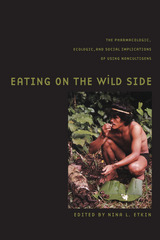 Eating on the Wild Side: The Pharmacologic, Ecologic and Social Implications of Using Noncultigens
Edited by Nina L. Etkin
University of Arizona Press, 2000 People have long used wild plants as food and medicine, and for a myriad of other important cultural applications. While these plants and the foraging activities associated with them have been dismissed by some observers as secondary or supplementary—or even backward—their contributions to human survival and well-being are more significant than is often realized. Eating on the Wild Side spans the history of human-plant interactions to examine how wild plants are used to meet medicinal, nutritional, and other human needs.
Drawing on nonhuman primate studies, evidence from prehistoric human populations, and field research among contemporary peoples practicing a range of subsistence strategies, the book focuses on the processes and human ecological implications of gathering, semidomestication, and cultivation of plants that are unfamiliar to most of us. Contributions by distinguished cultural and biological anthropologists, paleobotanists, primatologists, and ethnobiologists explore a number of issues such as the consumption of unpalatable and famine foods, the comparative assessment of aboriginal diets with those of colonists and later arrivals, and the apparent self-treatment by sick chimpanzees with leaves shown to be pharmacologically active.
Collectively, these articles offer a theoretical framework emphasizing the cultural evolutionary processes that transform plants from wild to domesticated—with many steps in between—while placing wild plant use within current discussions surrounding biodiversity and its conservation. Eating on the Wild Side makes an important contribution to our understanding of the links between biology and culture, describing the interface between diet, medicine, and natural products. By showing how various societies have successfully utilized wild plants, it underscores the growing concern for preserving genetic diversity as it reveals a fascinating chapter in the human ecology.
CONTENTS
1. The Cull of the Wild, Nina L. Etkin
2. Agriculture and the Acquisition of Medicinal Plant Knowledge, Michael H. Logan & Anna R. Dixon
3. Ambivalence to the Palatability Factors in Wild Food Plants, Timothy Johns
4. Wild Plants as Cultural Adaptations to Food Stress, Rebecca Huss-Ashmore & Susan L. Johnston
Physiologic Implications of Wild Plant Consumption
5. Pharmacologic Implications of "Wild" Plants in Hausa Diet, Nina L. Etkin & Paul J. Ross
6. Wild Plants as Food and Medicine in Polynesia, Paul Alan Cox
7. Characteristics of "Wild" Plant Foods Used by Indigenous Populations in Amazonia, Darna L. Dufour & Warren M. Wilson
8. The Health Significance of Wild Plants for the Siona and Secoya, William T. Vickers
9. North American Food and Drug Plants, Daniel M. Moerman
Wild Plants in Prehistory
10. Interpreting Wild Plant Foods in the Archaeological Record, Frances B. King
11. Coprolite Evidence for Prehistoric Foodstuffs, Condiments, and Medicines, Heather B. Trigg, Richard I. Ford, John G. Moore & Louise D. Jessop
Plants and Nonhuman Primates
12. Nonhuman Primate Self-Medication with Wild Plant Foods, Kenneth E. Glander
13. Wild Plant Use by Pregnant and Lactating Ringtail Lemurs, with Implications for Early Hominid Foraging, Michelle L. Sauther
Epilogue
14. In Search of Keystone Societies, Brien A. Meilleur
Eating Our Way through the Anthropocene
Jessica Fanzo
University of Utah Press, 2022 Originally delivered as the Stegner Lecture at the 2020 annual symposium of the Wallace Stegner Center for Land, Resources and the Environment, this book explores how, in the context of the broad global trends of population growth, climate crisis, and inequitable food availability, food systems need to be re-oriented to ensure they can produce enough food to nourish the world. Fanzo discusses moving toward on-farm sustainable food production practices, decreasing food loss and waste, addressing poverty by creating jobs and decent livelihoods, and providing safe, affordable, and healthy diets for everyone. At the same time, food systems must decrease the pressure on biodiversity loss, conserve land and water resources, minimize air and water pollution, and lower greenhouse gas emissions.
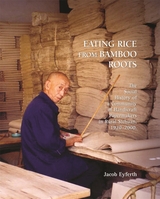 Eating Rice from Bamboo Roots: The Social History of a Community of Handicraft Papermakers in Rural Sichuan, 1920–2000
Jacob Eyferth
Harvard University Press, 2009 This book charts the vicissitudes of a rural community of papermakers in Sichuan. The process of transforming bamboo into paper involves production-related and social skills, as well as the everyday skills that allowed these papermakers to survive in an era of tumultuous change. The Chinese revolution—understood as a series of interconnected political, social, and technological transformations—was, Jacob Eyferth argues, as much about the redistribution of skill, knowledge, and technical control as it was about the redistribution of land and political power.
The larger context for this study is the “rural–urban divide”: the institutional, social, and economic cleavages that separate rural people from urbanites. This book traces the changes in the distribution of knowledge that led to a massive transfer of technical control from villages to cities, from primary producers to managerial elites, and from women to men. It asks how a vision of rural people as unskilled has affected their place in the body politic and contributed to their disenfranchisement. By viewing skill as a contested resource, subject to distribution struggles, it addresses the issue of how revolution, state-making, and marketization have changed rural China.
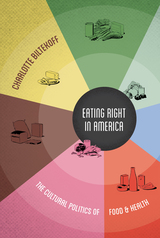 Eating Right in America: The Cultural Politics of Food and Health
Charlotte Biltekoff
Duke University Press, 2013 Eating Right in America is a powerful critique of dietary reform in the United States from the late nineteenth-century emergence of nutritional science through the contemporary alternative food movement and campaign against obesity. Charlotte Biltekoff analyzes the discourses of dietary reform, including the writings of reformers, as well as the materials they created to bring their messages to the public. She shows that while the primary aim may be to improve health, the process of teaching people to "eat right" in the U.S. inevitably involves shaping certain kinds of subjects and citizens, and shoring up the identity and social boundaries of the ever-threatened American middle class. Without discounting the pleasures of food or the value of wellness, Biltekoff advocates a critical reappraisal of our obsession with diet as a proxy for health. Based on her understanding of the history of dietary reform, she argues that talk about "eating right" in America too often obscures structural and environmental stresses and constraints, while naturalizing the dubious redefinition of health as an individual responsibility and imperative.
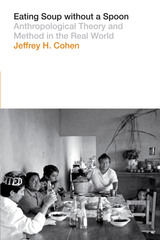 Eating Soup without a Spoon: Anthropological Theory and Method in the Real World
By Jeffrey H. Cohen
University of Texas Press, 2015 Significant scholarship exists on anthropological fieldwork and methodologies. Some anthropologists have also published memoirs of their research experiences. Renowned anthropologist Jeffrey Cohen’s Eating Soup without a Spoon is a first-of-its-kind hybrid of the two, expertly melding story with methodology to create a compelling narrative of fieldwork that is deeply grounded in anthropological theory. Cohen’s first foray into fieldwork was in 1992, when he lived in Santa Anna del Valle in rural Oaxaca, Mexico. While recounting his experiences studying how rural folks adapted to far-reaching economic changes, Cohen is candid about the mistakes he made and the struggles in the village. From the pressures of gaining the trust of a population to the fear of making errors in data collection, Cohen explores the intellectual processes behind ethnographic research. He offers tips for collecting data, avoiding pitfalls, and embracing the chaos and shocks that come with working in an unfamiliar environment. Cohen’s own photographs enrich his vivid portrayals of daily life. In this groundbreaking work, Cohen discusses the adventure, wonder, community, and friendships he encountered during his first year of work, but, first and foremost, he writes in service to the field as a place to do research: to test ideas, develop theories, and model how humans cope and react to the world.
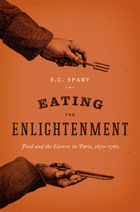 Eating the Enlightenment: Food and the Sciences in Paris, 1670-1760
E. C. Spary
University of Chicago Press, 2012 Eating the Enlightenment offers a new perspective on the history of food, looking at writings about cuisine, diet, and food chemistry as a key to larger debates over the state of the nation in Old Regime France. Embracing a wide range of authors and scientific or medical practitioners—from physicians and poets to philosophes and playwrights—E. C. Spary demonstrates how public discussions of eating and drinking were used to articulate concerns about the state of civilization versus that of nature, about the effects of consumption upon the identities of individuals and nations, and about the proper form and practice of scholarship. En route, Spary devotes extensive attention to the manufacture, trade, and eating of foods, focusing upon coffee and liqueurs in particular, and also considers controversies over specific issues such as the chemistry of digestion and the nature of alcohol. Familiar figures such as Fontenelle, Diderot, and Rousseau appear alongside little-known individuals from the margins of the world of letters: the draughts-playing café owner Charles Manoury, the “Turkish envoy” Soliman Aga, and the natural philosopher Jacques Gautier d’Agoty. Equally entertaining and enlightening, Eating the Enlightenment will be an original contribution to discussions of the dissemination of knowledge and the nature of scientific authority.
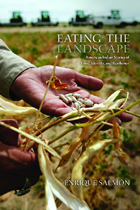 Eating the Landscape: American Indian Stories of Food, Identity, and Resilience
Enrique Salmón
University of Arizona Press, 2012 "Eating is not only a political act, it is also a cultural act that reaffirms one’s identity and worldview," Enrique Salmón writes in Eating the Landscape. Traversing a range of cultures, including the Tohono O’odham of the Sonoran Desert and the Rarámuri of the Sierra Tarahumara, the book is an illuminating journey through the southwest United States and northern Mexico. Salmón weaves his historical and cultural knowledge as a renowned indigenous ethnobotanist with stories American Indian farmers have shared with him to illustrate how traditional indigenous foodways—from the cultivation of crops to the preparation of meals—are rooted in a time-honored understanding of environmental stewardship. In this fascinating personal narrative, Salmón focuses on an array of indigenous farmers who uphold traditional agricultural practices in the face of modern changes to food systems such as extensive industrialization and the genetic modification of food crops. Despite the vast cultural and geographic diversity of the region he explores, Salmón reveals common themes: the importance of participation in a reciprocal relationship with the land, the connection between each group’s cultural identity and their ecosystems, and the indispensable correlation of land consciousness and food consciousness. Salmón shows that these collective philosophies provide the foundation for indigenous resilience as the farmers contend with global climate change and other disruptions to long-established foodways. This resilience, along with the rich stores of traditional ecological knowledge maintained by indigenous agriculturalists, Salmón explains, may be the key to sustaining food sources for humans in years to come. As many of us begin to question the origins and collateral costs of the food we consume, Salmón’s call for a return to more traditional food practices in this wide-ranging and insightful book is especially timely. Eating the Landscape is an essential resource for ethnobotanists, food sovereignty proponents, and advocates of the local food and slow food movements.
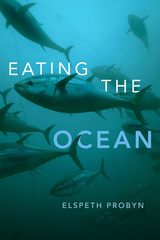 Eating the Ocean
Elspeth Probyn
Duke University Press, 2016 In Eating the Ocean Elspeth Probyn investigates the profound importance of the ocean and the future of fish and human entanglement. On her ethnographic journey around the world's oceans and fisheries, she finds that the ocean is being simplified in a food politics that is overwhelmingly land based and preoccupied with buzzwords like "local" and "sustainable." Developing a conceptual tack that combines critical analysis and embodied ethnography, she dives into the lucrative and endangered bluefin tuna market, the gendered politics of "sustainability," the ghoulish business of producing fish meal and fish oil for animals and humans, and the long history of encounters between humans and oysters. Seeing the ocean as the site of the entanglement of multiple species—which are all implicated in the interactions of technology, culture, politics, and the market—enables us to think about ways to develop a reflexive ethics of taste and place based in the realization that we cannot escape the food politics of the human-fish relationship.
Eating to Learn, Learning to Eat: The Origins of School Lunch in the United States
A. R. Ruis
Rutgers University Press, 2017 In Eating to Learn, Learning to Eat, historian A. R. Ruis explores the origins of American school meal initiatives to explain why it was (and, to some extent, has continued to be) so difficult to establish meal programs that satisfy the often competing interests of children, parents, schools, health authorities, politicians, and the food industry. Through careful studies of several key contexts and detailed analysis of the policies and politics that governed the creation of school meal programs, Ruis demonstrates how the early history of school meal program development helps us understand contemporary debates over changes to school lunch policies.
Eating Together: Food, Friendship and Inequality
Alice P. Julier
University of Illinois Press, 2013 An insightful map of the landscape of social meals, Eating Together: Food, Friendship, and Inequality argues that the ways in which Americans eat together play a central role in social life in the United States. Delving into a wide range of research, Alice P. Julier analyzes etiquette and entertaining books from the past century and conducts interviews and observations of dozens of hosts and guests at dinner parties, potlucks, and buffets. She finds that when people invite friends, neighbors, or family members to share meals within their households, social inequalities involving race, economics, and gender reveal themselves in interesting ways: relationships are defined, boundaries of intimacy or distance are set, and people find themselves either excluded or included.
 E.B. White: The Emergence of an Essayist
Robert L., Jr. Root
University of Iowa Press, 1999 In E. B. White: The Emergence of an Essayist, Robert Root traces the literary career of the best-known and most widely admired American essayist of the twentieth century. Root explores the milieu in which White began writing the "Notes and Comments" section of the New Yorker and puts in perspective the influence of popular "colyumists" like Don Marquis and Christopher Morley on the tone and form of White's work as a "paragrapher." He examines White's persistent disaffection with the demands and limitations inherent in his "Comment" pieces for the New Yorker and his experiences as a columnist for Harper's Magazine, where his "One Man's Meat" feature produced his most enduring essay, "Once More to the Lake," and took the segmented column form to new levels of accomplishment. Drawing on White's manuscripts, Root's literary analysis of early drafts demonstrates how unique White's essays were. E. B. White greatly expanded the limits of literary nonfiction and in the process introduced elements and methods that helped produce the contemporary segmented or disjunctive essay. From Root's research we receive new insights into the process by which White created his essays and how he was influenced—and often constrained—by particular literary forms and by the limitations of the circumstances in which he wrote them. White was famous for his habit of "writing by ear," and he believed in "writing a thing first and thinking about it afterward," work habits that led to some of the most memorable American literary essays of the twentieth century. E. B. White: The Emergence of an Essayist is the most detailed study to date of White as an essayist and a significant contribution to the literature examining writers at work.
 The Ebb of the Pink Tide: The Decline of the Left in Latin America
Mike Gonzalez
Pluto Press, 2018 Following events such as the Cochabamba Water War in Bolivia and the election of Hugo Chavez to the presidency in Venezuela, Latin American politics over the past two decades have been radicalized, their governments populated with former activists and trade union leaders. Yet, in the past few years, Latin America’s left have suffered many setbacks and reactionary challenges, leading many to wonder whether the “Pink Tide” is now on the wane.
In this book, renowned Latin Americanist Mike Gonzalez explores the rocky course of the left in Latin American politics. Although the left-wing developments of the past twenty years have been widely celebrated by activists, Gonzalez cautions us to consider the problems and conflicts that have arisen during their tenure as well. Through critical examination of the failings of Argentina, Bolivia, Brazil, Chile, Ecuador, and Venezuela, Gonzalez is able to identify both weaknesses and strengths, and to suggest possible future pathways for the renewal of the left in nations across Latin America.
Providing a critical but sympathetic analysis of the records of the left governments across the continent, Gonzalez offers a refreshing reflection on the prospects and future of Latin American politics.
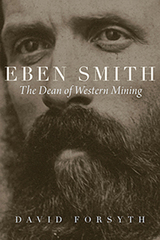 Eben Smith: The Dean of Western Mining
David Forsyth
University Press of Colorado, 2021 David Forsyth recounts the life of Eben Smith, an integral but little-known figure in Colorado mining history. Smith was one of the many fortune seekers who traveled to California during the gold rush and one of the few who found what he sought. He moved to Colorado in 1860 with business partner Jerome Chaffee and over the next forty-six years was involved in mining in nearly every major camp in the state, from Central City to Cripple Creek, and in the development of mines such as the Bobtail, Little Jonny, and Victor. He was eulogized by the Denver Post and Denver Times as the “dean of mining in Colorado.”
The mining teams Smith formed with Chaffee and with industrialist David Moffat were among the most successful and respected in Colorado, and many in the state held Smith in high regard. Yet despite the credit he received during his lifetime for establishing Colorado’s mining industry, Smith has not received much attention from historians, perhaps because he was content to leave public-facing duties to his partners while he concerned himself with managing mine operations.
From Smith’s early years and his labor in the mines to his rise to prominence as an investor and developer, Forsyth shows how Smith used the mining and milling knowledge he acquired in California to become a leader in technological innovation in Colorado’s mining industry.
Ebert's Bests
Roger Ebert
University of Chicago Press, 2013 Roger Ebert is a name synonymous with the movies. In Ebert’s Bests, he takes readers through the journey of how he became a film critic, from his days at a student-run cinema club to his rise as a television commentator in At the Movies and Siskel & Ebert. Recounting the influence of the French New Wave, his friendships with Werner Herzog and Martin Scorsese, as well as travels to Sweden and Rome to visit Ingrid Bergman and Federico Fellini, Ebert never loses sight of film as a key component of our cultural identity. In considering the ethics of film criticism—why we should take all film seriously, without prejudgment or condescension—he argues that film critics ought always to engage in open-minded dialogue with a movie. Extending this to his accompanying selection of “10 Bests,” he reminds us that hearts and minds—and even rankings—are bound to change.
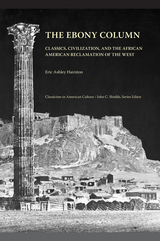 The Ebony Column: Classics, Civilization, and the African American Reclamation of the West
Eric Ashley Hairston
University of Tennessee Press, 2013 In The Ebony Column, Eric Ashley Hairston begins a new thread in the ongoing conversation about the influence of Greek and Roman antiquity on U.S. civilization and education. While that discussion has yielded many exceptional insights into antiquity and the American experience, it has so regularly elided the African American component that all classical influence on black writing and thought seems to vanish.
That omission, Hairston contends, is disturbing not least because of its longevity— from an early period of overt stereotyping and institutionalized racism right up to the contemporary and, one would hope, more cosmopolitan and enlightened era. Challenging and correcting that persistent shortsightedness, Hairston examines several prominent black writers’ and scholars’ deep investment in the classics as individuals, as well as the broader cultural investment in the classics and the values of the ancient world. Beginning with the late-eighteenth-century verse of Phillis Wheatley, whose classically inspired poems functioned as a kind of Trojan horse to defeat white oppression, Hairston goes on to consider the oratory of Frederick Douglass, whose rhetoric and ideas of virtue were much influenced by Cicero, and the writings of educator Anna Julia Cooper, whose classical training was a key source of her vibrant feminism. Finally, he offers a fresh examination of W. E. B. DuBois’s seminal The Souls of Black Folk (1903) and its debt to antiquity, which volumes of commentary have largely overlooked.
The first book to appear in a new series, Classicism in American Culture, The Ebony Column passionately demonstrates how the myths, cultures, and ideals of antiquity helped African Americans reconceptualize their role in a Euro-American world determined to make them mere economic commodities and emblems of moral and intellectual decay. To figures such as Wheatley, Douglass, Cooper, and DuBois, classical literature offered striking moral, intellectual, and philosophical alternatives to a viciously exclusionary vision of humanity, Africanity, the life of the citizen, and the life of the mind.
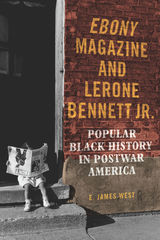 Ebony Magazine and Lerone Bennett Jr.: Popular Black History in Postwar America
E. James West
University of Illinois Press, 2020 From its launch in 1945, Ebony magazine was politically and socially influential. However, the magazine also played an important role in educating millions of African Americans about their past. Guided by the pen of Lerone Bennett Jr., the magazine’s senior editor and in-house historian, Ebony became a key voice in the popular black history revival that flourished after World War II. Its content helped push representations of the African American past from the margins to the center of the nation’s cultural and political imagination. E. James West's fresh and fascinating exploration of Ebony’s political, social, and historical content illuminates the intellectual role of the iconic magazine and its contribution to African American scholarship. He also uncovers a paradox. Though Ebony provided Bennett with space to promote a militant reading of black history and protest, the magazine’s status as a consumer publication helped to mediate its representation of African American identity in both past and present. Mixing biography, cultural history, and popular memory, West restores Ebony and Bennett to their rightful place in African American intellectual, commercial, and political history.
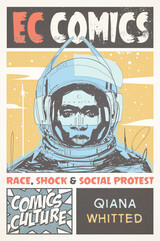 EC Comics: Race, Shock, and Social Protest
Qiana Whitted
Rutgers University Press, 2019 2020 Eisner Award for Best Academic/Scholarly Work
Entertaining Comics Group (EC Comics) is perhaps best-known today for lurid horror comics like Tales from the Crypt and for a publication that long outlived the company’s other titles, Mad magazine. But during its heyday in the early 1950s, EC was also an early innovator in another genre of comics: the so-called “preachies,” socially conscious stories that boldly challenged the conservatism and conformity of Eisenhower-era America.
EC Comics examines a selection of these works—sensationally-titled comics such as “Hate!,” “The Guilty!,” and “Judgment Day!”—and explores how they grappled with the civil rights struggle, antisemitism, and other forms of prejudice in America. Putting these socially aware stories into conversation with EC’s better-known horror stories, Qiana Whitted discovers surprising similarities between their narrative, aesthetic, and marketing strategies. She also recounts the controversy that these stories inspired and the central role they played in congressional hearings about offensive content in comics.
The first serious critical study of EC’s social issues comics, this book will give readers a greater appreciation of their legacy. They not only served to inspire future comics creators, but also introduced a generation of young readers to provocative ideas and progressive ideals that pointed the way to a better America.
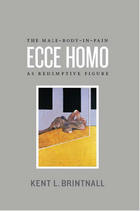 Ecce Homo: The Male-Body-in-Pain as Redemptive Figure
Kent L. Brintnall
University of Chicago Press, 2011 Images of suffering male bodies permeate Western culture, from Francis Bacon’s paintings and Robert Mapplethorpe’s photographs to the battered heroes of action movies. Drawing on perspectives from a range of disciplines—including religious studies, gender and queer studies, psychoanalysis, art history, and film theory—Ecce Homo explores the complex, ambiguous meanings of the enduring figure of the male-body-in-pain. Acknowledging that representations of men confronting violence and pain can reinforce ideas of manly tenacity, Kent L. Brintnall also argues that they reveal the vulnerability of men’s bodies and open them up to eroticization. Locating the roots of our cultural fascination with male pain in the crucifixion, he analyzes the way narratives of Christ’s death and resurrection both support and subvert cultural fantasies of masculine power and privilege. Through stimulating readings of works by Georges Bataille, Kaja Silverman, and more, Brintnall delineates the redemptive power of representations of male suffering and violence.
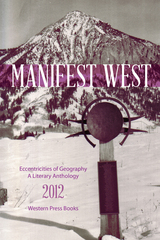 Eccentricities of Geography
Teresa Milbrodt
University Press of Colorado, 2012 Eccentricities of Geography is a collection of poems, stories, and essays with a quirky charm and regional Western flavor. The works in this anthology range from "Wild West" parodies to essays on the perils of hiking in California, and from poems that twist trickster fables to ones that explore the dangers of jogging in mountain lion country. These writers reveal that the land is a character: sometimes a mother, sometimes a joker, never an enemy, though one must take care. The space can be refreshing or oppressive, as the paradox of openness is that it tends to control and confine as much as free us. The weather plans your day. Snowstorms don't negotiate. The West makes people acutely aware of the absurdity of their smallness, and this feeling is the source of much of the humor in the anthology. The sensation of being tiny, that crazed adrenalin rush and the feeling of your heart beating in your throat, has to make you laugh out loud like a roller coaster. The twenty authors in this collection will take you for an interesting ride.
Contributors to the anthology include: Kirstin Abraham, Genevieve Betts, Shirley Brewer, David Coy, Elizabeth Creely, Mary Christine Delea, Jen Edwards, Thea Gavin, John Haggerty, Brad Johnson, Neal Lewing, Robert McBrearty, Margaret Ozemet, Francis Raven, Greg Robillard, Heather Sappenfield, Sam Smith, Laura Snyder, Caroline Sposto, and Scott Starbuck.
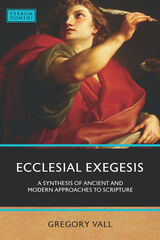 Ecclesial Exegesis: A Synthesis of Ancient and Modern Approaches to Scripture
Gregory Vall
Catholic University of America Press, 2022 There is broad support today for the idea that biblical scholarship ought to be informed by the faith of the Church and serve the life of the Church. In a word, it should be ecclesial. There is far less agreement, however, when one asks how this goal is to be achieved and what ecclesial exegesis ought to look like. In 1988, Joseph Ratzinger put forth his “Method C” proposal, calling for the development of a new exegetical and hermeneutical synthesis. This would be neither a retreat to the patristic-medieval approach (Method A) nor the continued hegemony of the historical-critical approach (Method B). The latter must be purified of its positivism through a transformational encounter with the former, so that the gifts of both might be released for the life of the Church. Such a synthesis, Ratzinger claimed, would require the philosophical, theological, exegetical, and hermeneutical work of “at least a whole generation” of scholars.
Gregory Vall has devoted over thirty years to the development of ecclesial exegesis, and the present volume represents the mature fruit of his labor. Over against those who treat Dei Verbum as Vatican II’s endorsement of the historical-critical method, he demonstrates that the dogmatic constitution actually points to something very much like Ratzinger’s Method C. Employing a dialogic movement between the inductive-exegetical and the deductive-dogmatic, Vall offers nine studies that bring to the surface issues such as the relationship between Old Testament and New Testament, literal sense and spiritual sense, and Scripture and Tradition. While Vall brings theological knowledge and hermeneutical skill to the quest for Method C, he also provides a great deal of valuable exegesis of both testaments. Ecclesial Exegesis is not simply another book of theory. It demonstrates how Method C can be done.
An Ecclesiastical Barony of the Middle Ages: The Bishopric Of Bayeux, 1066-1204
Sarell Everett Gleason
Harvard University Press By concentrating on a small unit—the bishopric of Bayeux—this study brings into sharper focus some of the main features and developments of Norman institutions in the twelfth century. It illustrates specifically the dual status of the mediaeval bishop and the inevitability of a conflict between Church and State in the Middle Ages.
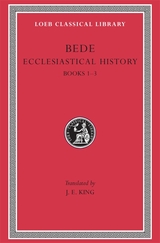 Ecclesiastical History, Volume I: Books 1–3
Bede
Harvard University Press Abbatial annals of medieval England.
Bede “the Venerable,” English theologian and historian, was born in AD 672 or 673 in the territory of the single monastery at Wearmouth and Jarrow. He was ordained deacon (691–2) and priest (702–3) of the monastery, where his whole life was spent in devotion, choral singing, study, teaching, discussion, and writing. Besides Latin he knew Greek and possibly Hebrew.
Bede’s theological works were chiefly commentaries, mostly allegorical in method, based with acknowledgment on Jerome, Augustine, Ambrose, Gregory, and others, but bearing his own personality. In another class were works on grammar and one on natural phenomena; special interest in the vexed question of Easter led him to write about the calendar and chronology. But his most admired production is his Ecclesiastical History of the English Nation. Here a clear and simple style united with descriptive powers to produce an elegant work, and the facts diligently collected from good sources make it a valuable account. Historical also are his Lives of the Abbots of his monastery, the less successful accounts (in verse and prose) of Cuthbert, and the Letter (November 734) to Egbert his pupil, so important for our knowledge about the Church in Northumbria.
The Loeb Classical Library edition of Bede’s historical works is in two volumes.
Ecclesiastical History, Volume I: Books 1–5
Eusebius
Harvard University Press The first comprehensive history of early Christianity.
Eusebius of Caesarea (ca. AD 260–340), born in Palestine, was a student of the presbyter Pamphilus, whom he loyally supported during Diocletian’s persecution. He was himself imprisoned in Egypt, but became Bishop of Caesarea around 314. At the Council of Nicaea in 325 he sat by the emperor, led a party of moderates, and made the first draft of the famous creed.
Of Eusebius’ many learned publications we have the Martyrs of Palestine and the Life of Constantine; several apologetic and polemic works; parts of his commentaries on the Psalms and Isaiah; and the Chronographia, known chiefly in Armenian and Syriac versions of the original Greek. But Eusebius’ chief fame rests on the History of the Christian Church in ten books, published in 324–325, the most important ecclesiastical history of ancient times, a great treasury of knowledge about the early Church.
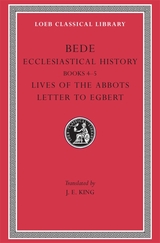 Ecclesiastical History, Volume II: Books 4–5. Lives of the Abbots. Letter to Egbert
Bede
Harvard University Press Abbatial annals of medieval England.
Bede “the Venerable,” English theologian and historian, was born in AD 672 or 673 in the territory of the single monastery at Wearmouth and Jarrow. He was ordained deacon (691–2) and priest (702–3) of the monastery, where his whole life was spent in devotion, choral singing, study, teaching, discussion, and writing. Besides Latin he knew Greek and possibly Hebrew.
Bede’s theological works were chiefly commentaries, mostly allegorical in method, based with acknowledgment on Jerome, Augustine, Ambrose, Gregory, and others, but bearing his own personality. In another class were works on grammar and one on natural phenomena; special interest in the vexed question of Easter led him to write about the calendar and chronology. But his most admired production is his Ecclesiastical History of the English Nation. Here a clear and simple style united with descriptive powers to produce an elegant work, and the facts diligently collected from good sources make it a valuable account. Historical also are his Lives of the Abbots of his monastery, the less successful accounts (in verse and prose) of Cuthbert, and the Letter (November 734) to Egbert his pupil, so important for our knowledge about the Church in Northumbria.
The Loeb Classical Library edition of Bede’s historical works is in two volumes.
Ecclesiastical History, Volume II: Books 6–10
Eusebius
Harvard University Press The first comprehensive history of early Christianity.
Eusebius of Caesarea (ca. AD 260–340), born in Palestine, was a student of the presbyter Pamphilus, whom he loyally supported during Diocletian’s persecution. He was himself imprisoned in Egypt, but became Bishop of Caesarea around 314. At the Council of Nicaea in 325 he sat by the emperor, led a party of moderates, and made the first draft of the famous creed.
Of Eusebius’ many learned publications we have the Martyrs of Palestine and the Life of Constantine; several apologetic and polemic works; parts of his commentaries on the Psalms and Isaiah; and the Chronographia, known chiefly in Armenian and Syriac versions of the original Greek. But Eusebius’ chief fame rests on the History of the Christian Church in ten books, published in 324–325, the most important ecclesiastical history of ancient times, a great treasury of knowledge about the early Church.
 Ecclesiastical Latin: A Primer on the Language of the Church
Charles G. Kim, Jr.
Catholic University of America Press, 2024 Ecclesiastical Latin: A Primer on the Language of the Church offers a thorough introduction to the Latin language in 32 chapters, which can be completed in one academic year. The text presents each section in plain language, fully explaining complicated grammar terms which may be unfamiliar to a contemporary audience. Every chapter includes copious examples and practice sentences of the grammar covered, as well as stories drawn from the Vulgate, or Church tradition. In addition to encountering the vocabulary and grammar in practice sentences, the text also offers prayers from the liturgy which illustrate the grammar, as well as sentences which come directly from the corpus of original Ecclesiastical Latin. By the end of the book, students will feel comfortable reading through the Vulgate or praying the liturgy in Latin with more understanding. The grammar structures for each chapter roughly follow the organization of grammar as it is presented in Hans Orberg's Lingua Latina. The student can thus practice more of the language in full immersion with confidence, while also learning the vocabulary and style of later Ecclesiastical Latin.
 Ecclesiastical Silver Plate in Sixth-Century Byzantium
Susan A. Boyd
Harvard University Press, 1992 The twenty papers included in this volume were presented at an international symposium held in Baltimore and Washington in May, 1986. Planned to coincide with the exhibition of the two largest treasures of Early Byzantine church silver to survive from antiquity, the Kaper Koraon Treasure (found in Syria) and the Sion Treasure (found in Turkey), the symposium sought to place these and other church treasures in their broader contexts examining them from the point of view of economy, history, society, and manufacture.
While a number of the papers focus on specific aspects of these two treasures—including six articles devoted to the Sion Treasure—others examine more general questions regarding silver mining, the manufacture of silver vessels, the state control of silver in Byzantium and the Sasanian Empire, the economic and cultural role of silver objects, and the financial power of the institutional church through its vast holdings of silver plate. The precedent offered by pagan cult treasures is also examined.
To ensure a broad interdisciplinary approach, the eighteen authors are authorities in the fields of government administration, economic history, cultural history, art history, archaeology, epigraphy, science and conservation.
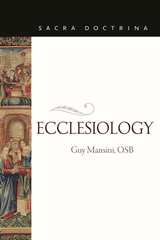 Ecclesiology
Guy Mansini, OSB
Catholic University of America Press, 2021 The first part of the book explains the antecedent probability both of revelation and of God’s institution of a church. It is ecclesiology in the mode of fundamental theology.
The second part rounds up what Scripture and Tradition teach about the Church under the heads of the People of God, the Temple of the Holy Spirit, the Bride of Christ, and the Body of Christ. The chapters present this thematic material under each head as a unified whole, across the Testaments, with each chapter keyed to one of the “marks” of the Church: the catholicity of the people of God, the apostolicity of the ministers of the messianic temple, the holiness of the Bride of Christ, and the unity of the Body of Christ. This already organizes things in a proto-systematic frame.
The third part of the book gives systematic exploration, in reverse order, to the unity of the Church, with attention to non-Catholic ecclesial communities and churches, to the holiness of the Church, objective and subjective, to the apostolicity of the Church and her mediation of revealed truth and grace, and to the catholicity of the Church, with attention to non-Christian religions.
The center of the book, on the definition of the Church as the sacrament of communion, renders recent French Dominican ecclesiology in a form more accessible to undergraduates and seminarians, rooting it in the New Testament teachings on communion and mysterion. The book concludes with a strenuous argument for the necessity of the Church and her mission of evangelization. Thus, the trajectory of the book is from the naturally knowable antecedent probability of the Church to its revealed necessity.
 Echo Chambers: Figuring Voice In Narrative
Patrick O'Donnell
University of Iowa Press, 1992 Echo Chambers provides an illuminating discussion of the representation of “voice” in novels by Dickens, Joyce, Faulkner, Lowry, and Gaddis. Focusing on the paradoxes of “voice” as an indication of how different authors understand the contradictions of “identity,” O'Donnell charts the recent history of subjectivity as reflected in the development of modern fiction. With strong theoretical underpinning—O'Donnell skillfully utilizes the theories formulated by Bakhtin, Derrida, Bersani, De Man, Deleuze, and Guattari, among others, and the semiotics of voice put forth by Julia Kristeva—Echo Chambers shows how identity is inherently contradictory, conflicted, and multiple. This insightful volume compellingly demonstrates that “voice” is a revealing (because contradictory and heterogeneous) site where language, the body, culture, and subjectivity meet. Echo Chambers makes an important contribution to the study of modern literature, the semiotics of identity, and cultural poetics as they are informed by the projections of voice in modern narrativ
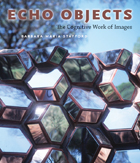 Echo Objects: The Cognitive Work of Images
Barbara Maria Stafford
University of Chicago Press, 2007 Barbara Maria Stafford is at the forefront of a growing movement that calls for the humanities to confront the brain’s material realities. In Echo Objects, she argues that humanists should seize upon the exciting neuroscientific discoveries that are illuminating the underpinnings of cultural objects. In turn, she contends, brain scientists could enrich their investigations of mental activity by incorporating phenomenological considerations—particularly the intricate ways that images focus intentional behavior and allow us to feel thought.
As a result, Echo Objects is a stunningly broad exploration of how complex images—or patterns that compress space and time—make visible the invisible ordering of human consciousness. Stafford demonstrates, for example, how the compound formats of emblems, symbols, collage, and electronic media reveal the brain’s grappling to construct mental objects that are redoubled by prior associations. In contrast, she shows that findings in evolutionary biology and the neurosciences are providing profound opportunities for understanding aesthetic conundrums such as the human urge to imitate and the role of narrative and nonnarrative representation.
Ultimately, she makes an impassioned plea for a common purpose—for the acknowledgement that, at the most basic level, these separate projects belong to a single investigation. “Heroic. . . . The larger message of Stafford’s intense, propulsive prose is unassailable. If we are to get much further in the great puzzle of ‘binding’—how the perception of an image, the will to act on intention, or the forging of consciousness is assembled from the tens of thousands of neurons firing at any one moment in time—then there needs to be action on all fronts.”—Science
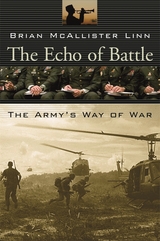 The Echo of Battle: The Army’s Way of War
Brian McAllister Linn
Harvard University Press, 2007 From Lexington and Gettysburg to Normandy and Iraq, the wars of the United States have defined the nation. But after the guns fall silent, the army searches the lessons of past conflicts in order to prepare for the next clash of arms. In the echo of battle, the army develops the strategies, weapons, doctrine, and commanders that it hopes will guarantee a future victory.
In the face of radically new ways of waging war, Brian Linn surveys the past assumptions--and errors--that underlie the army's many visions of warfare up to the present day. He explores the army's forgotten heritage of deterrence, its long experience with counter-guerrilla operations, and its successive efforts to transform itself. Distinguishing three martial traditions--each with its own concept of warfare, its own strategic views, and its own excuses for failure--he locates the visionaries who prepared the army for its battlefield triumphs and the reactionaries whose mistakes contributed to its defeats.
Discussing commanders as diverse as Dwight D. Eisenhower, George S. Patton, and Colin Powell, and technologies from coastal artillery to the Abrams tank, he shows how leadership and weaponry have continually altered the army's approach to conflict. And he demonstrates the army's habit of preparing for wars that seldom occur, while ignoring those it must actually fight. Based on exhaustive research and interviews, The Echo of Battle provides an unprecedented reinterpretation of how the U.S. Army has waged war in the past and how it is meeting the new challenges of tomorrow.
The Echo of Ice Letting Go
Julie LeMay
University of Alaska Press, 2017 Rooted in the harsh, yet beautiful landscape of Alaska, this collection of poems is at once comforting and disquieting, permeated with wisdom, darkness, and resilience. Taken together, the poems form a powerful narrative, as Julie Hungiville LeMay relates a personal story of the recurrence of cancer and interweaves it with an account of her son’s struggle with addiction. In a world of so much pain, her poems ask, how can we find meaning? The answer, often, is nature: among “spruce branches that whisper” and “the yellow joy / of warblers.” Half-found poems that contain lines from John Muir's essays are arranged throughout the book like touchstones, while other poems invoke the spirit of Wordsworth. LeMay’s voice is precise and clear, her lines musical and sonically rich, making this ambitious, wide-ranging book one that readers won’t soon forget.
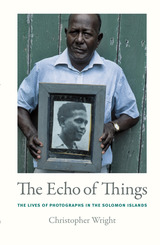 The Echo of Things: The Lives of Photographs in the Solomon Islands
Christopher Wright
Duke University Press, 2013 The Echo of Things is a compelling ethnographic study of what photography means to the people of Roviana Lagoon in the western Solomon Islands. Christopher Wright examines the contemporary uses of photography and expectations of the medium in Roviana, as well as people's reactions to photographs made by colonial powers in the late nineteenth and early twentieth centuries. For Roviana people, photographs are unique objects; they are not reproducible, as they are in Euro-American understandings of the medium. Their status as singular objects contributes to their ability to channel ancestral power, and that ability is a key to understanding the links between photography, memory, and history in Roviana. Filled with the voices of Roviana people, The Echo of Things is both a nuanced study of the lives of photographs in a particular cultural setting and a provocative inquiry into our own understandings of photography.
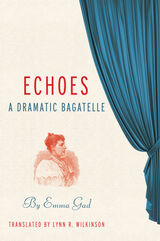 Echoes: A Dramatic Bagatelle
Emma Gad, Translated by Lynn R. Wilkinson
University of Wisconsin Press, 2021 Echoes: A Dramatic Bagatelle (Genklang. Dramatisk Bagatel) premiered at Folketeatret (the People’s Theater) in Copenhagen on September 15, 1888, and was the third play by the Danish writer and playwright Emma Gad (1852–1921) to be performed at theaters in Copenhagen.
Although it was labeled a “bagatelle,” Echoes, like most of Gad’s other plays, is quite funny. The play brings together three individuals in the out-of-the-way cottage of an old servant. Countess Clara takes refuge with Maren, her former nursemaid, during a sudden downpour and is soon joined by Niels, her former tutor, who claims to be passing by on his way to a church, where he hopes to find important historical documents. During Clara’s conversations with the two, it comes out that she is considering marriage to a count who lives nearby, even though she finds him and his way of life unattractive, and that she and Niels had been in love years before.
Gad’s graceful dialogue manages to touch on questions hotly debated in the last decades of the nineteenth century, such as the ability of individuals to break with the past or with outmoded or repressive conventions, while also making audiences laugh. Despite the play’s lighthearted wittiness, Echoes is an inventive example of turn-of-the-century avant-garde theater.
 Echoes and Evidences of the Book of Mormon
Donald W. Parry
Foundation for Ancient Research and Mormon Studies, 2002 The amazing achievements of the last hundred years in technology and science are paralleled by significant strides in Book of Mormon studies. Echoes and Evidences of the Book of Mormon takes inventory of some of the most fascinating ancient elements of the Book of Mormon. Professor Hugh Nibley once asked: "Does the Book of Mormon have authentic historical backgrounds? Is its local color correct?" As ha and others have shown, the Book of Mormon contains numerous "hits" or "bull's-eyes," significant parallels with the ancient world that were often unknowable in the world of Joseph Smith. The sheer number alone is impressive. In this volume, scholars trained in biblical studies, archaeology, classics, history, law, linguistics, anthropology, political science,philosophy, Near East studies, literature, and other relevant fields present some of their favorite evidences that support the Book of Mormon's claim to ancient origins. The cumulative effect is weighty. The book features an article by Elder Neal A. Maxwell, and a convenient method for locating specific hits. The contributors have successfully mined the Book of Mormon for * points clearly present in ancient sources * details that are not obvious or commonplace * Patterns that are complex or intricate * features that are unusual or distinctive * information that was little known in the 1820s * insights that are require training to detect even today. These uncovered echoes from the past are resounding evidences that the Book of Mormon is an ancient book.
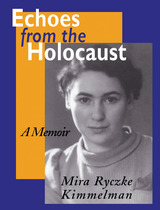 Echoes From The Holocaust: A Memoir
Mira Ryczke Kimmelman
University of Tennessee Press, 1996 "During the most difficult times of World War II," Mira Kimmelman writes, "I wondered whether the world really knew what was happening to us. I lived in total isolation, not knowing what was taking place outside the ghetto gates, outside the barbed wires of concentration camps. After the war, would anyone ever believe my experiences?"
Kimmelman had no way of preserving her experiences on paper while they happened, but she trained herself to remember. And now, as a survivor of the Holocaust, she has preserved her recollections for posterity in this powerful and moving book—one woman's personal perspective on a terrible moment in human history.
The daughter of a Jewish seed exporter, the author was born Mira Ryczke in 1923 in a suburb of the Baltic seaport of Danzig (now Gdansk, Poland). Her childhood was happy, and she learned to cherish her faith and heritage. Through the 1930s, Mira's family remained in the Danzig area despite a changing political climate that was compelling many friends and neighbors to leave. With the Polish capitulation to Germany in the autumn of 1939, however, Mira and her family were forced from their home. In calm, straightforward prose—which makes her story all the more harrowing—Kimmelman recalls the horrors that befell her and those she loved. Sent to Auschwitz in 1944, she escaped the gas chambers by being selected for slave labor. Finally, as the tide of war turned against Germany, Mira was among those transported to Bergen-Belsen, where tens of thousands were dying from starvation, disease, and exposure. In April 1945, British troops liberated the camp, and Mira was eventually reunited with her father. Most of the other members of her family had perished.
In the closing chapters, Kimmelman describes her marriage, her subsequent life in the United States, and her visits to Israel and to the places in Europe where the events of her youth transpired. Even when confronted with the worst in humankind, she observes, she never lost hope or succumbed to despair. She concludes with an eloquent reminder: "If future generations fail to protect the truth, it vanishes. . . . Only by remembering the bitter lesson of Hitler’s legacy can we hope it will never be repeated. Teach it, tell it, read it."
The Author: Mira Ryczke Kimmelman (1923–2019) was a resident of Oak Ridge, Tennessee, and lectured widely in schools about her experiences during the Holocaust. She is also the author of Life beyond the Holocaust: Memories and Realities
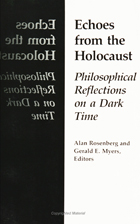 Echoes From The Holocaust: Philosophical Reflections on a Dark Time
edited by Alan Rosenberg and Gerald E. Myers
Temple University Press, 1990 The murder of six million Jewish men, women, and children during World War II was an act of such barbarity as to constitute one of the central events of our time; yet a list of the major concerns of professional philosophers since 1945 would exclude the Holocaust. This collection of twenty-three essays, most of which were written expressly for this volume, is the first book to focus comprehensively on the profound issues and philosophical significance of the Holocaust. The essays, written for general as well as professional readers, convey an extraordinary range of factual information and philosophical reflection in seeking to identify the haunting meanings of the Holocaust. Among the questions addressed are: How should philosophy approach the Holocaust? What part did the philosophical climate play in allowing Hitlerism its temporary triumph? What is the philosophical climate today and what are its probable cultural effects? Can philosophy help our culture to become a bulwark against future agents of evil? The multiple dimensions of the Holocaust—historical, sociological, psychological, religious, moral, and literary—are collected here for concentrated philosophical interpretations.
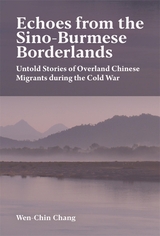 Echoes from the Sino-Burmese Borderlands: Untold Stories of Overland Chinese Migrants During the Cold War
Wen-Chin Chang
Harvard University Press Grounded in extensive fieldwork and archival research, Echoes from the Sino-Burmese Borderlands is an ethnography that explores the clandestine travel of primarily Yunnanese Chinese migrants via the Sino-Burmese borderlands during the Cold War. Wen-Chin Chang probes their political, economic, and sociocultural trajectories, including their engagement in Taiwan’s espionage in Burma, military operations of the Communist Party of Burma, mule transport for the Burmese authorities, underground cross-border trade, and pursuit of a Chinese education. Through the lens of existential anthropology, Chang illustrates how these migrants’ lived experiences intersected with the volatile situation in the frontier areas where many ethnic groups and political entities co-existed. Although subjected to state and non-state violence, these individuals demonstrated their resilience, political liminality, economic adroitness, and skillfulness in networking as they moved across borders in search of a better life. In contrast to conventional historical narratives often focused on global politics and ideological confrontations, Chang’s examination of these migrants’ overlooked stories offers a compelling and nuanced Cold War history of the Sino-Burmese borderlands, where exclusion pushed people to seek out change and adversity was met with creative adaptation.
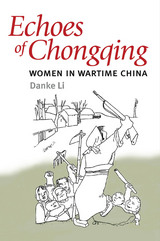 Echoes of Chongqing: Women in Wartime China
Danke Li
University of Illinois Press, 2010 This collection of annotated oral histories records the personal stories of twenty Chinese women who lived in the wartime capital of Chongqing during China's War of Resistance against Japan during World War II. By presenting women's remembrances of the war, this study examines the interplay between oral history and traditional historical narrative, public discourse, and private memories. The women interviewed came from differing social, economic, and educational backgrounds and experienced the war in a variety of ways, some of them active in the communist resistance and others trying to support families or pursue educations in the face of wartime upheaval. Their stories demonstrate that the War of Resistance had two faces: one presented by official propaganda and characterized by an upbeat unified front against Japan, the other a record of invisible private stories and a sobering national experience of death and suffering. The accounts of how women coped, worked, and lived during the war years in the Chongqing region recast historical understanding of the roles played by ordinary people in wartime and give women a public voice and face that, until now, have been missing from scholarship on the war.
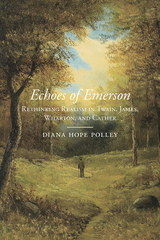 Echoes of Emerson: Rethinking Realism in Twain, James, Wharton, and Cather
Diana Hope Polley
University of Alabama Press, 2017 Winner of the 2018 Robert Penn Warren—Cleanth Brooks Award for Outstanding Literary Scholarship and Criticism” from the Center for Robert Penn Warren Studies at Western Kentucky University
Probes the ways in which two major periods in nineteenth-century American literature—Romanticism and Realism—have come to be understood and defined.
Echoes of Emerson: Rethinking Realism in Twain, James, Wharton, and Cather traces the complex and unexplored relationship between American realism and the philosophy of Ralph Waldo Emerson. Critics often read American realism as a clear disavowal of earlier American romantic philosophy and as a commitment to recognizing the stark realities of a new postbellum order. Diana Hope Polley’s study complicates these traditional assumptions by reading American realism as an ongoing dialogue with the ideas—often idealisms—of America’s greatest romantic philosopher, Ralph Waldo Emerson.
In this illuminating work, Polley offers detailed readings of Mark Twain’s Adventures of Huckleberry Finn, Henry James’s The Portrait of a Lady, Edith Wharton’s The House of Mirth, and Willa Cather’s My Ántonia—all through the lens of Emersonian philosophy and discourse. This unique contribution to nineteenth- and early twentieth-century literary studies shows how these texts revisit Emerson’s antebellum “republic of the spirit” philosophy, specifically the trope of the Emersonian hero/heroine navigating the harsh contingencies of the modern world.
Romanticism and realism are often seen as opposing binaries, with romanticism celebrating the individual, self-reliance, and nature and realism emphasizing the weight of socio-historical forces. Realism is often characterized as rejecting the transcendent principles of Emersonian thought. Rather than accept those distinct boundaries between romance and realism, Polley argues that American realists struggled between celebrating Emerson’s core philosophies of individual possibility and acknowledging the stark “realities” of American social and historical life. In short, this study recognizes within realism a divided loyalty between two historical trends and explores how these seemingly contradictory notions—Emerson’s romantic philosophy and later nineteenth-century visions of historical reality—exist, simultaneously, within the literature of the period.
 Echoes of Exile: A Family’s Odyssey through the Holocaust and Cold War
Daniela Spenser
University of Alabama Press, 2025 A sweeping exploration of survival, resilience, and the fate of one family amid Europe’s most turbulent century Echoes of Exile reveals the seismic disruptions of twentieth-century European history through the intimate lens of one family’s struggle to survive. Setting out to record the life of her mother, Ruth, Daniela Spenser unearthed personal facts and stories that additionally illuminate the shared traumas and experiences of millions of Czech, Polish, and German Jews who died in the Holocaust, as well as the stories of those who survived and lived under Communism and the Cold War. Her resulting work is a fascinating hybrid that combines family letters and interviews with deeply researched political history spanning from the collapse of the Austro-Hungarian Empire to the fall of the Berlin Wall. Spenser’s fascinating work reveals the difficult choices her mother and family faced, the tests to their loves and loyalties, and the lingering scars of exile. More than a family history, it weaves personal and historical narratives with mundane and momentous threads to create a fresh, distinctive fabric. Spenser recovers fragments of the past that contribute to a map of the present and possibilities for the future. An engrossing account of survival, resilience, and the enduring human spirit amid the maelstrom of Europe’s savage twentieth century, Echoes of Exile will interest readers who value firsthand accounts of significant events and who seek to understand the complexities of survival, identity, and political change through intimate, lived experiences.
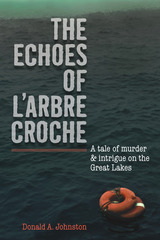 The Echoes of L'Arbre Croche
Donald A. Johnston
University of Michigan Press, 2009 The year is 1915, and Benjamin Corvet, founder of the ship-owning firm Corvet, Sherrill and Spearman, suddenly disappears, sparking events and questions that baffle even those who are close to him. Constance Sherrill, an attractive, sheltered young woman, feels strangely responsible for what may have happened to him---her father's best friend and coworker. Alan Conrad arrives in Chicago searching for his identity and an unknown benefactor and is swept into a maelstrom of mystery and intrigue that tests his intelligence and athleticism to the fullest. Henry Spearman, the firm's junior partner, is the most eligible bachelor along Chicago's Lake Shore Drive as a result of his catapult from ships' ranks to successful owner. When a ship sinks off the coast of Beaver Island in Michigan, the intertwining lives of these characters unlock the mystery of the disappearance of another ship twenty years earlier, in a riveting whodunit set on the stormy waters of the Great Lakes. Donald A. Johnston was born and raised in Detroit, served in World War II as a U.S. Navy Reserve officer, and was decorated for service in the Philippines and in the invasions of Iwo Jima and Okinawa. His career includes forty years in the insurance business. An ardent sailing enthusiast, he has cruised the Great Lakes extensively and has sailed winners in class boats and in offshore competition. Jacket photograph © Yuriz / iStockphoto.com
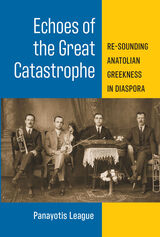 Echoes of the Great Catastrophe: Re-Sounding Anatolian Greekness in Diaspora
Panayotis League
University of Michigan Press, 2021 Echoes of the Great Catastrophe: Re-sounding Anatolian Greekness in Diaspora explores the legacy of the Great Catastrophe—the death and expulsion from Turkey of 1.5 million Greek Christians following the Greco-Turkish War of 1919–1922—through the music and dance practices of Greek refugees and their descendants over the last one hundred years. The book draws extensively on original ethnographic research conducted in Greece (on the island of Lesvos in particular) and in the Greater Boston area, as well as on the author’s lifetime immersion in the North American Greek diaspora. Through analysis of handwritten music manuscripts, homemade audio recordings, and contemporary live performances, the book traces the routes of repertoire and style over generations and back and forth across the Atlantic Ocean, investigating the ways that the particular musical traditions of the Anatolian Greek community have contributed to their understanding of their place in the global Greek diaspora and the wider post-Ottoman world. Alternating between fine-grained musicological analysis and engaging narrative prose, it fills a lacuna in scholarship on the transnational Greek experience.
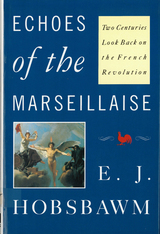 Echoes of the Marseillaise: Two Centuries Look Back on the French Revolution
Hobsbawm, Eric
Rutgers University Press, 1990
"The French Revolution," writes Hobsbawm, "gave peoples the sense that history could be changed by their action ... [and] demonstrated the power of the common people in a manner which no subsequent government has ever allowed itself to forget."
We can learn a great deal from studying the French Revolution itself, but we can also learn from studying the ways in which scholars have interpreted the French Revolution, and from the ways their views have changed. For over a century following the Revolution, commentators and scholars spoke of it in glowing terms. But in the past three decades, revisionist historians have become skeptical. Eric Hobsbawm reiterates the centrality of the Revolution for history on a global basis. He argues that those who wrote about the Revolution in the nineteenth century were convinced it had changed their lives dramatically, improving the economy and the lot of peasants. They saw the Revolution as a prototype of of the bourgeois revolution, enabling the middle class to gain power from the ruling class of aristocrats. Many believed proletarian revolutions would inevitably follow. In the years between 1917 and the 1960s, Marxists continued to use the French Revolution as a point of reference, paying increasing attention to the social and economic factors in the Revolution, not only to the political factors. In the 1970s and 1980s, many historians began to argue that the Revolution achieved modest results at disproportionate costs. Hobsbawm argues that this massive historiographical reaction against the centrality of the Revolution reflects the personal politics of those contemporary historians for whom Marxism and communism are now out of favor. They are, he maintains, wrong. The Revolution transformed the world permanently and introduced forces that continue to transform it.
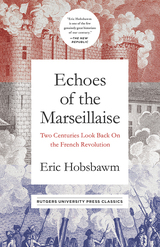 Echoes of the Marseillaise: Two Centuries Look Back on the French Revolution
Hobsbawm, Eric
Rutgers University Press, 2019 What was the French Revolution? Was it the triumph of Enlightenment humanist principles, or a violent reign of terror? Did it empower the common man, or just the bourgeoisie? And was it a turning point in world history, or a mere anomaly?
E.J. Hobsbawm’s classic historiographic study—written at the very moment when a new set of revolutions swept through the Eastern Bloc and brought down the Iron Curtain—explores how the French Revolution was perceived over the following two centuries. He traces how the French Revolution became integral to nineteenth-century political discourse, when everyone from bourgeois liberals to radical socialists cited these historical events, even as they disagreed on what their meaning. And he considers why references to the French Revolution continued to inflame passions into the twentieth century, as a rhetorical touchstone for communist revolutionaries and as a boogeyman for social conservatives.
Echoes of the Marseillaise is a stimulating examination of how the same events have been reimagined by different generations and factions to serve various political agendas. It will give readers a new appreciation for how the French Revolution not only made history, but also shaped our fundamental notions about history itself.
Echoes of the Sunbird: An Anthology of Contemporary African Poetry
Don Burness
Ohio University Press, 1993 This volume presents a broad overview of the work of seven of Africa’s leading poets. Five of them have received international recognition: Niyi Osundare and Chinua Achebe, the Commonwealth Poetry Prize; Osundare and Antonio Jacinto, the Noma Prize; and Jose Craveirinha, the Camoes Prize. The poems concern political, personal, and social themes and are written with aesthetic simplicity and lyricism. The contributors believe that poets, rather than being exiles from their communities, are prophets, seers, and singers and have a place in everyday life. Most of the poems have been published previously. Several, however, are new, and their appearance in this volume along with an introductory essay written by each poet, makes this anthology important, original, and fresh.
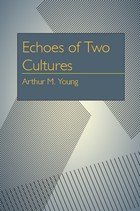 Echoes of Two Cultures
Arthur Milton Young
University of Pittsburgh Press, 1964 The theme of Echoes of Two Cultures is the transmission of two cultures through legend, how the ideals and moralities of ancient Greece and Rome have inspired and informed successive civilizations to the present day.
The legends of Cyrus the Great, from the early Greek world, and Lucretia, of early Rome, recount stories of transgression of rights; the first against a people, the second against an individual. The Greeks of the time of Cyrus, in the 5th century BC, believed that history taught them about an inexorable and divinely ordained law of ethics meant to punish the overweening transgressor. The citizens of Lucretia's Rome were motivated by a solemn respect for the sanctity of women and of the home. In both legends, it is an individual woman's courage and determination that brings the offender to his rightful doom, although, in the process of this retribution, both women suffer great loss.
Young shows how the telling of these great legends, which have gathered strength and beauty from each retelling, echo down through the centuries and throughout the Western World, influencing and enlightening societies and individuals.
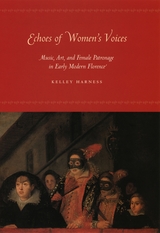 Echoes of Women's Voices: Music, Art, and Female Patronage in Early Modern Florence
Kelley Harness
University of Chicago Press, 2006 Aristocratic women exerted unprecedented political and social influence in Florence throughout the late sixteenth and early seventeenth centuries. During this period, female members of the powerful Medici family governed the city for the first and only time in its history. These women also helped shape the city's artistic life, commissioning works of music, art, and theater that were inscribed with their own concerns and aspirations. Echoes of Women's Voices examines the patronage of individuals and institutions, particularly convents, which have remained, until now, largely neglected by scholars.
Through commissions, patrons sought to promote a vision of the world and their place in it. The unique social norms, laws, educational backgrounds, and life experiences of female patrons meant the expression of a worldview that differed significantly from that of their male counterparts. Joining exceptional archival research with telling analysis of significant examples of music, art, and drama, Kelley Harness challenges the prevailing view that Florence saw a political and artistic decline during this period. She argues convincingly that the female domination of these years brought forth artistic patronage that was both continuous and well-conceived.
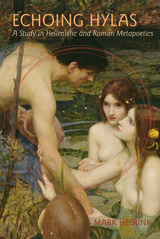 Echoing Hylas: A Study in Hellenistic and Roman Metapoetics
Mark Heerink
University of Wisconsin Press, 2015 During a stopover of the Argo in Mysia, the boy Hylas sets out to fetch water for his companion Hercules. Wandering into the woods, he arrives at a secluded spring, inhabited by nymphs who fall in love with him and pull him into the water. Mad with worry, Hercules stays in Mysia to look for the boy, but he will never find him again . . .
In Echoing Hylas, Mark Heerink argues that the story of Hylas—a famous episode of the Argonauts' voyage—was used by poets throughout classical antiquity to reflect symbolically on the position of their poetry in the literary tradition. Certain elements of the story, including the characters of Hylas and Hercules themselves, functioned as metaphors of the art of poetry. In the Hellenistic age, for example, the poet Theocritus employed Hylas as an emblem of his innovative
bucolic verse, contrasting the boy with Hercules, who symbolized an older, heroic-epic tradition. The Roman poet Propertius further developed and transformed Theocritus's metapoetical allegory by turning Heracles into an elegiac lover in pursuit of an unattainable object of affection. In this way, the myth of Hylas became the subject of a dialogue among poets across time, from the Hellenistic age to the Flavian era. Each poet, Heerink demonstrates, used elements of the myth to claim his own place in a developing literary tradition.
With this innovative diachronic approach, Heerink opens a new dimension of ancient metapoetics and offers many insights into the works of Apollonius of Rhodes, Theocritus, Virgil, Ovid, Valerius Flaccus, and Statius.
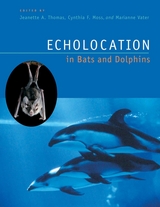 Echolocation in Bats and Dolphins
Edited by Jeanette A. Thomas, Cynthia F. Moss, and Marianne Vater
University of Chicago Press, 2003 Although bats and dolphins live in very different environments, are vastly different in size, and hunt different kinds of prey, both groups have evolved similar sonar systems, known as echolocation, to locate food and navigate the skies and seas. While much research has been conducted over the past thirty years on echolocation in bats and dolphins, this volume is the first to compare what is known about echolocation in each group, to point out what information is missing, and to identify future areas of research.
Echolocation in Bats and Dolphins consists of six sections: mechanisms of echolocation signal production; the anatomy and physiology of signal reception and interpretation; performance and cognition; ecological and evolutionary aspects of echolocation mammals; theoretical and methodological topics; and possible echolocation capabilities in other mammals, including shrews, seals, and baleen whales. Animal behaviorists, ecologists, physiologists, and both scientists and engineers who work in the field of bioacoustics will benefit from this book.
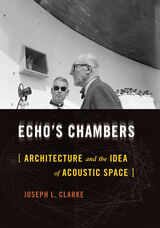 Echo's Chambers: Architecture and the Idea of Acoustic Space
Joseph L. Clarke
University of Pittsburgh Press, 2021 Winner, 2022 Outstanding Academic Title, CHOICE Awards
A room’s acoustic character seems at once the most technical and the most mystical of concerns. Since the early Enlightenment, European architects have systematically endeavored to represent and control the propagation of sound in large interior spaces. Their work has been informed by the science of sound but has also been entangled with debates on style, visualization techniques, performance practices, and the expansion of the listening public. Echo’s Chambers explores how architectural experimentation from the seventeenth through the mid-twentieth centuries laid the groundwork for concepts of acoustic space that are widely embraced in contemporary culture. It focuses on the role of echo and reverberation in the architecture of Pierre Patte, Claude-Nicolas Ledoux, Carl Ferdinand Langhans, and Le Corbusier, as well as the influential acoustic ideas of Athanasius Kircher, Richard Wagner, and Marshall McLuhan. Drawing on interdisciplinary theories of media and auditory culture, Joseph L. Clarke reveals how architecture has impacted the ways we continue to listen to, talk about, and creatively manipulate sound in the physical environment.
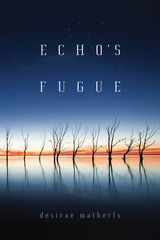 Echo's Fugue
Desirae Matherly
Ohio State University Press, 2019
Through a series of variations on the theme of love—unrequited, polyamorous, monogomous, scandalous, adulterous—Desirae Matherly’s Echo’s Fugue explores love in all its failures and delusions. Patterned on the unfinished The Art of Fugue by Johann Sebastian Bach which has been a mystery for centuries, Echo’s Fugue undertakes Bach’s project in prose—the tantalizing numerical correspondences throughout, the repetition of a single theme, the unfinished final piece.
Matherly’s essays appear as letters, indexes, narrative, or sentence diagrams, each defying the rules of the blank page. Song lyrics, obsession, Greek mythology, psychology, game theory, and human sexuality form a fragmented narrative about loss and unhealthy attachments. Mimicry of Bach’s fugues leads the author to questions about love, sex, desire, the “Bach or Stravinsky” paradigm in game theory, and relationships considered taboo by mainstream standards.
What authority speaks clearest with regard to love, sex, and desire—and is objectivity even possible? The final essay attempts to resolve this question while echoing the puzzle of Bach’s final unfinished fugue.
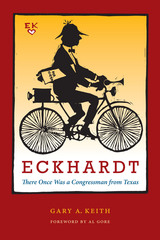 Eckhardt: There Once Was a Congressman from Texas
By Gary A. Keith
University of Texas Press, 2007 Runner-up, Violet Crown Award, Writer's League of Texas, 2008 Renowned for his "brilliant legislative mind" and political oratory—as well as for bicycling to Congress in a rumpled white linen suit and bow tie—U.S. Congressman Bob Eckhardt was a force to reckon with in Texas and national politics from the 1940s until 1980. A liberal Democrat who successfully championed progressive causes, from workers' rights to consumer protection to environmental preservation and energy conservation, Eckhardt won the respect of opponents as well as allies. Columnist Jack Anderson praised him as one of the most effective members of Congress, where Eckhardt was a national leader and mentor to younger congressmen such as Al Gore. In this biography of Robert Christian Eckhardt (1913-2001), Gary A. Keith tells the story of Eckhardt's colorful life and career within the context of the changing political landscape of Texas and the rise of the New Right and the two-party state. He begins with Eckhardt's German-American family heritage and then traces his progression from labor lawyer, political organizer, and cofounder of the progressive Texas Observer magazine to Texas state legislator and U.S. congressman. Keith describes many of Eckhardt's legislative battles and victories, including the passage of the Open Beaches Act and the creation of the Big Thicket National Preserve, the struggle to limit presidential war-making ability through the War Powers Act, and the hard fight to shape President Carter's energy policy, as well as Eckhardt's work in Texas to tax the oil and gas industry. The only thorough recounting of the life of a memorable, important, and flamboyant man, Eckhardt also recalls the last great era of progressive politics in the twentieth century and the key players who strove to make Texas and the United States a more just, inclusive society.
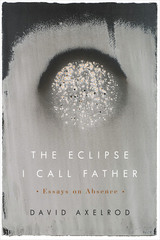 The Eclipse I Call Father: Essays on Absence
David Axelrod
Oregon State University Press, 2019 In The Eclipse I Call Father: Essays on Absence, David Axelrod recalls a balmy night in May 1970 when he vowed to allow no one and nothing he loves to pass from this life without praise, even if it meant praising the most bewildering losses. In each of these fourteen essays Axelrod delivers on that vow as he ranges across topics as diverse as marriage, Japanese poetry, Craftsman design, Old English riddles, racism, extinction, fatherhood, mountaineering, predatory mega-fauna, street fighting, trains, the Great Depression, and the effects of climate change—accretions of absence that haunt the writer and will likewise haunt readers.
The essays in this collection grew from a ten-year period when the author found himself periodically living and working abroad, wondering why foreign landscapes haunted him more than the familiar landscapes of the inland Pacific Northwest he called home. Each place had a long history of habitation, but at home he was blind, unable to see past the surfaces of things. Axelrod examines many aspects of that phenomenon in these pages, framing surface realities and imagining the scale and scope of that surface, but also trying to sense what is absent or changed, and how, despite its absence, the unseen accretes to ever-greater densities and persists as something uncanny.
Curious, alert, and keenly observant, these essays probe the boundaries between what is here and what is gone, what is present and what is past, in elegant prose. Readers familiar with Axelrod’s poetry will find a new facet of his lyrical gifts, while those encountering his work for the first time will be richly rewarded by the discovery of this Northwest literary talent.
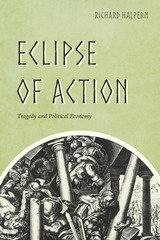 Eclipse of Action: Tragedy and Political Economy
Richard Halpern
University of Chicago Press, 2017 According to traditional accounts, the history of tragedy is itself tragic: following a miraculous birth in fifth-century Athens and a brilliant resurgence in the early modern period, tragic drama then falls into a marked decline. While disputing the notion that tragedy has died, this wide-ranging study argues that it faces an unprecedented challenge in modern times from an unexpected quarter: political economy.
Since Aristotle, tragedy has been seen as uniquely exhibiting the importance of action for human happiness. Beginning with Adam Smith, however, political economy has claimed that the source of happiness is primarily production. Eclipse of Action examines the tense relations between action and production, doing and making, in playwrights from Aeschylus, Marlowe, Shakespeare, and Milton to Beckett, Arthur Miller, and Sarah Kane. Richard Halpern places these figures in conversation with works by Aristotle, Smith, Hegel, Marx, Hannah Arendt, Georges Bataille, and others in order to trace the long history of the ways in which economic thought and tragic drama interact.
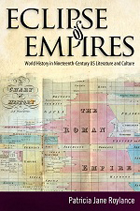 Eclipse of Empires: World History in Nineteenth-Century U.S. Literature and Culture
Patricia Jane Roylance
University of Alabama Press, 2013 Eclipse of Empires analyzes the nineteenth-century American fascination with what Patricia Jane Roylance calls “narratives of imperial eclipse,” texts that depict the surpassing of one great civilization by another.
Patricia Jane Roylance’s central claim in Eclipse of Empires is that historical episodes of imperial eclipse, for example Incan Peru yielding to Spain or the Ojibway to the French, heightened the concerns of many American writers about specific intranational social problems plaguing the nation at the time—race, class, gender, religion, economics. Given the eventual dissolution of great civilizations previously plagued by these very same problems, many writers, unlike those who confidently emphasized U.S. exceptionalism, exhibited both an anxiety about the stability of American society and a consistent practice of self-scrutiny in identifying the national defects that they felt could precipitate America’s decline.
Roylance studies, among other texts, James Fenimore Cooper’s The Water-Witch (1830) and The Bravo (1831), which address the eclipse of Venice by New York City as a maritime power in the eighteenth century; William Hickling Prescott’s Conquest of Peru (1847), which responds to widespread anxiety about communist and abolitionist threats to the U.S. system of personal property by depicting Incan culture as a protocommunist society doomed to failure; and Henry Wadsworth Longfellow’s The Song of Hiawatha (1855), which resists the total eclipse of Ojibwa culture by incorporating Ojibway terms and stories into his poem and by depicting the land as permanently marked by their occupation.
 Eclipse of the Assassins: The CIA, Imperial Politics, and the Slaying of Mexican Journalist Manuel Buendía
Russell H. Bartley and Sylvia Erickson Bartley
University of Wisconsin Press, 2015 This is a stellar, courageous work of investigative journalism and historical scholarship—grippingly told, meticulously documented, and doggedly pursued over thirty years. Tracking a Cold War confrontation that has compromised the national interests of both Mexico and the United States, Eclipse of the Assassins exposes deadly connections among historical events usually remembered as isolated episodes. Authors Russell and Sylvia Bartley shed new light on the U.S.-instigated “dirty wars” that ravaged all of Latin America in the 1960s, ’70s, and ’80s and reveal—for the first time—how Mexican officials colluded with Washington in its proxy contra war against the Sandinista government of Nicaragua. They draw together the strands of a clandestine web linking: - the assassination of prominent Mexican journalist Manuel Buendía
- the torture and murder of U.S. Drug Enforcement Administration agent Enrique Camarena
- the Iran-Contra scandal
- a major DEA sting against key CIA-linked Bolivian, Panamanian, and Mexican drug traffickers
- CIA-orchestrated suppression of investigative journalists
- criminal collusion of successive U.S. and Mexican administrations that has resulted in the unprecedented power of drug kingpins like “El Chapo” Guzmán.
Eclipse of the Assassins places a major political crime—the murder of Buendía—in its full historical perspective and shows how the dirty wars of the past are still claiming victims today. Best books for public & secondary school libraries from university presses, American Library Association
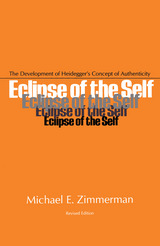 Eclipse of the Self: The Development of Heidegger’s Concept of Authenticity
Michael E. Zimmerman
Ohio University Press, 1986 Although it is sometimes said that Martin Heidegger’s later philosophy no longer concerned itself with the theme of authenticity so crucial to Being and Time (1927), this book argues that his interest in authenticity was always strong. After leaving the seminary to become a philosophy student, Heidegger began to “de–mythologize” religious themes for his own philosophical purposes. Like the Christian notion of faith, Heidegger’s notion of authenticity involves relinquishing the egotistical self–understanding which blocks our openness for possibilities. Yet authenticity as “resoluteness” includes an element of voluntarism foreign to the idea of faith. Heidegger’s brief engagement with National Socialism (1933–1934) helped him to re–think the Nietzschean concept of will which had influenced his early views on authenticity. Although part of the meaning of resoluteness is to allow things to be revealed, it also suggests that an individual can somehow will to be authentic. After about 1936, Heidegger emphasized that an individual can only be released from egoism (inauthenticity) by a power which transcends him. The abiding theological issue concerning the efficacy of works as against the saving power of grace finds expression in the distinction between resoluteness and releasement.
 Eclipse of the Sun: Boxing Poems
Red Shuttleworth
University of Nevada Press, 2023 A tribute to the improbable dreams of valiant men in a rough sport.
In this striking poetry collection, Red Shuttleworth, who holds the record as the oldest active boxer (professional or amateur), offers evocative imagery that unapologetically reveals the life of a boxer. From the inspiring hopes of an early career to agonizing defeats, the poems in Eclipse of the Sun take readers on a journey from moderate successes to the realization that a dream of a promising future has become the reality of the long haul of a journeyman. Along the way, Shuttleworth rubs elbows with greats like Muhammad Ali, Chickie Ferrara, and Ron Lyle, exposing the resolute path and difficult end of a hard-lived life.
This collection is an homage to boxing at its grittiest levels, and to fighters who persevere—with hope, blood, and bone—against sense and loss. Few professional boxers earn a living in the ring, and even fewer arrive in their forties with any money left from their sport. In this collection, boxers attain poverty rather than riches, end up in post-career menial jobs, and have no pension plan to fall back on. Shuttleworth’s poetry is a visceral inside look at the brutality and humanity at the heart of boxing.
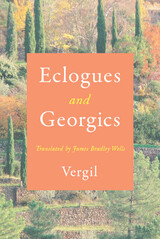 Eclogues and Georgics
Vergil, Translated by James Bradley Wells
University of Wisconsin Press, 2022 James Bradley Wells combines creative practice and intimate knowledge of contemporary poetry and classical antiquity in this thought-provoking new translation of two early works by ancient Rome’s most well-known and most esteemed poet, Vergil’s Eclogues and Georgics. With its emphasis on the musicality of English, Wells’s translations honor the original spirit of Latin poetry as both a written and performance-based art form.
The accompanying introductory essays situate Vergil’s poems in a rich literary tradition. Wells provides historical context and literary analysis of these two works, eschewing facile interpretations of these oft examined texts and ensconcing them in the society and culture from which they originated. These annotated essays, a pronunciation guide, and a glossary, alongside Wells’s bold vision for what translation choices can reveal, guide readers as they explore this ancient and famously difficult poetry.
|
|
